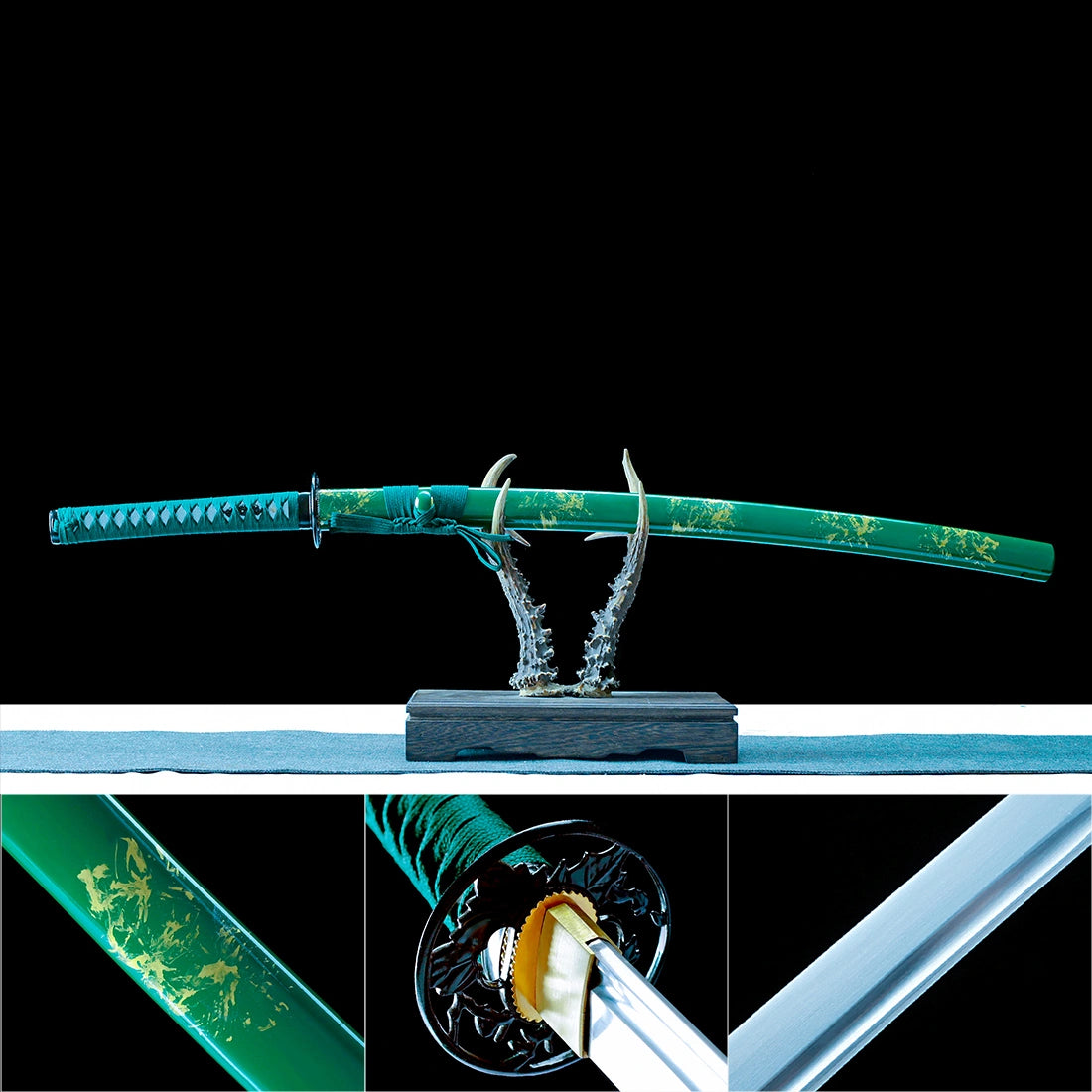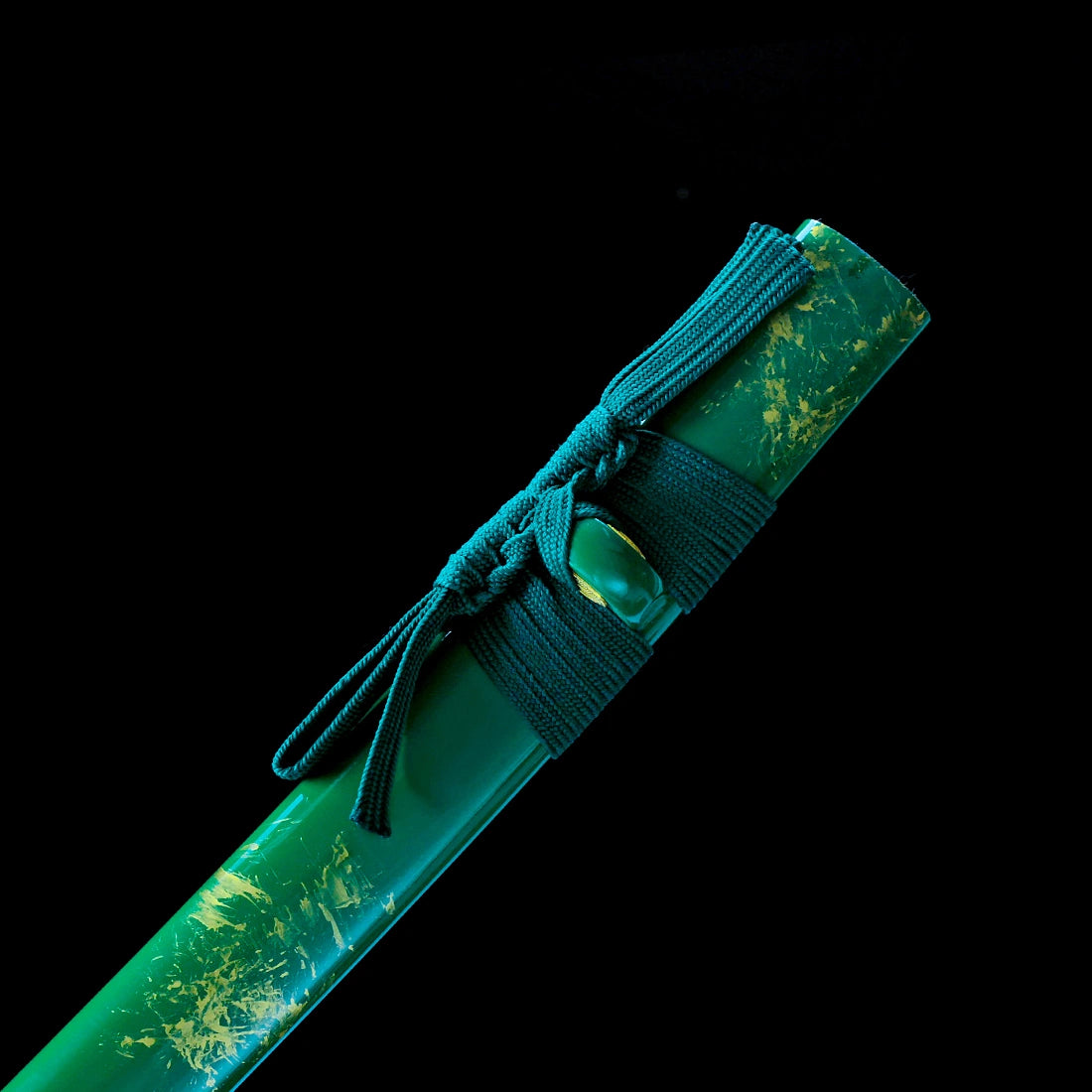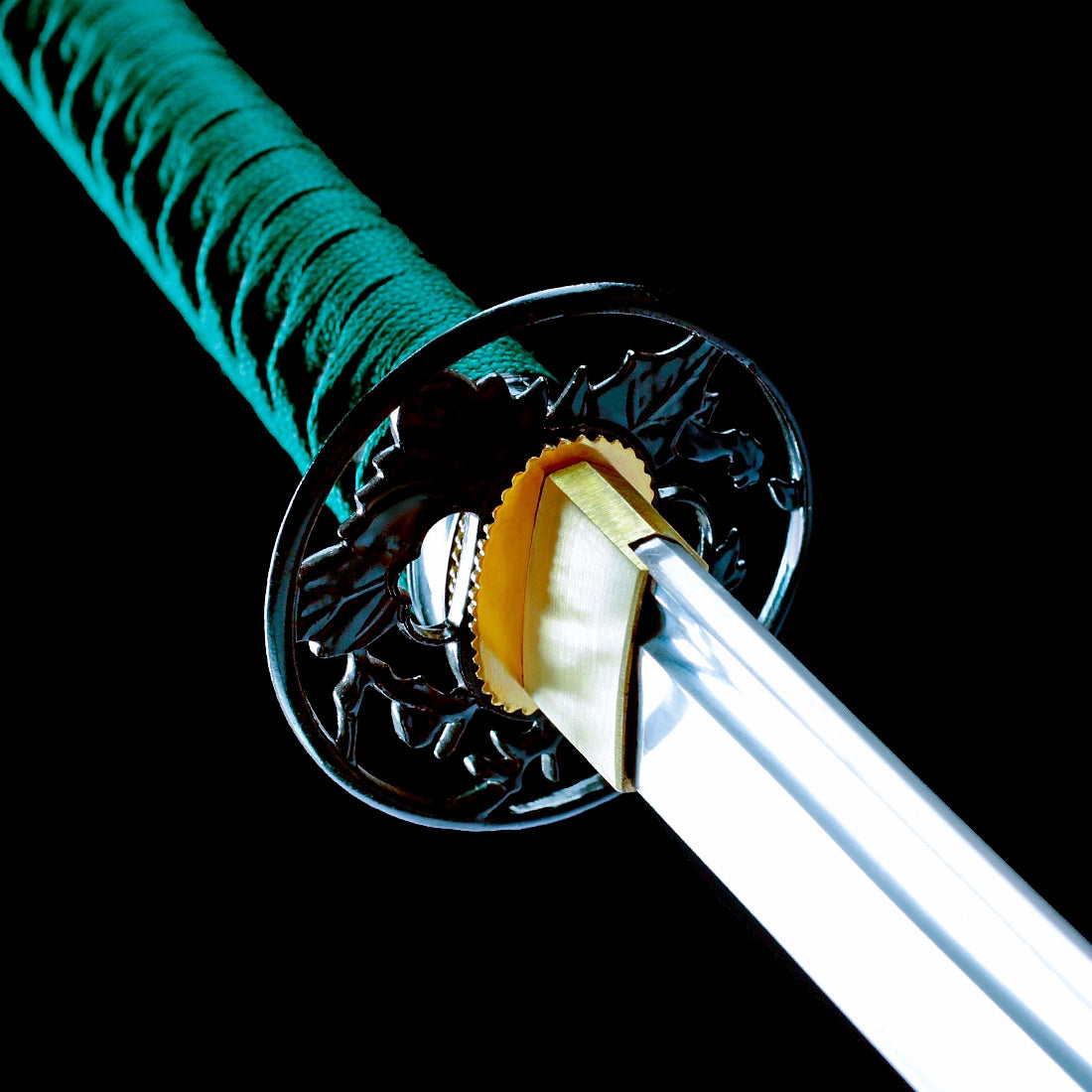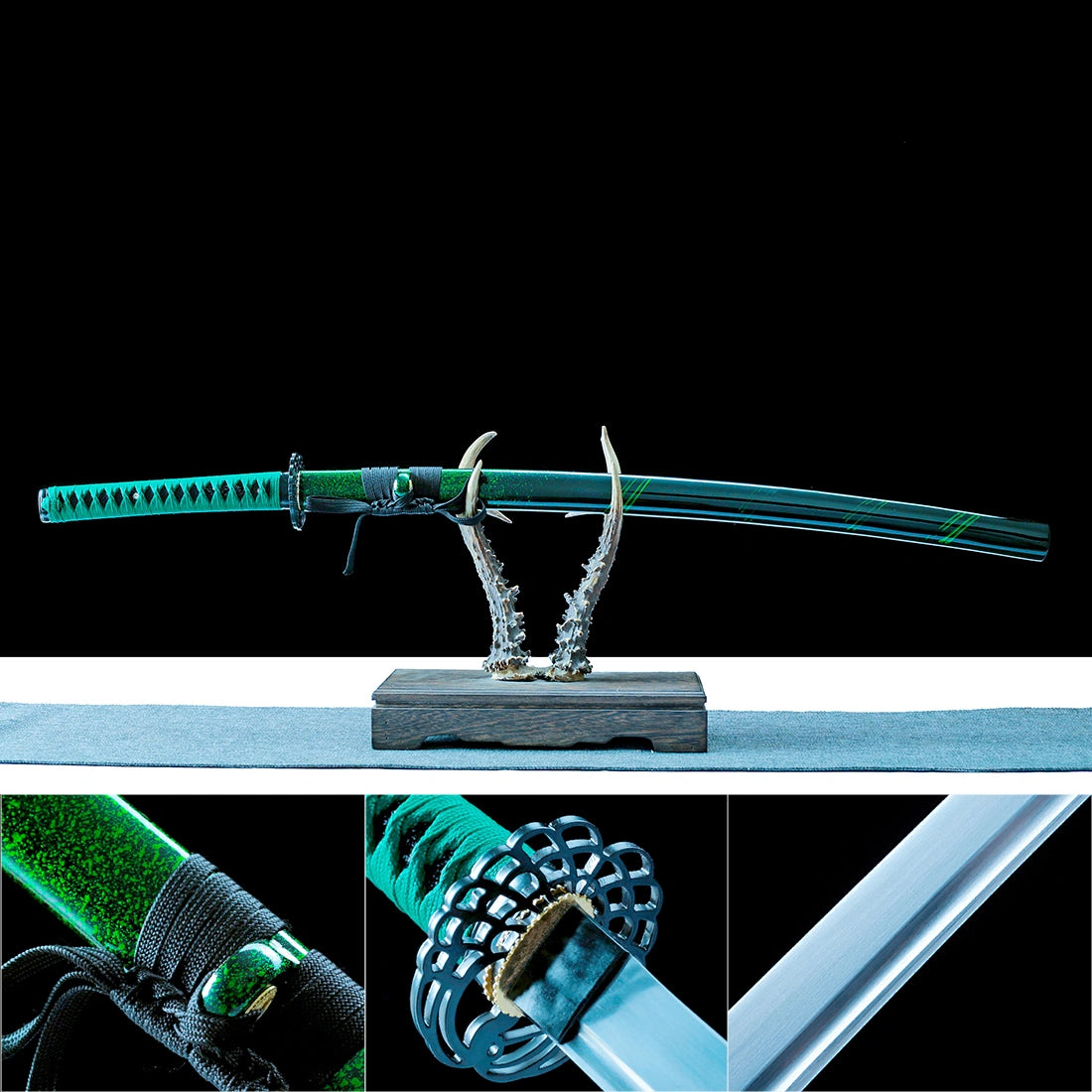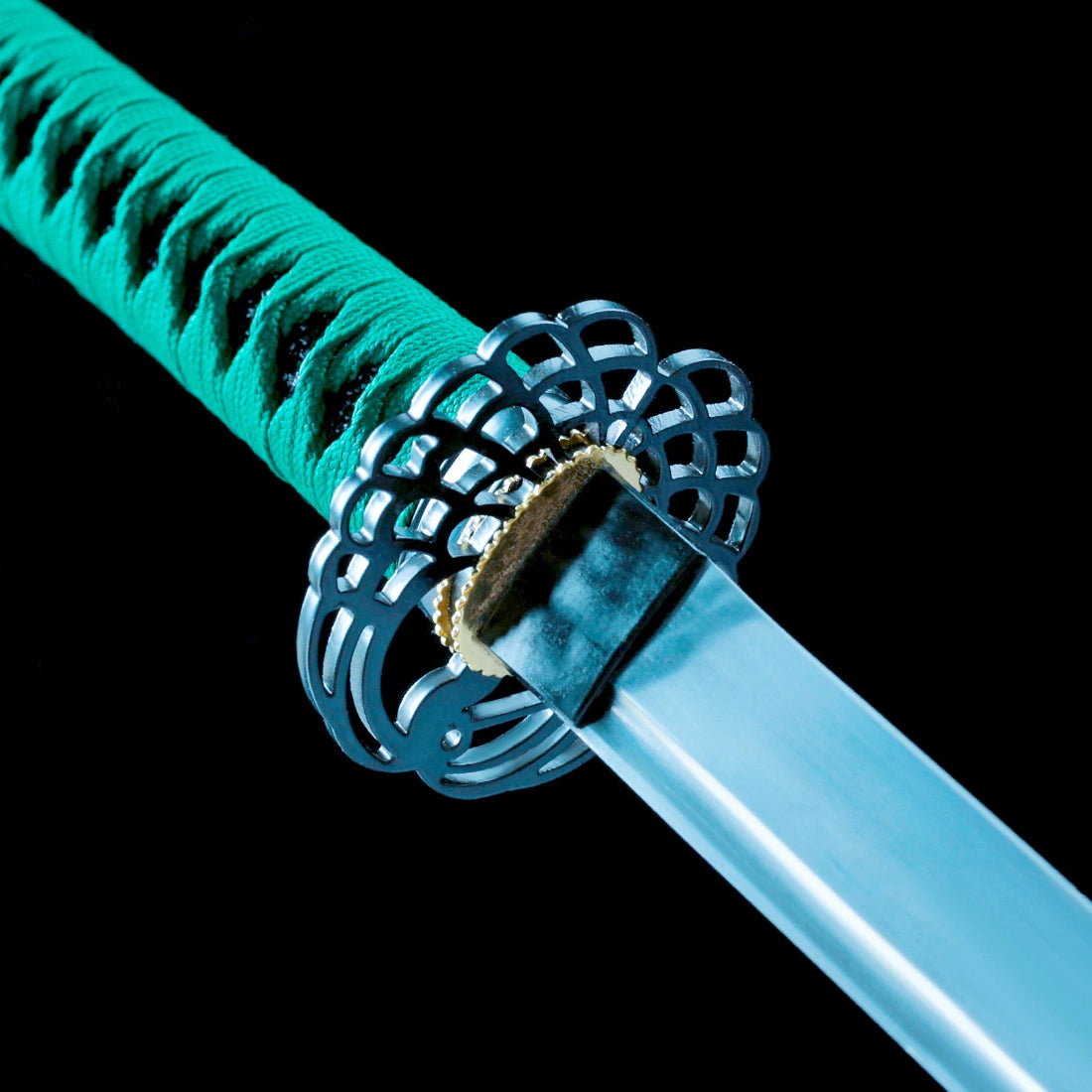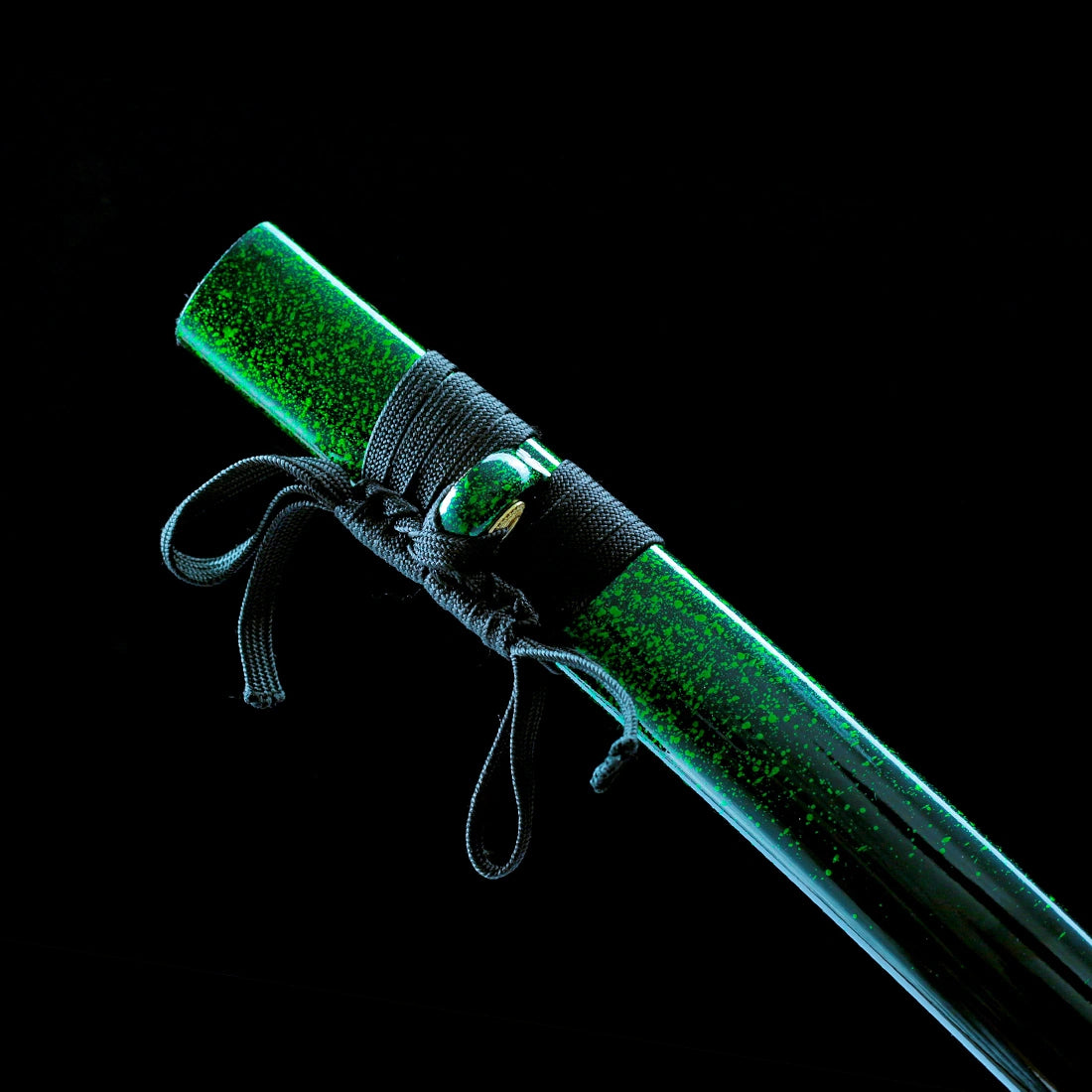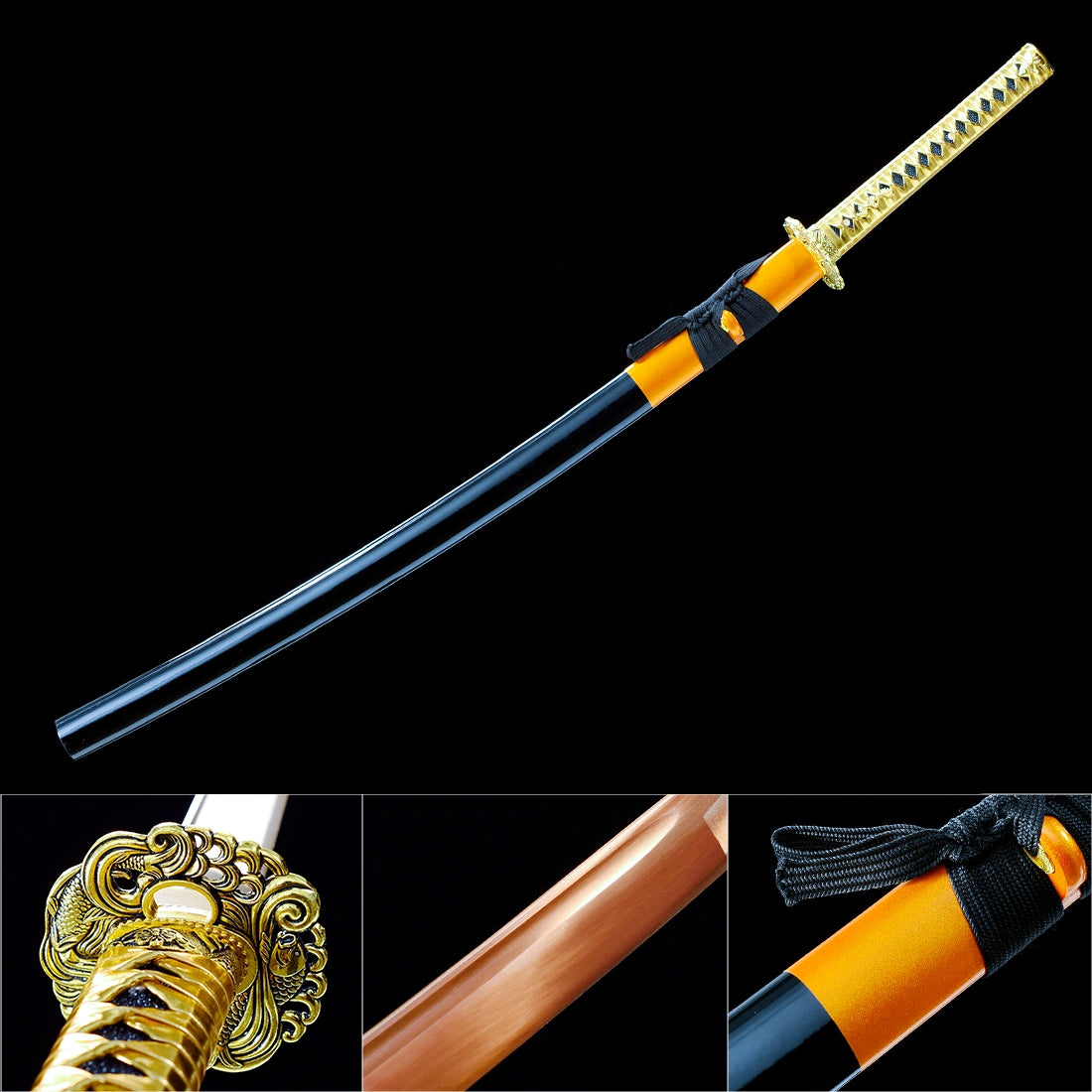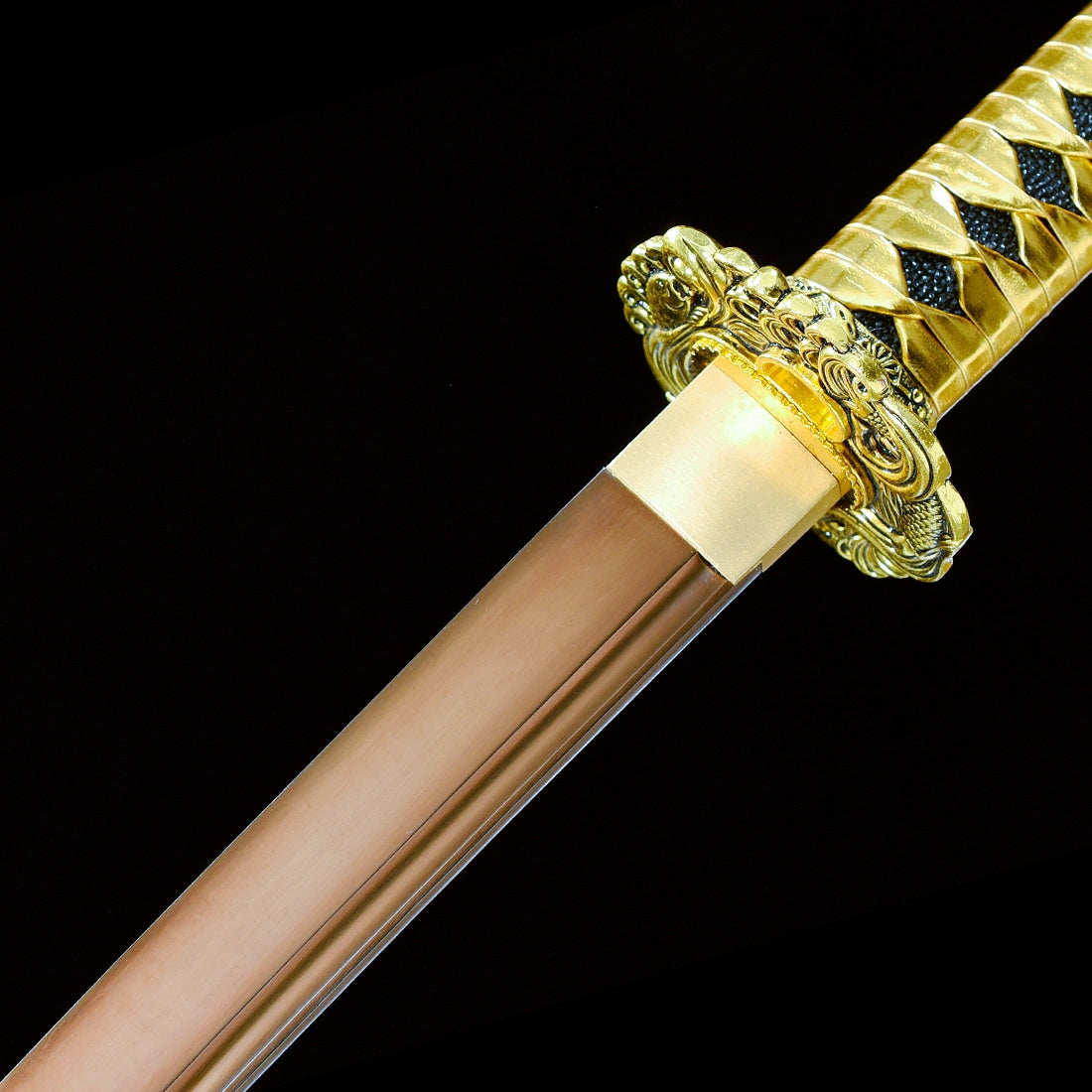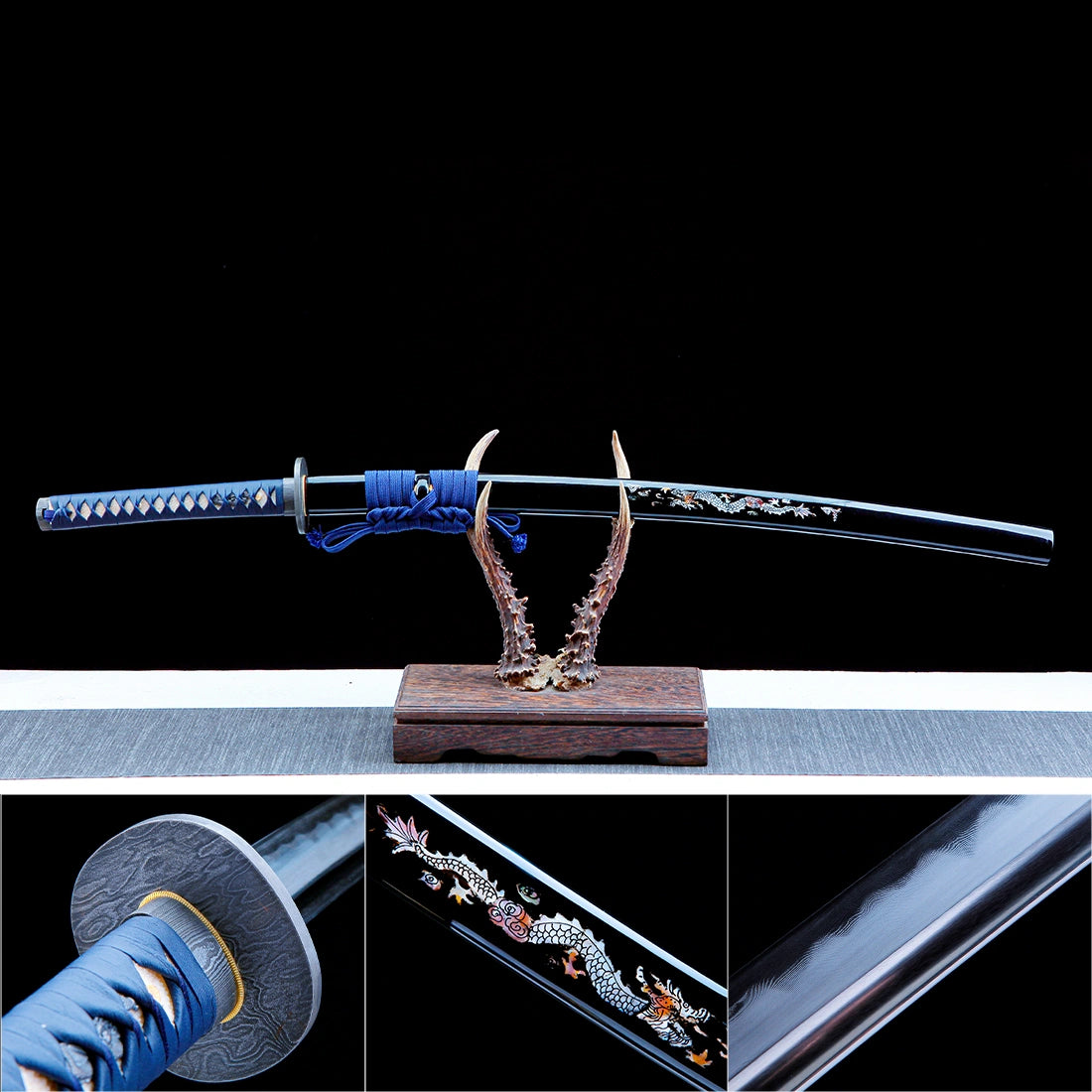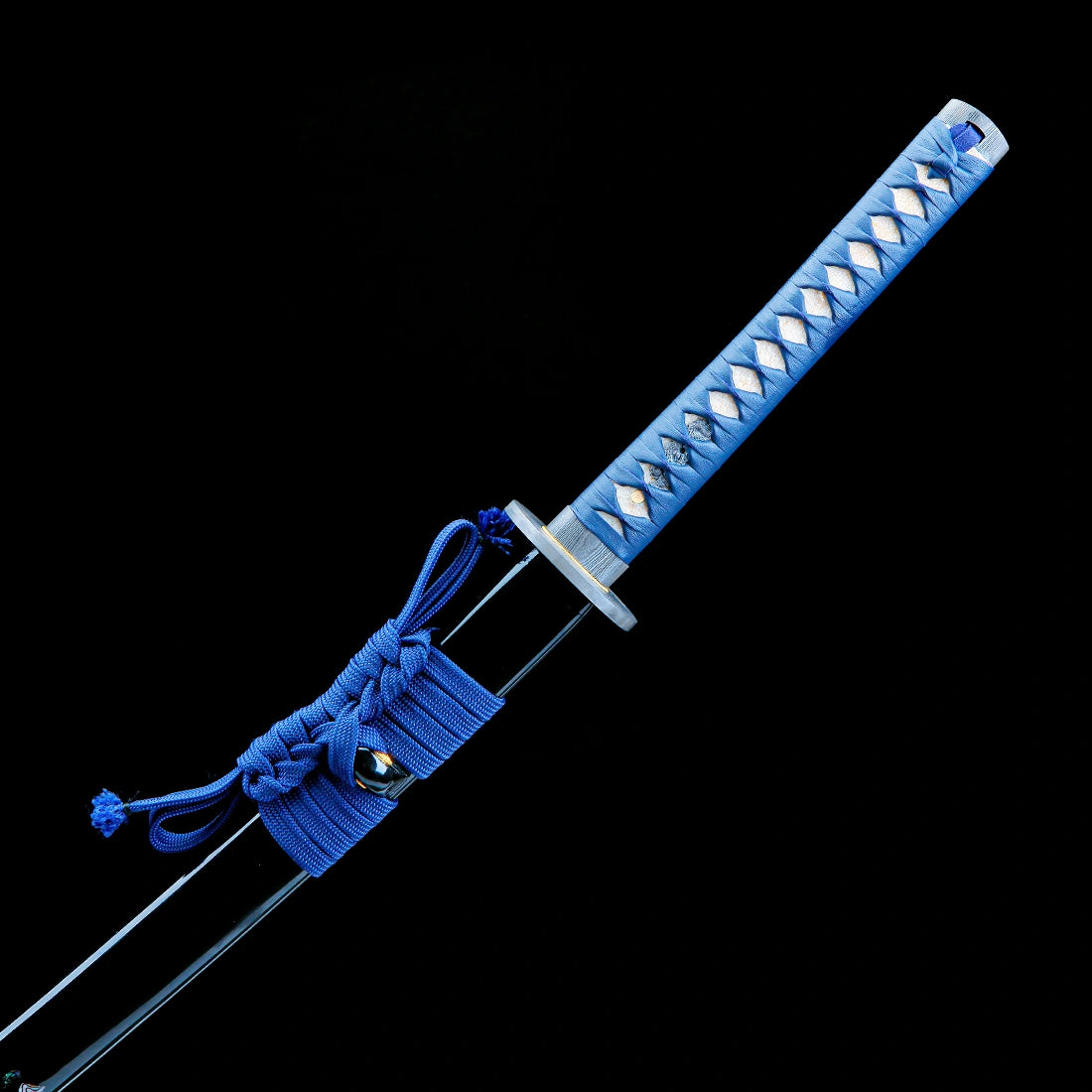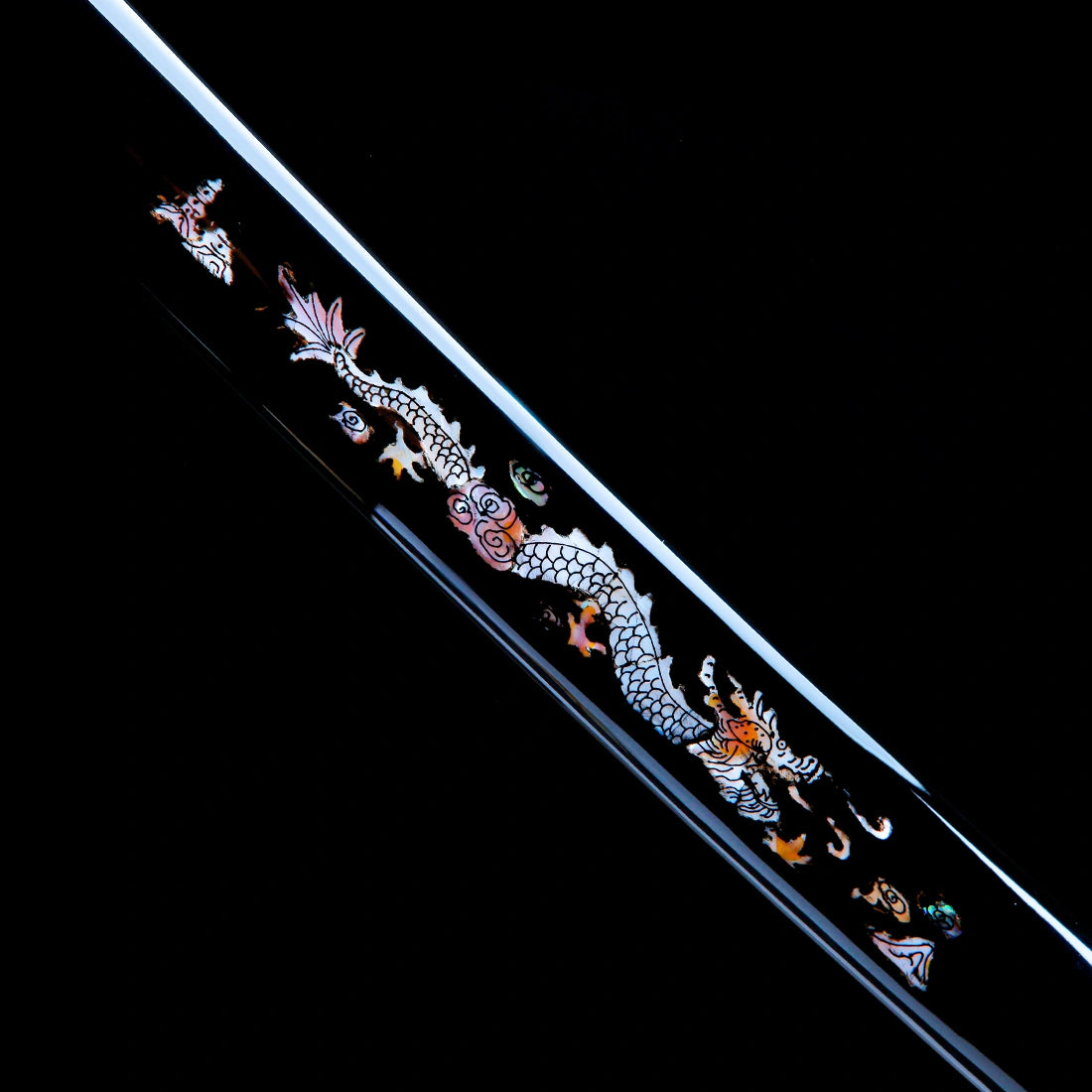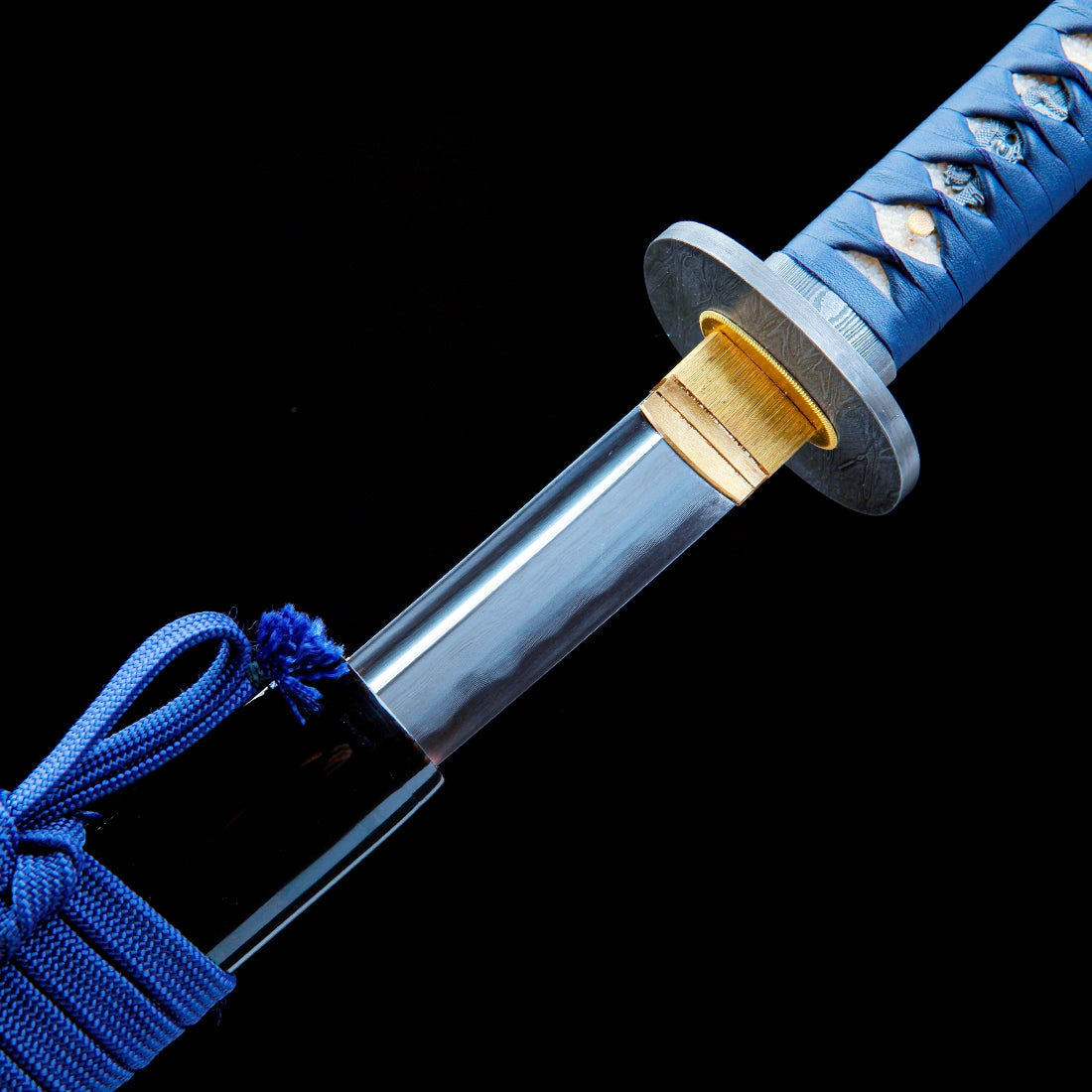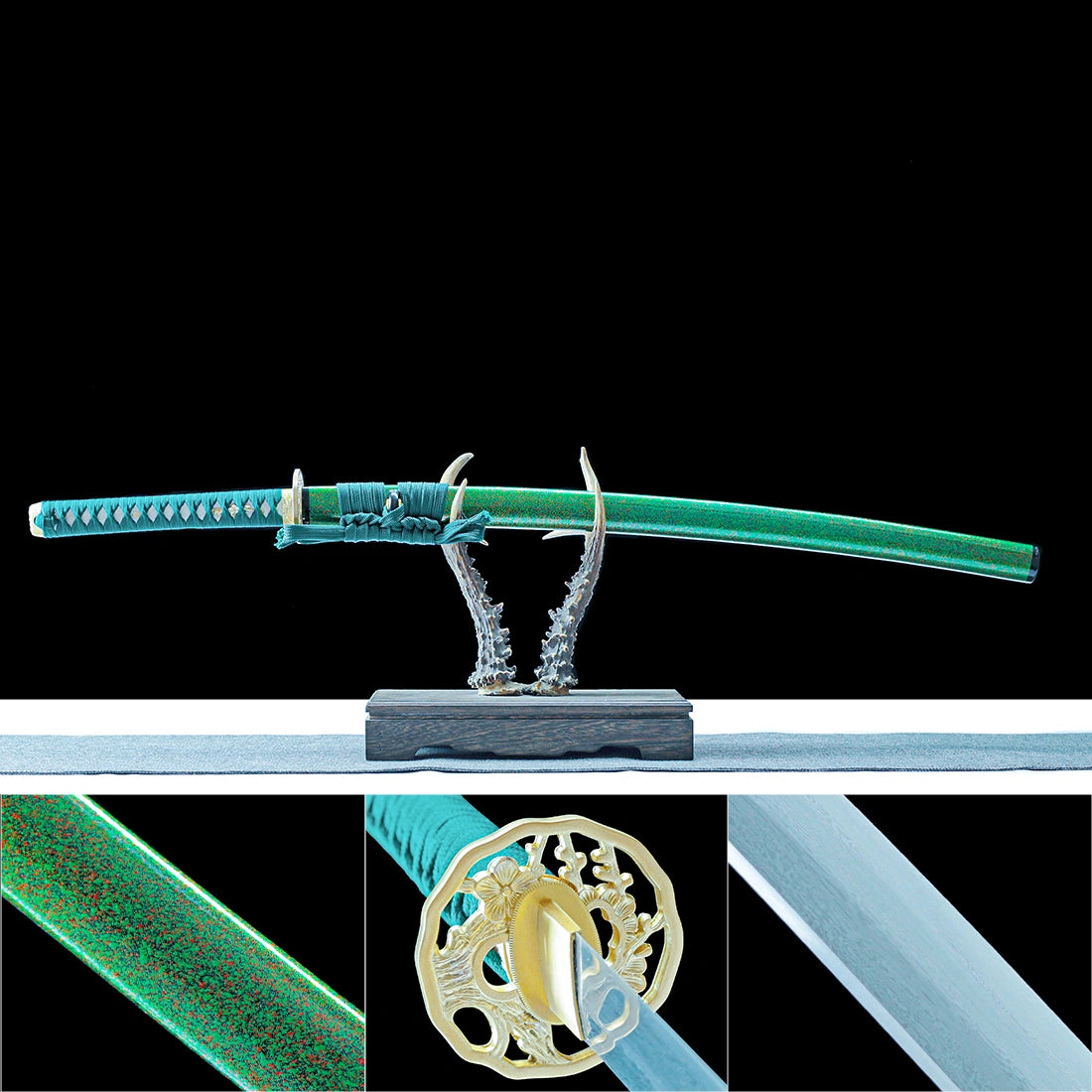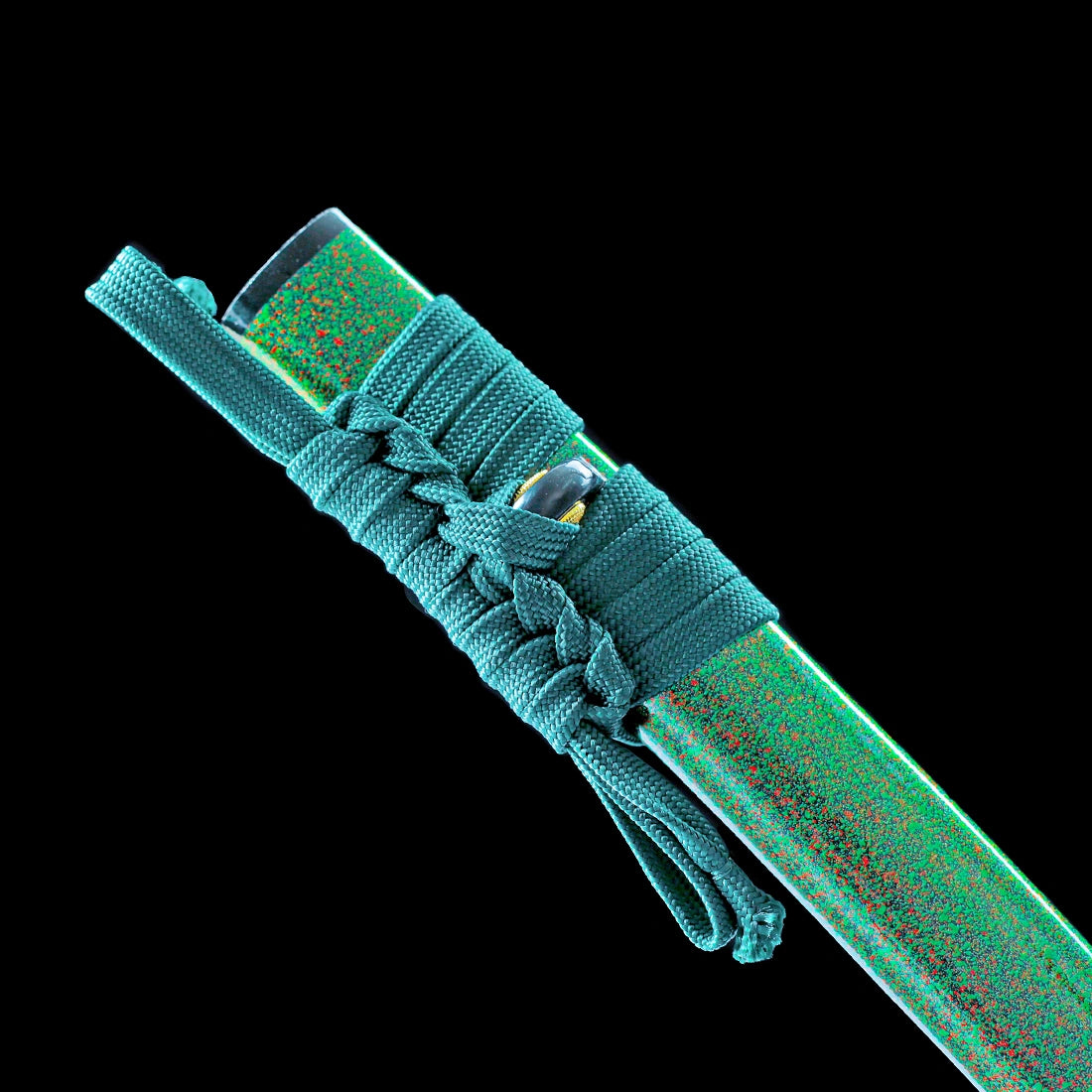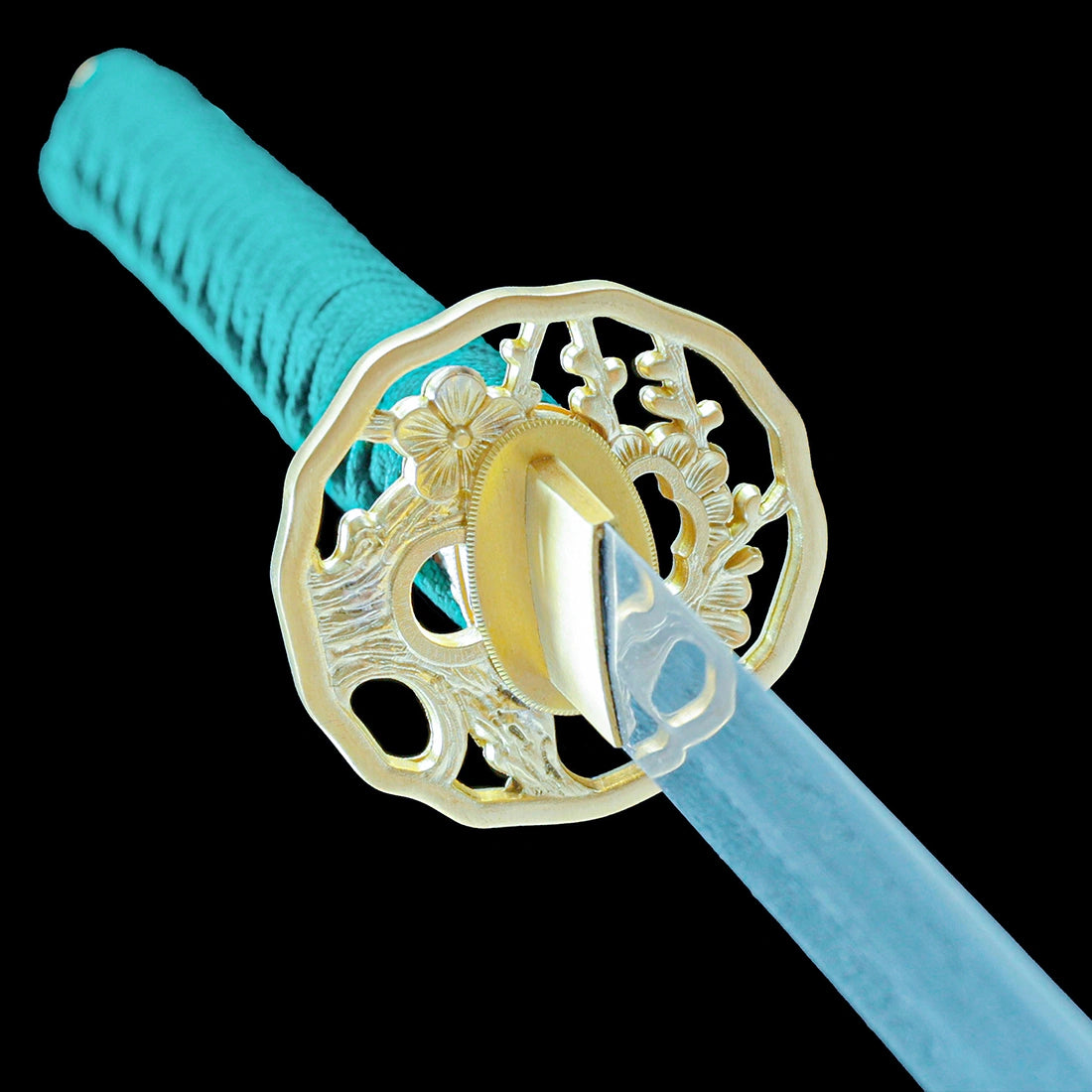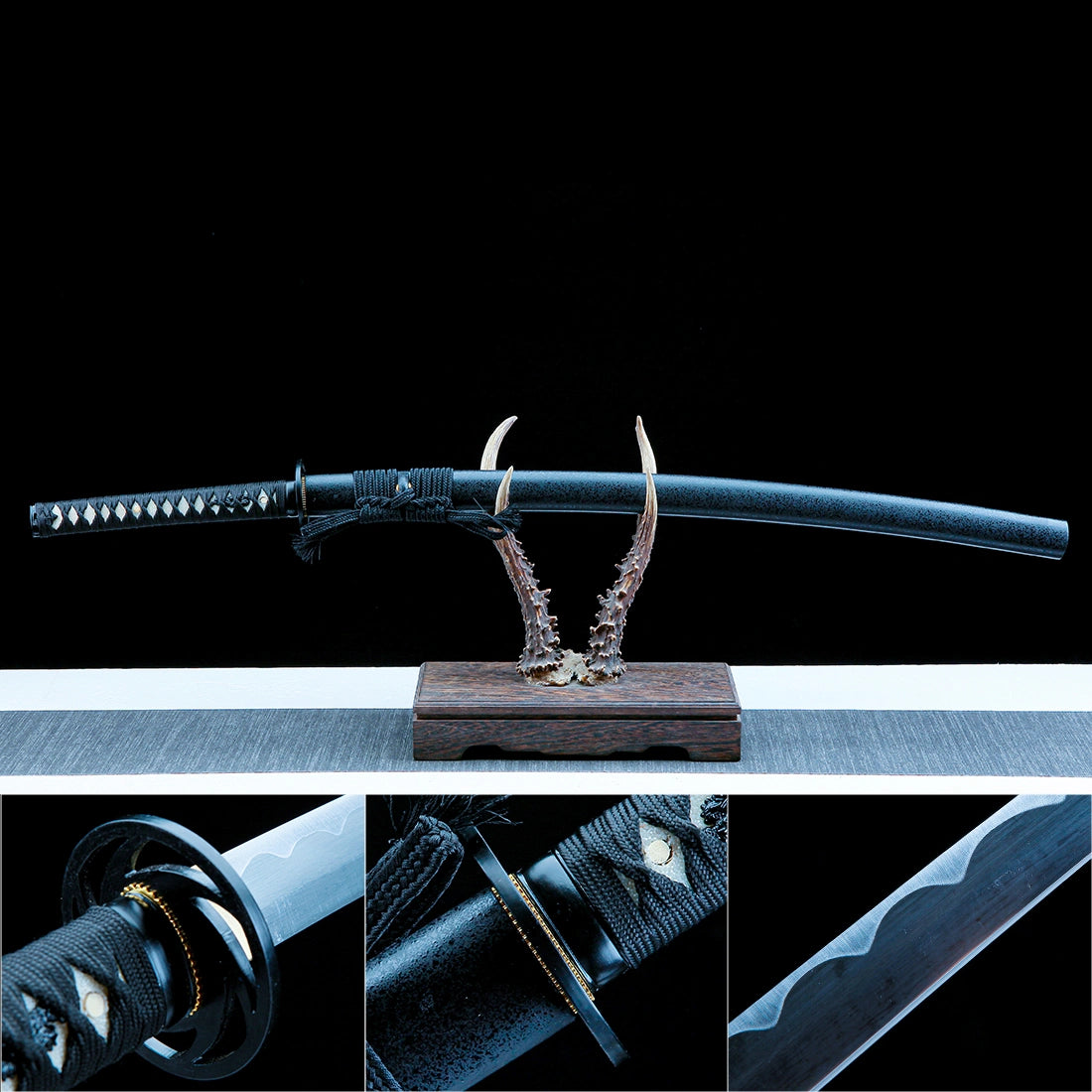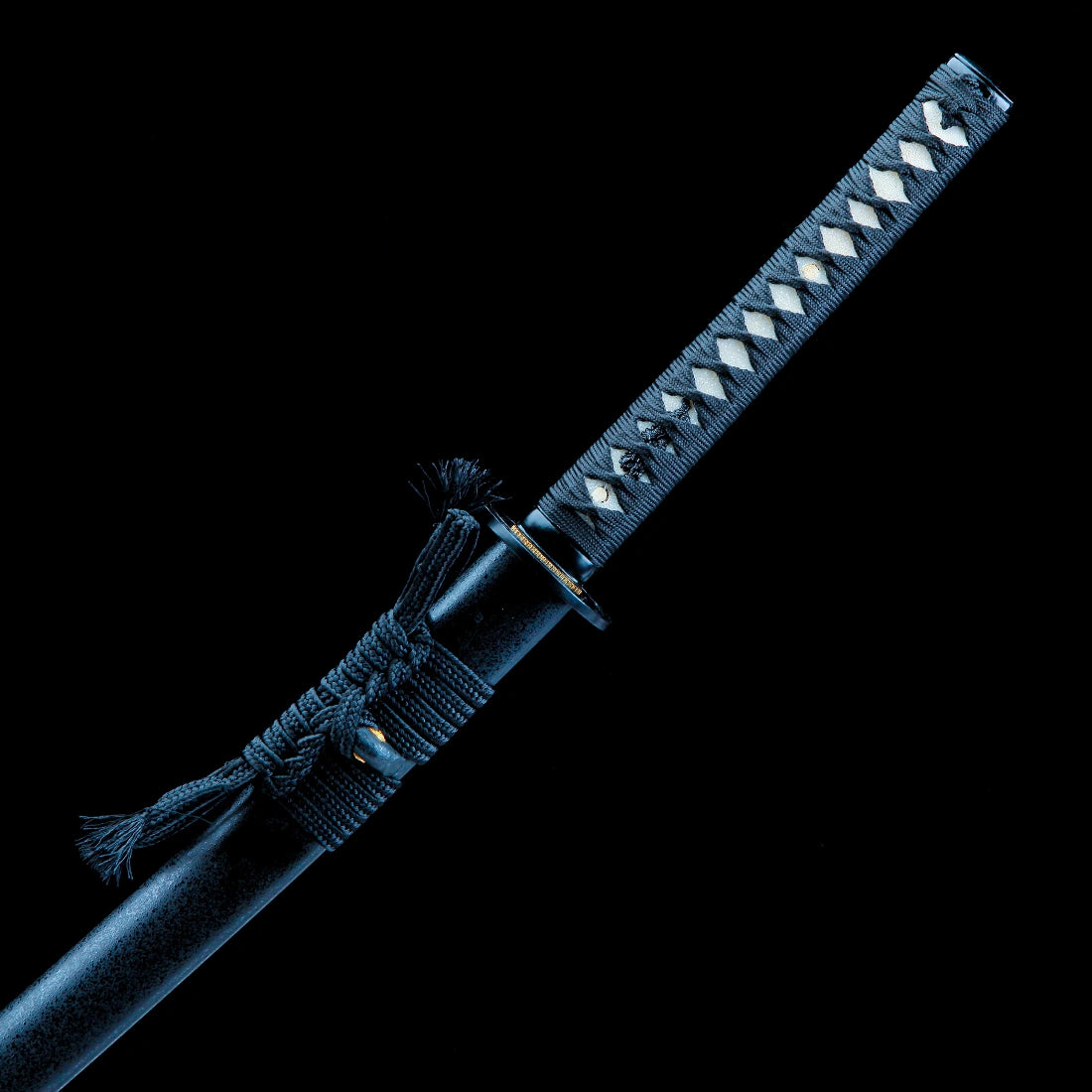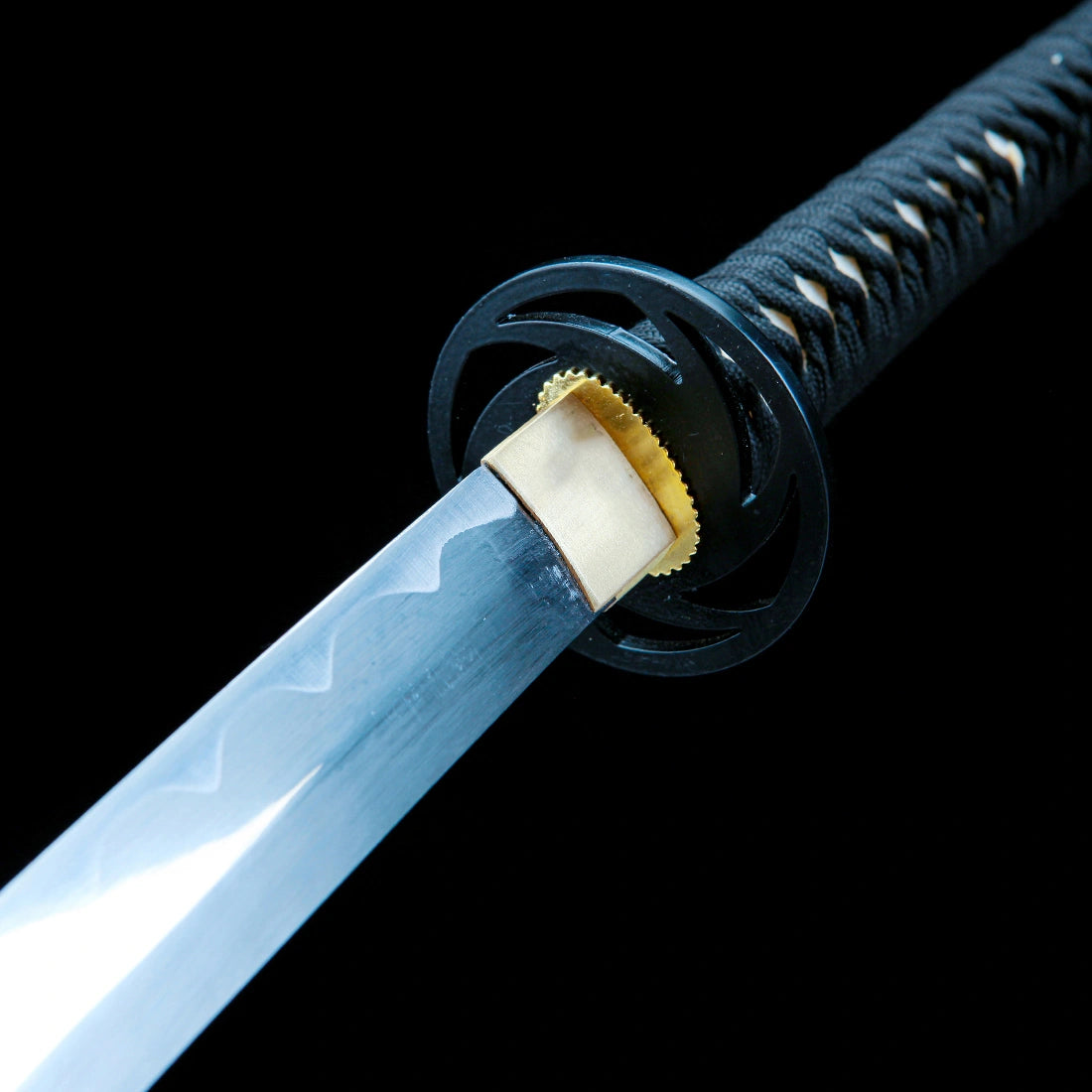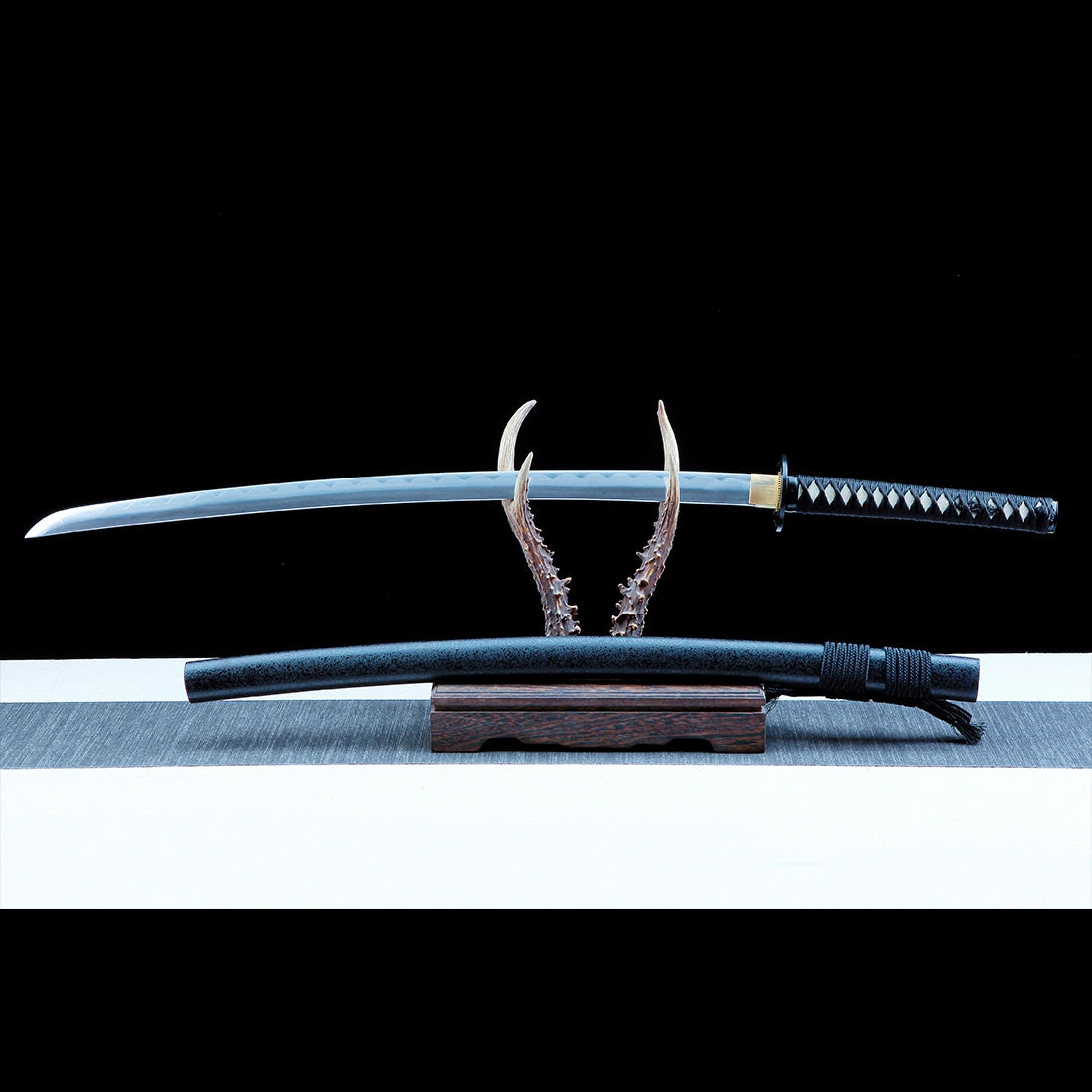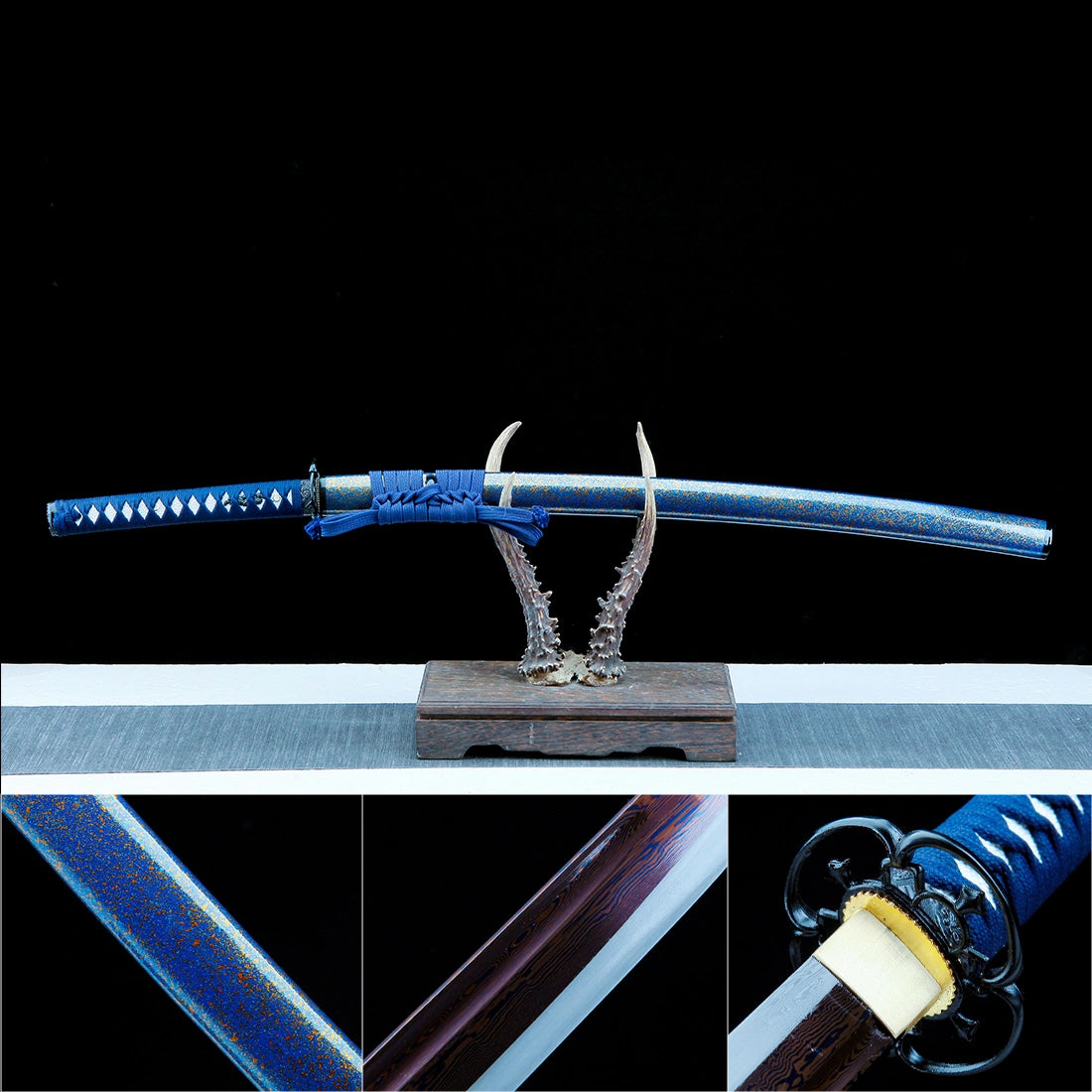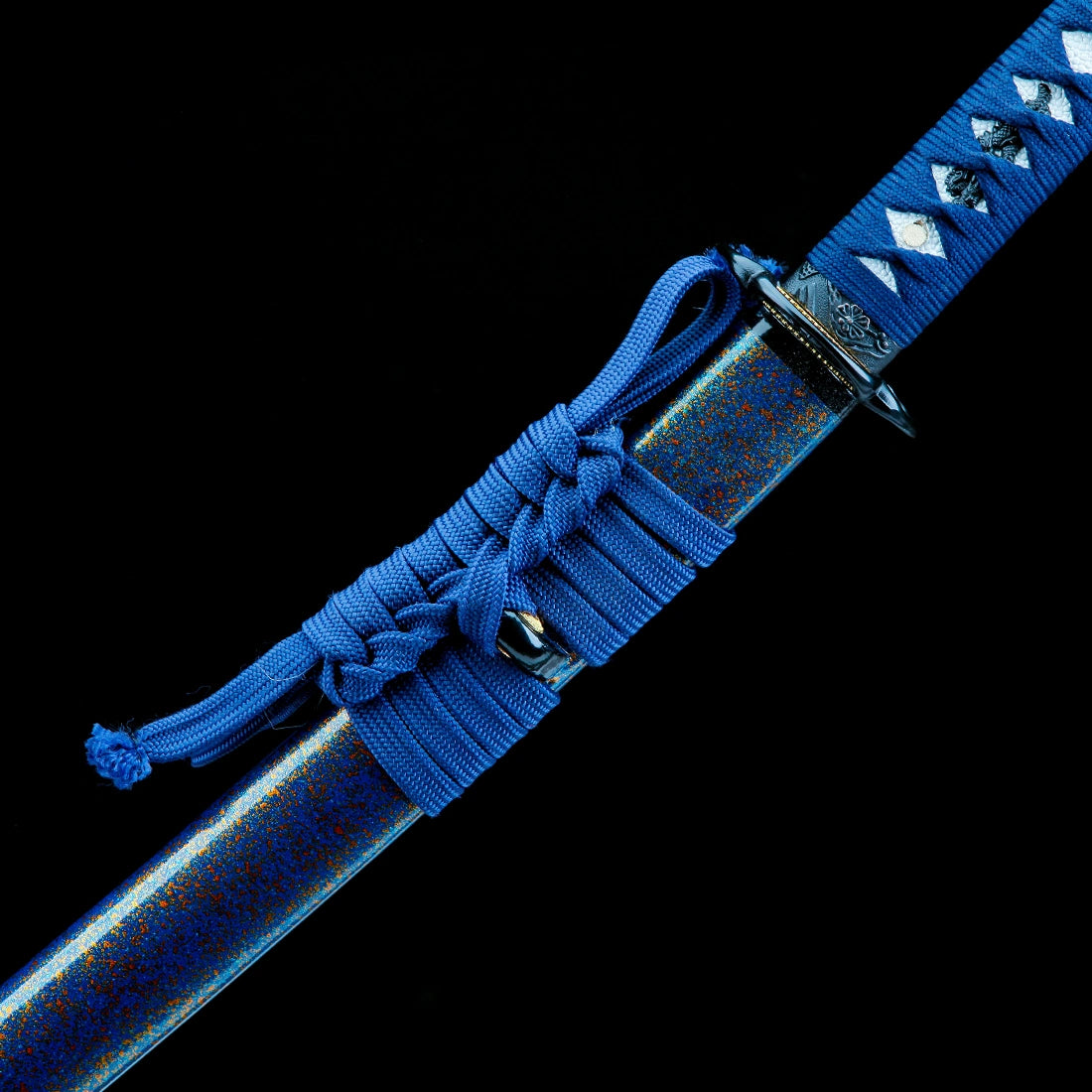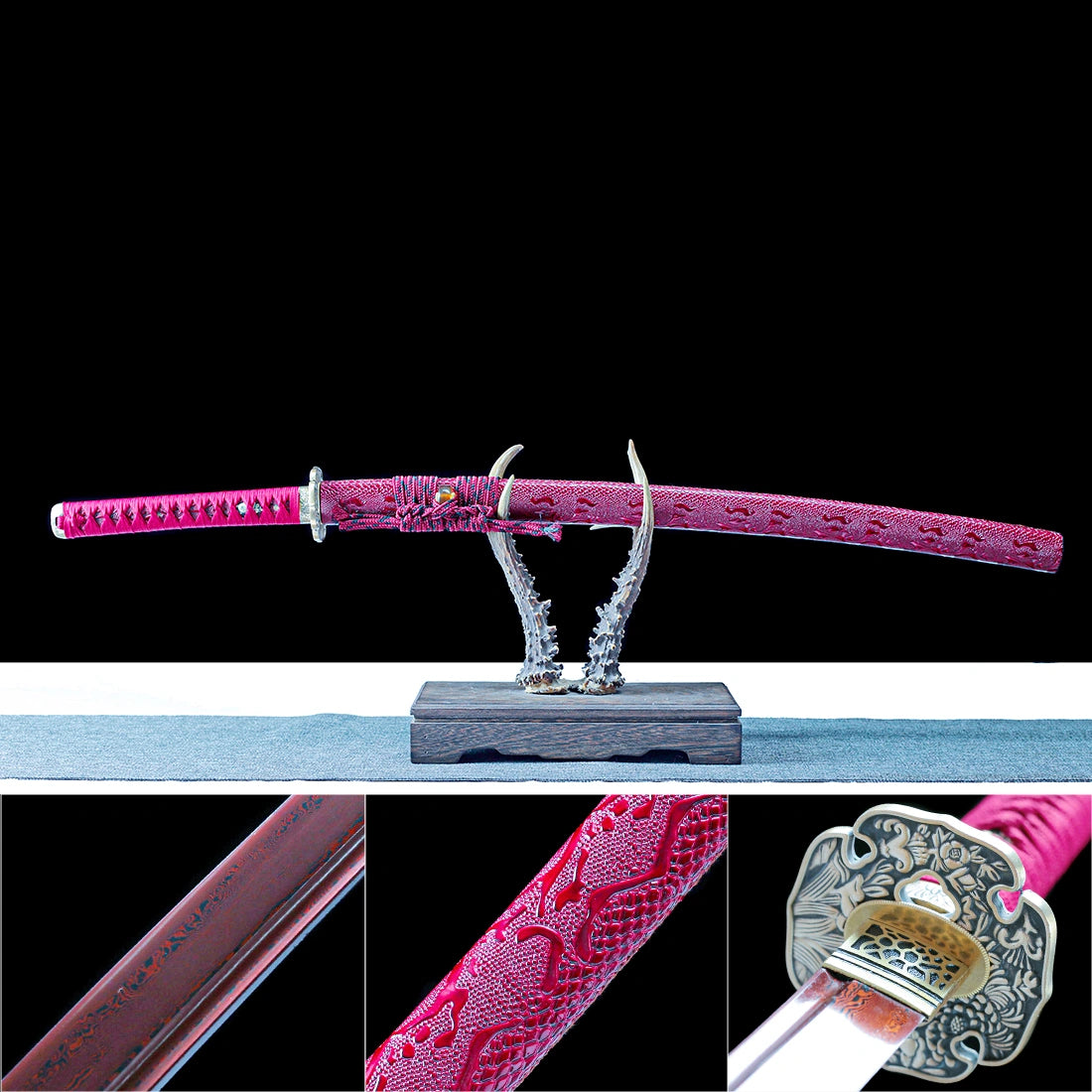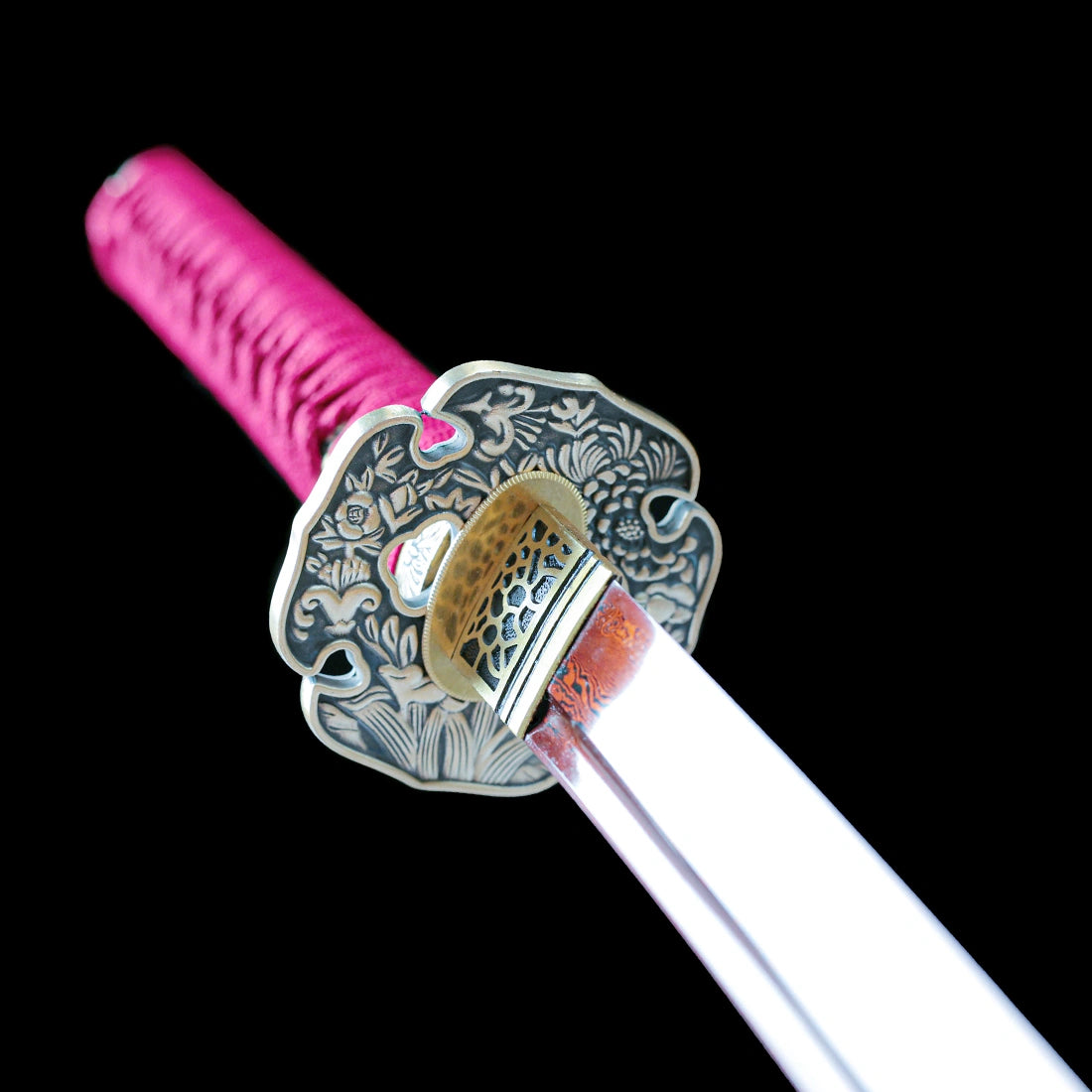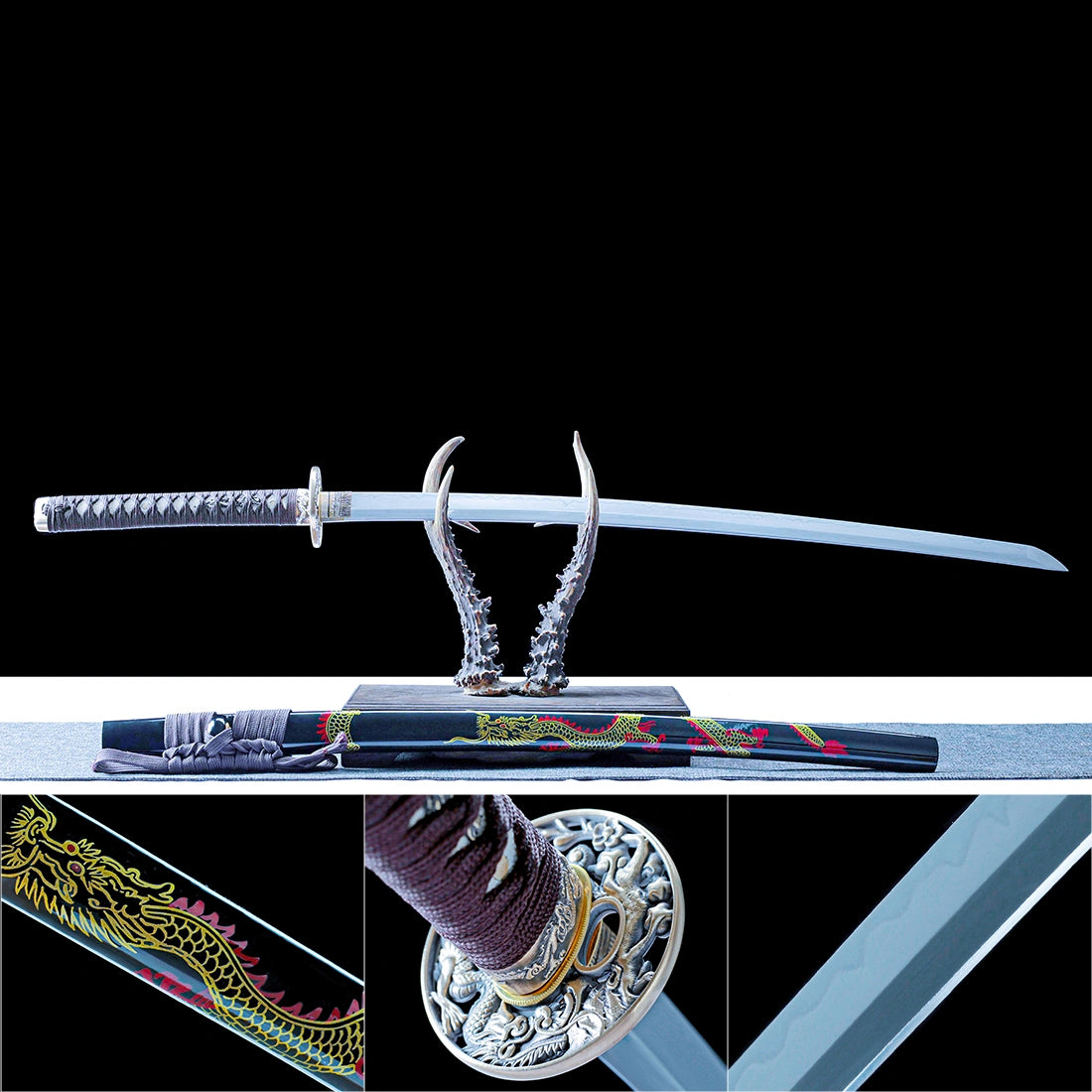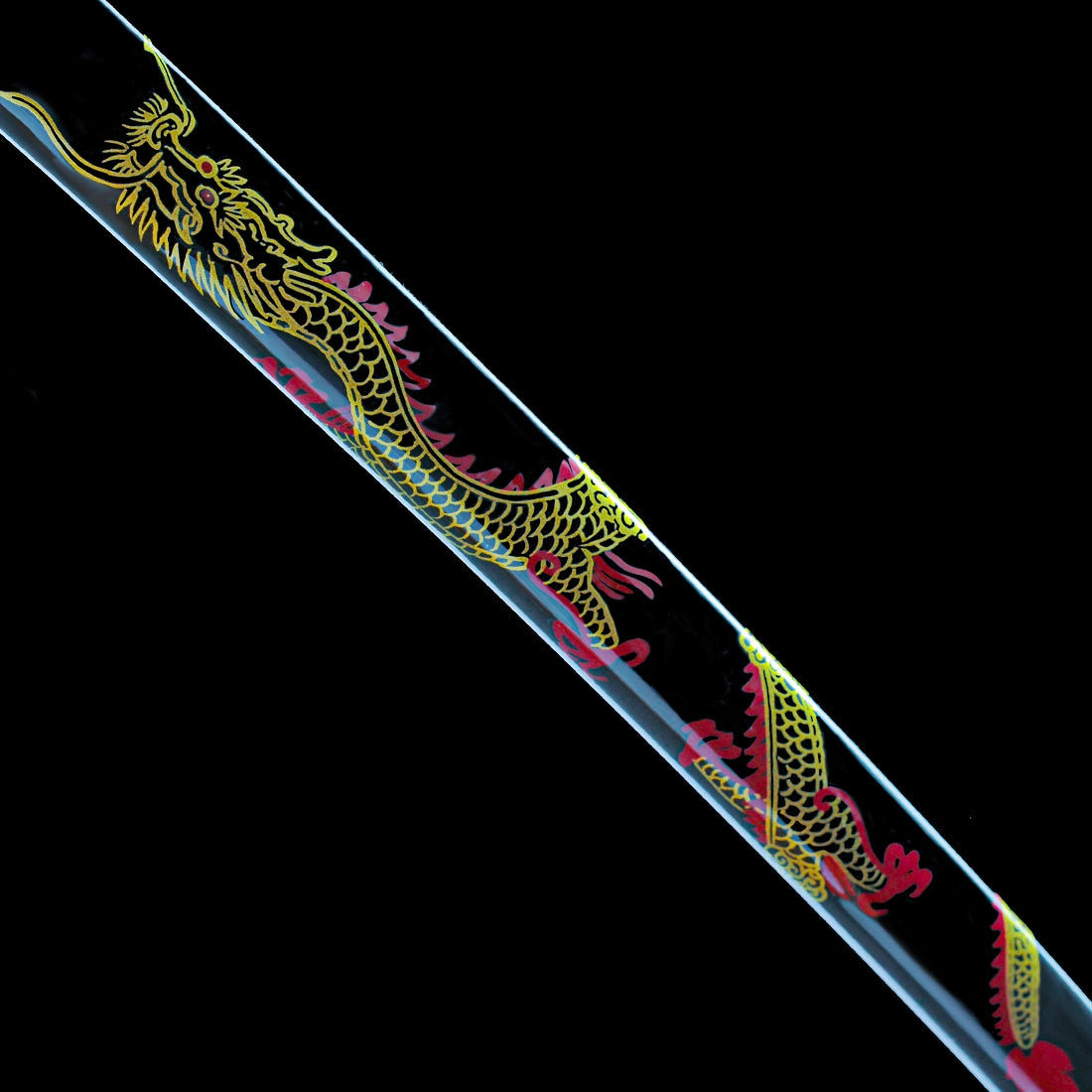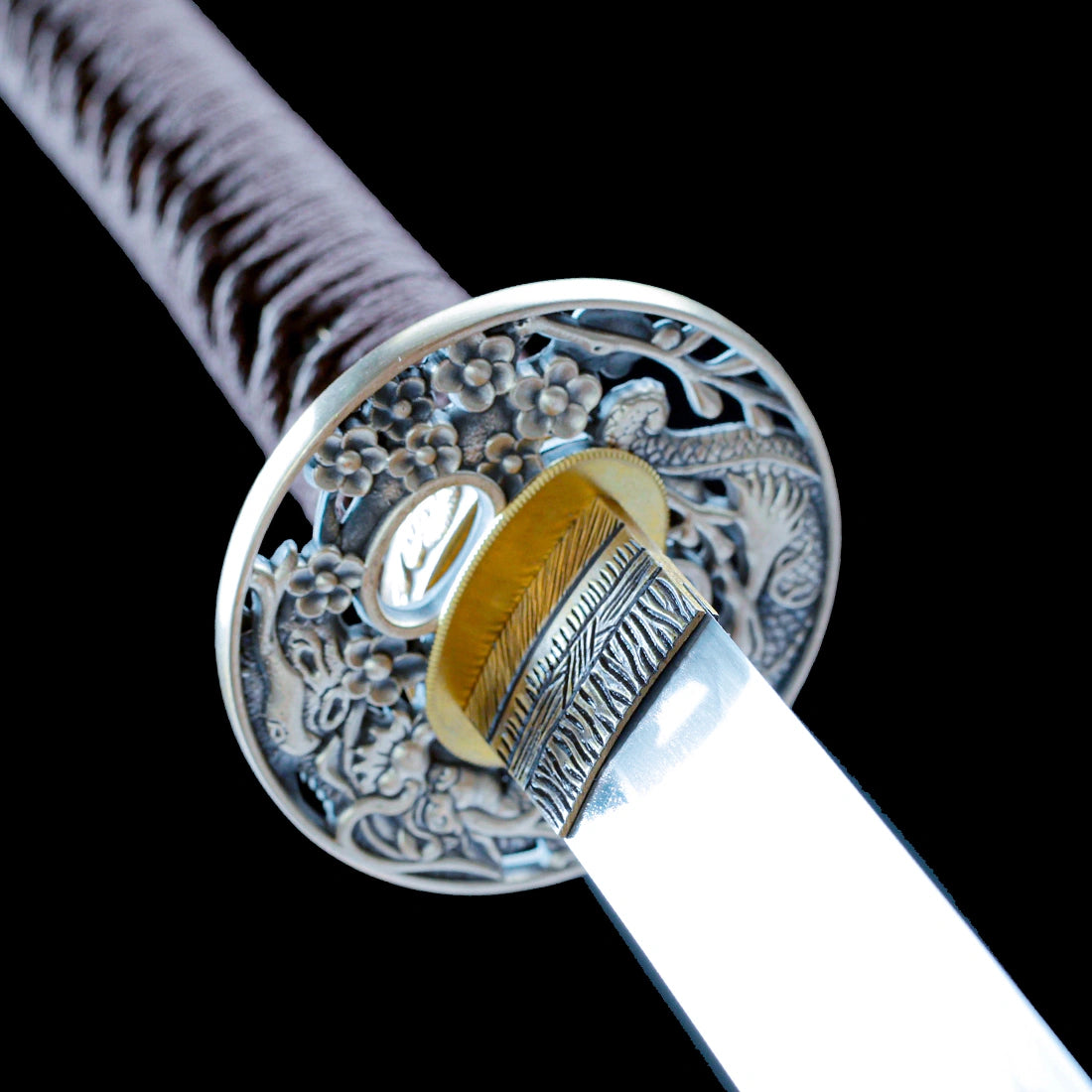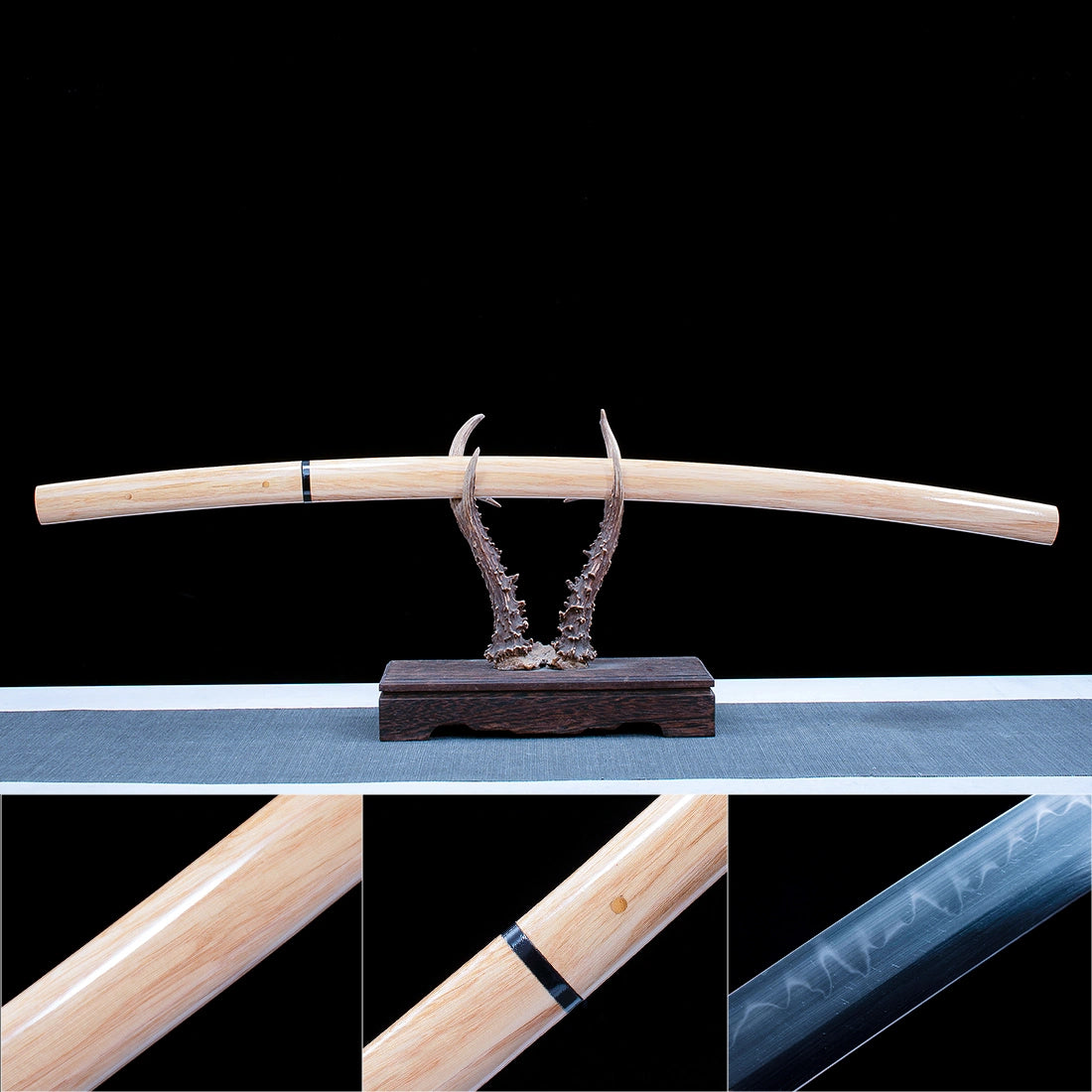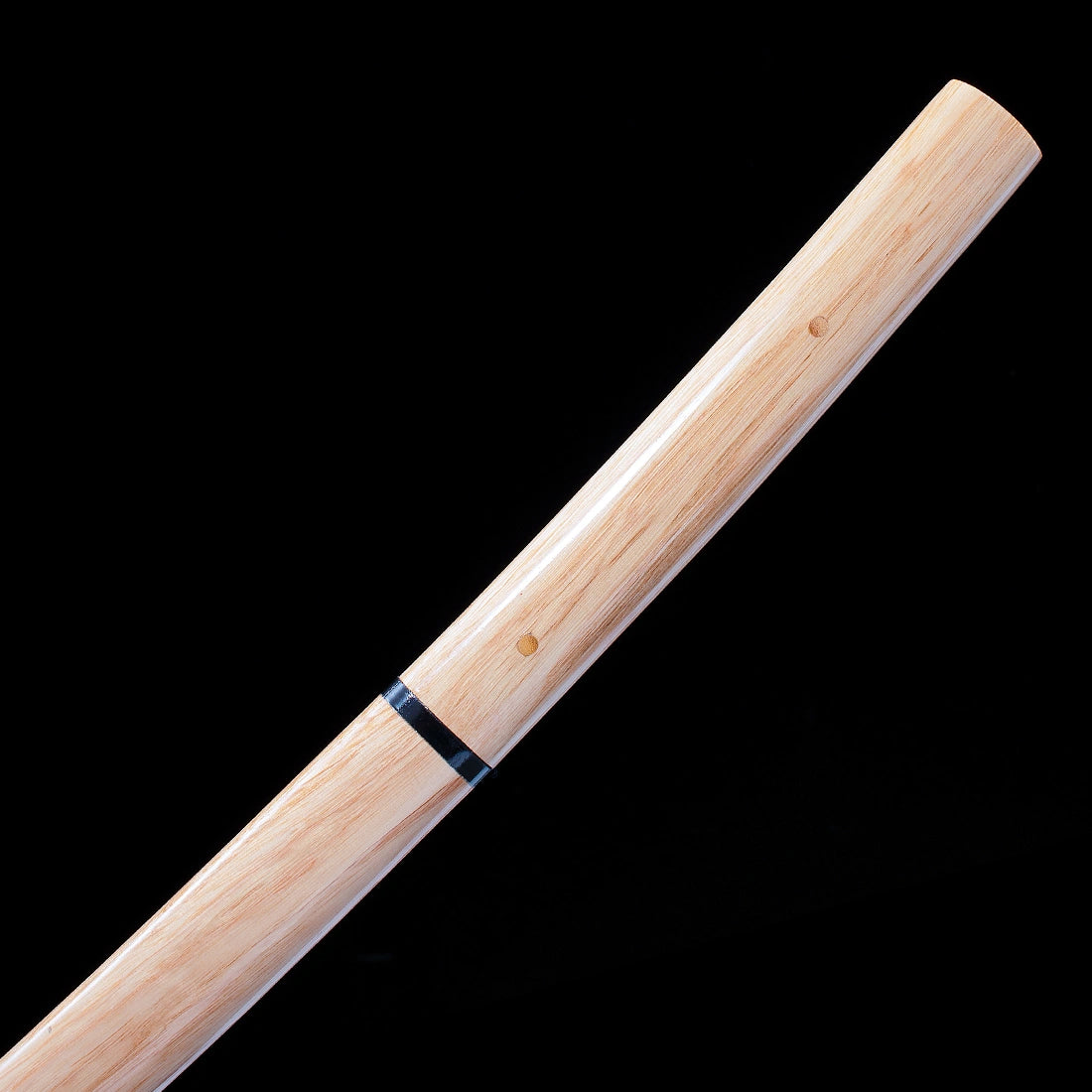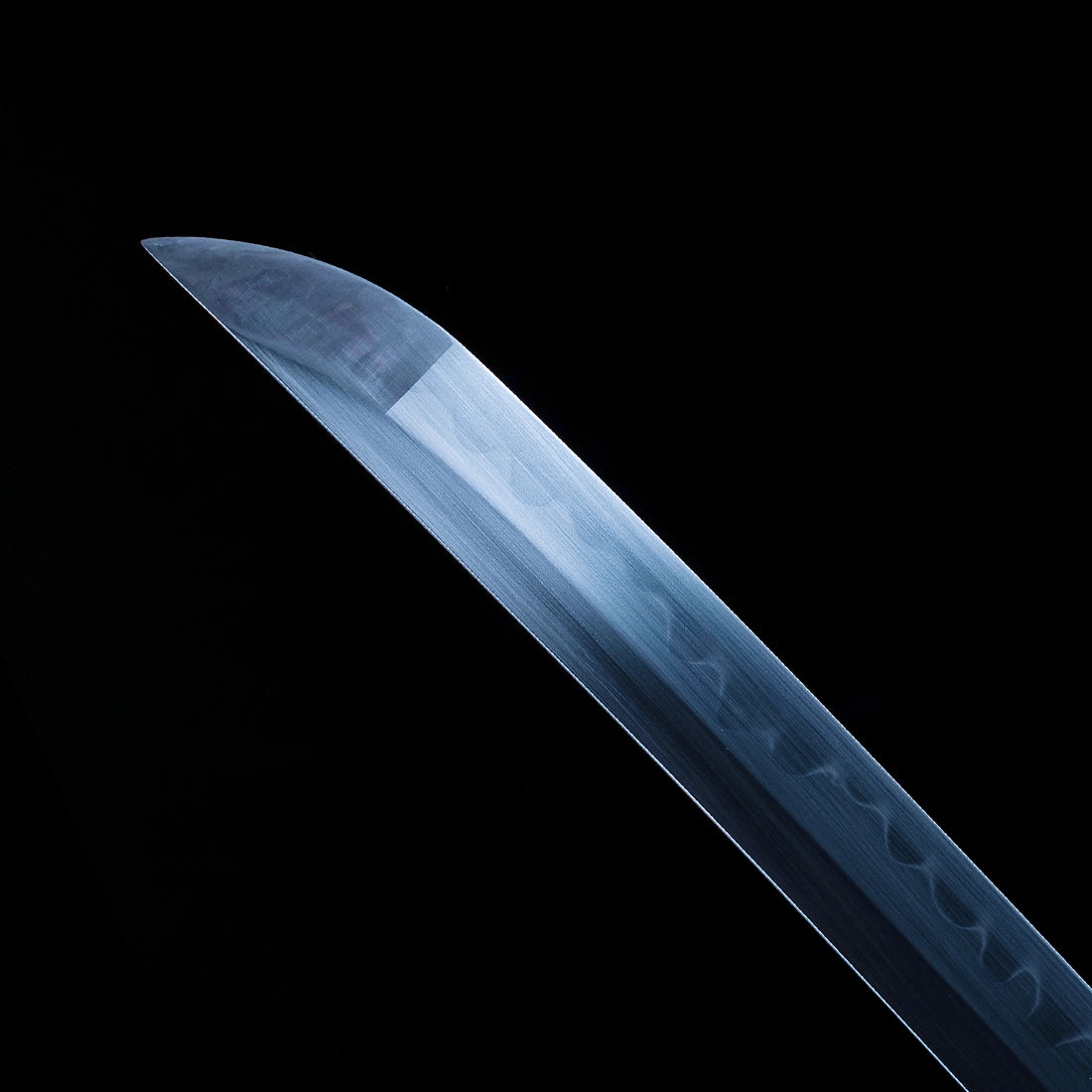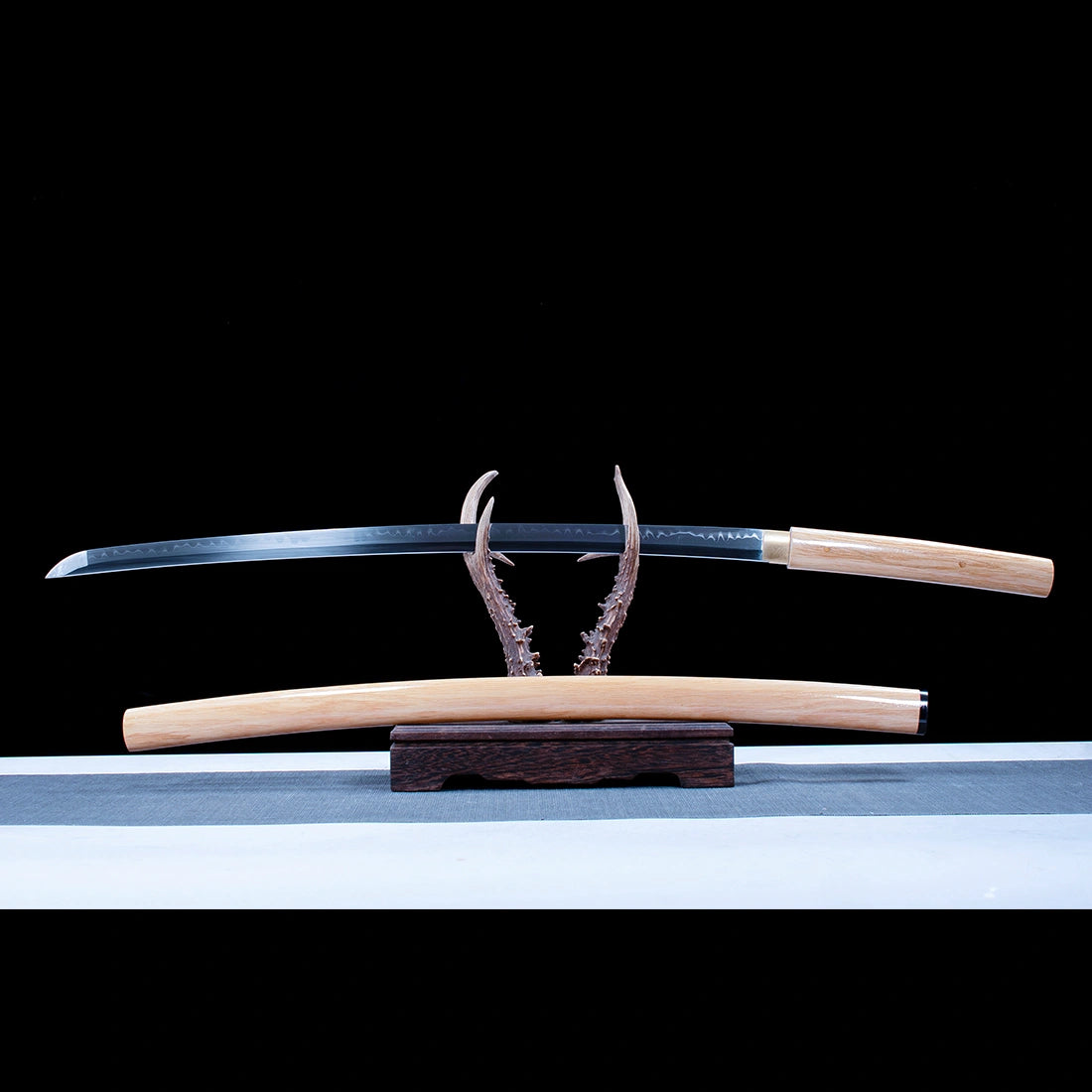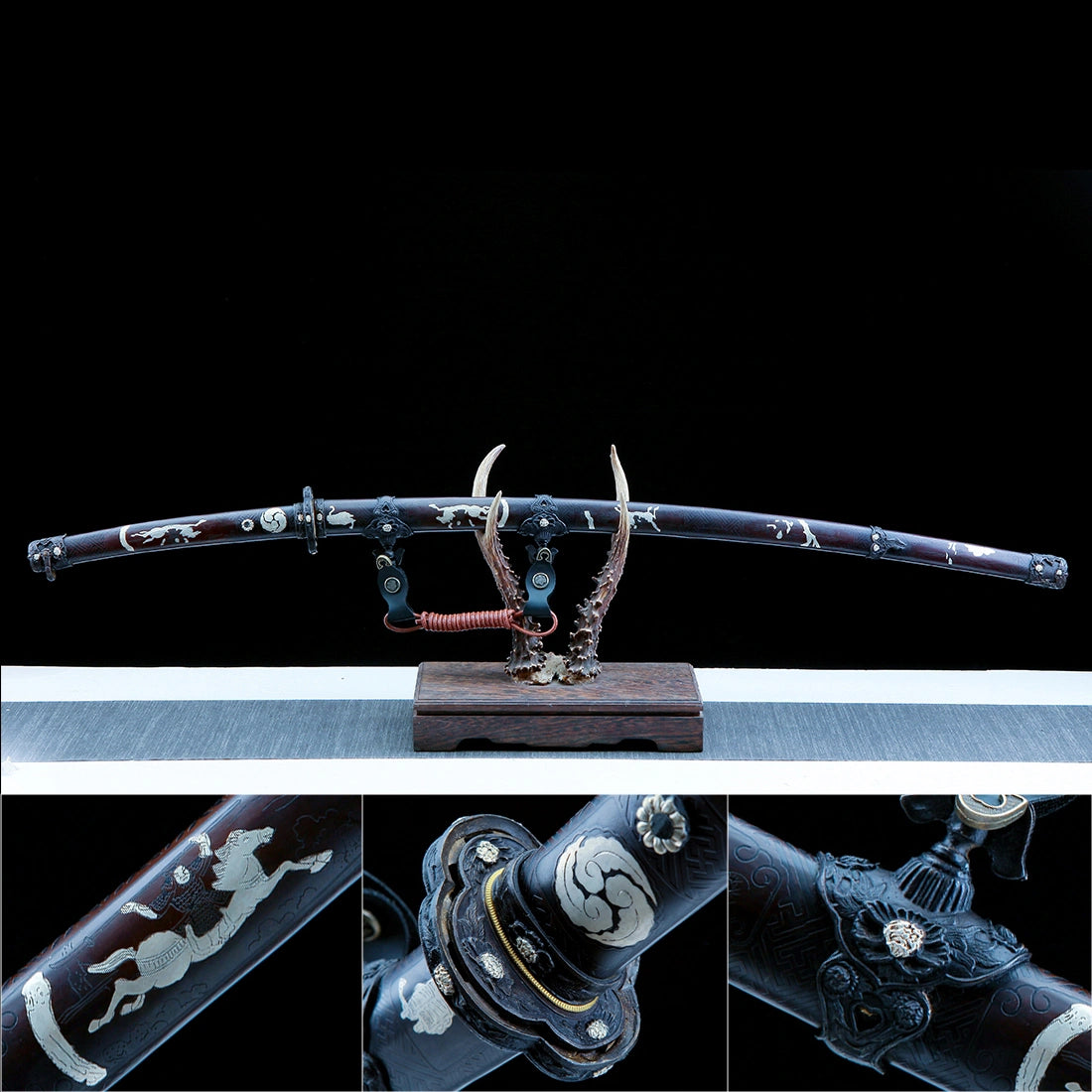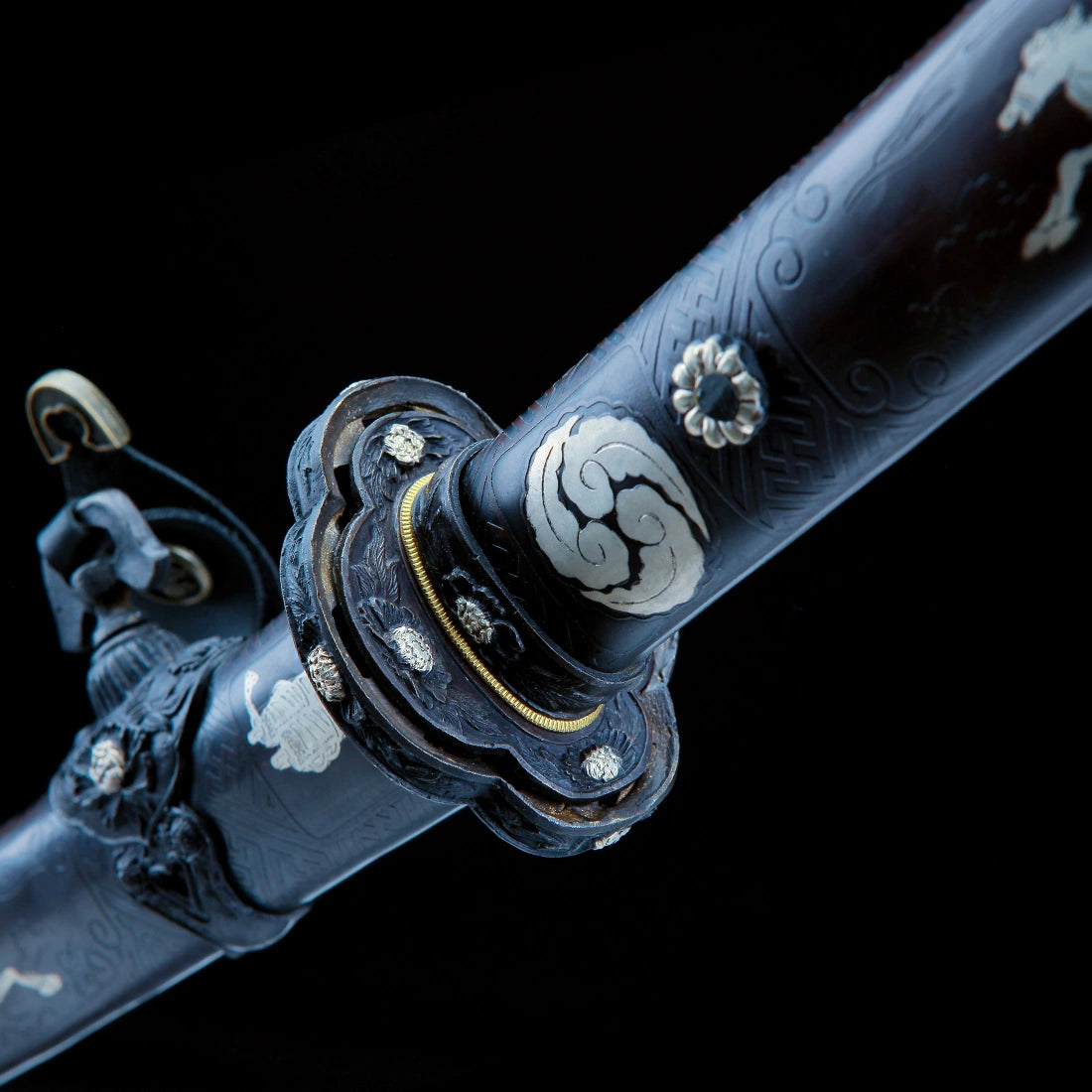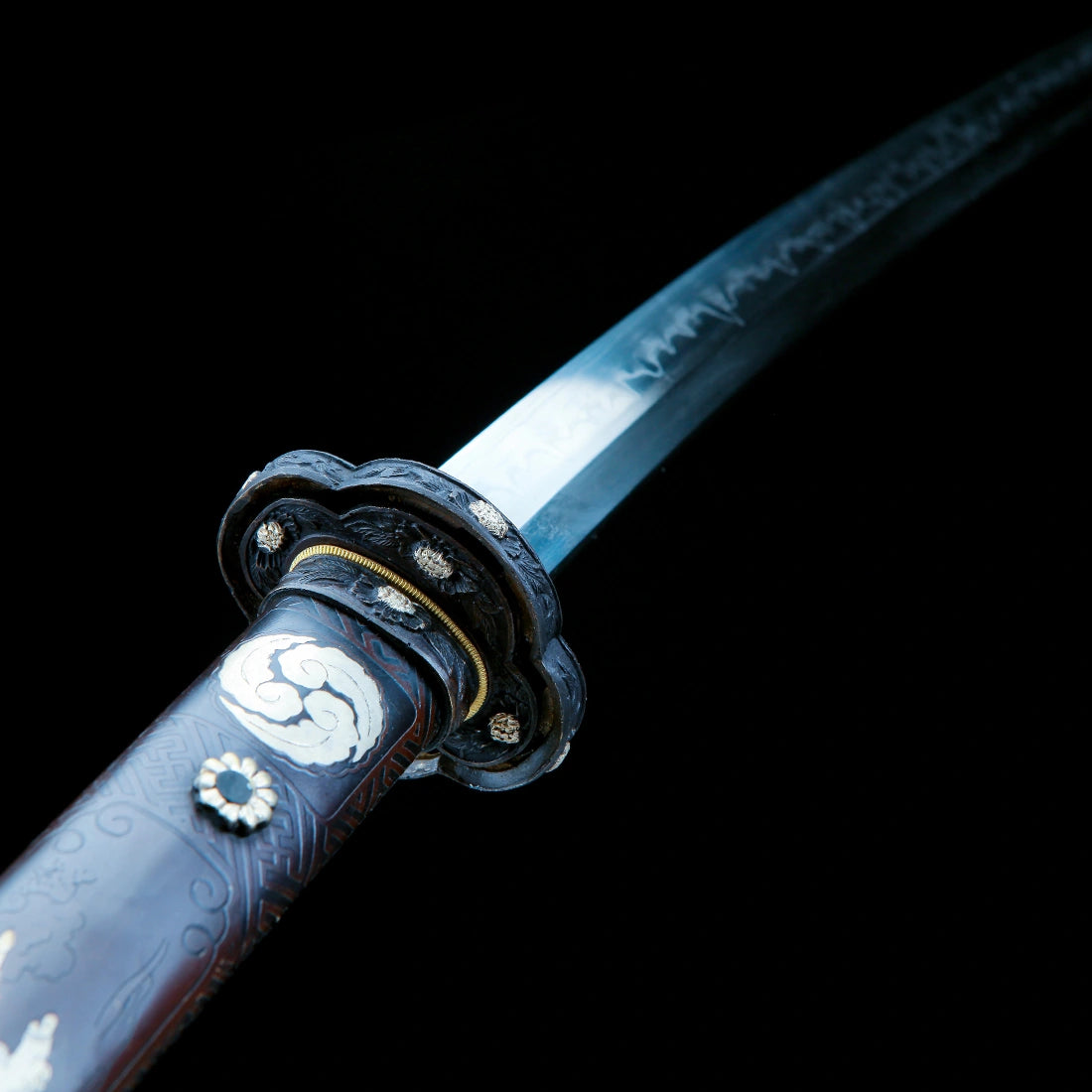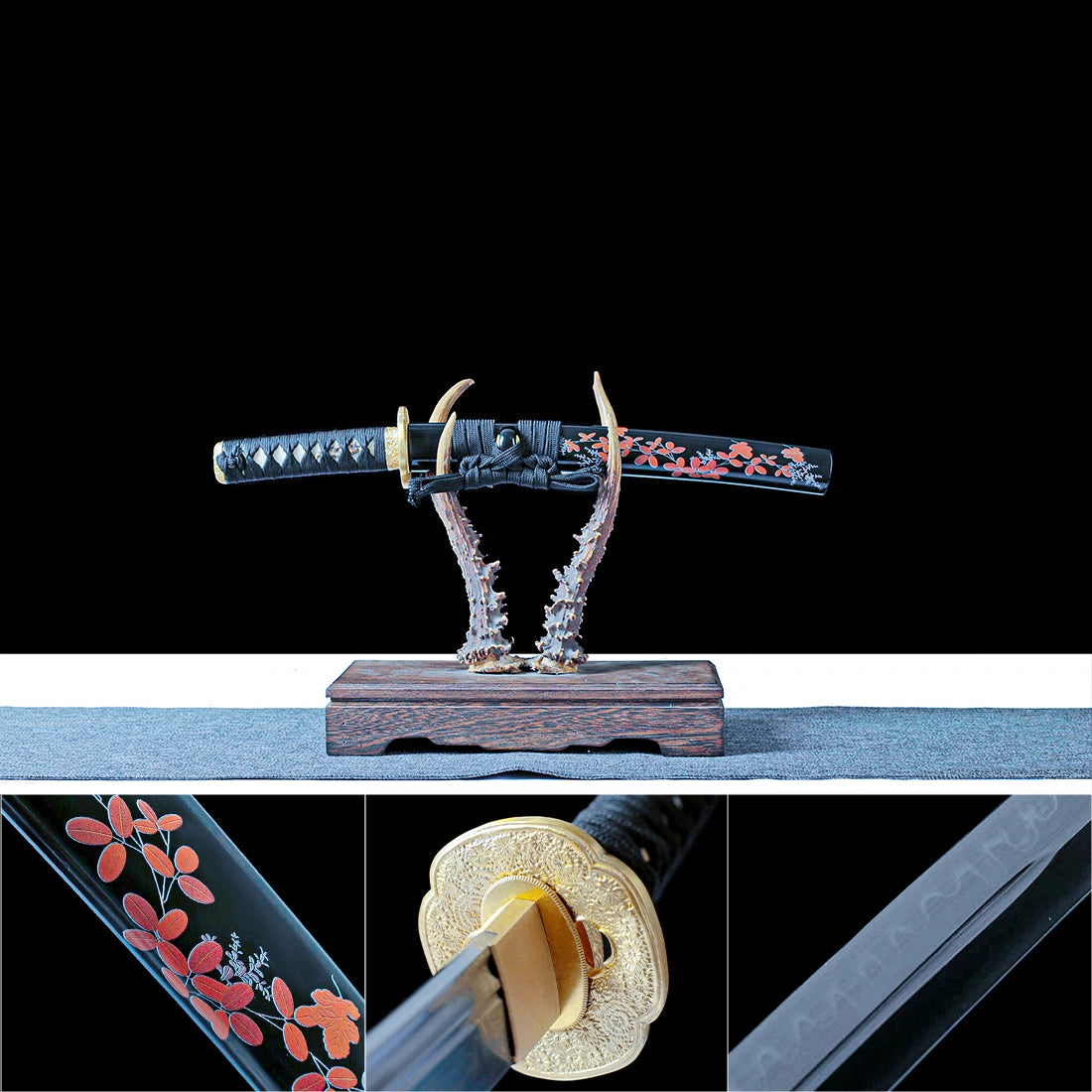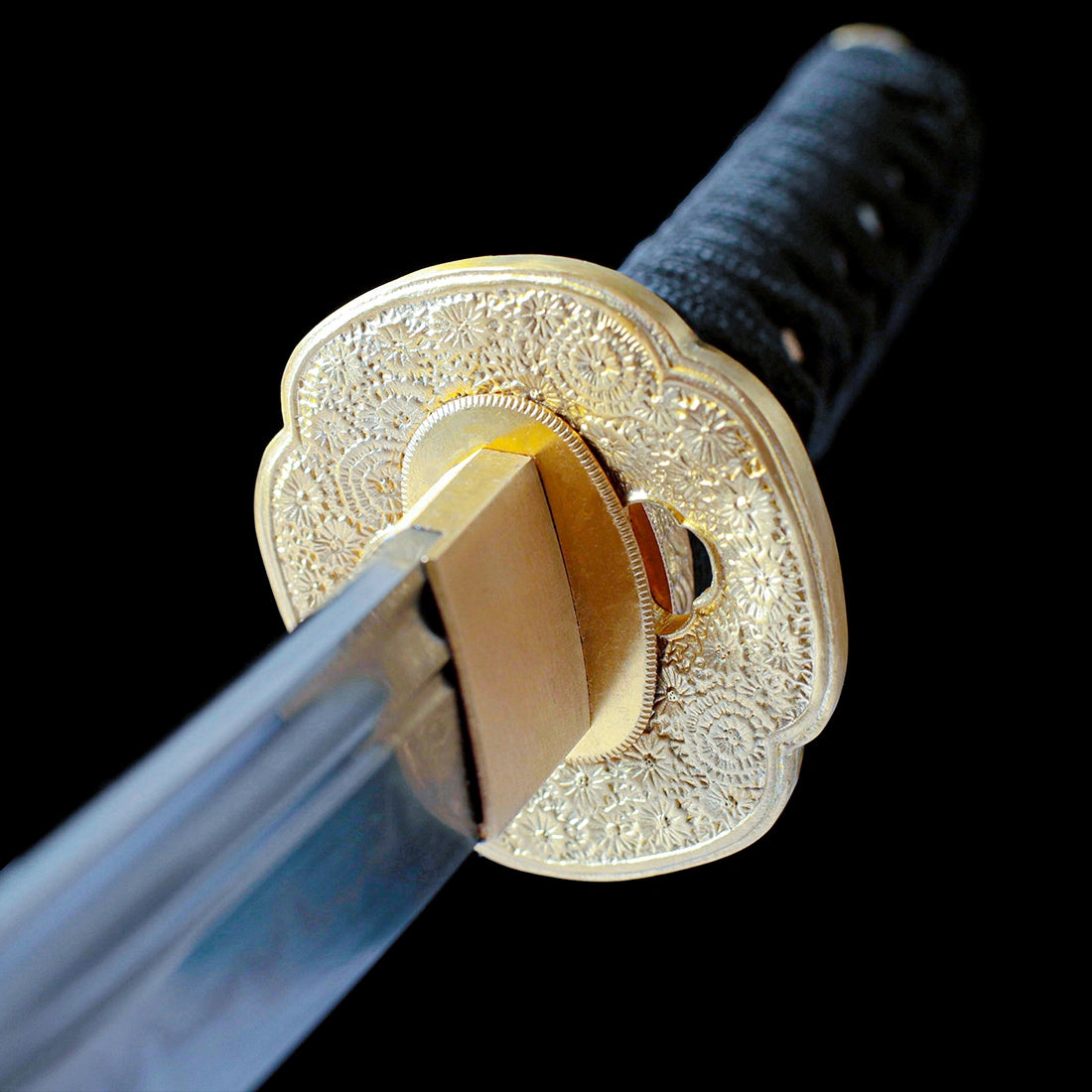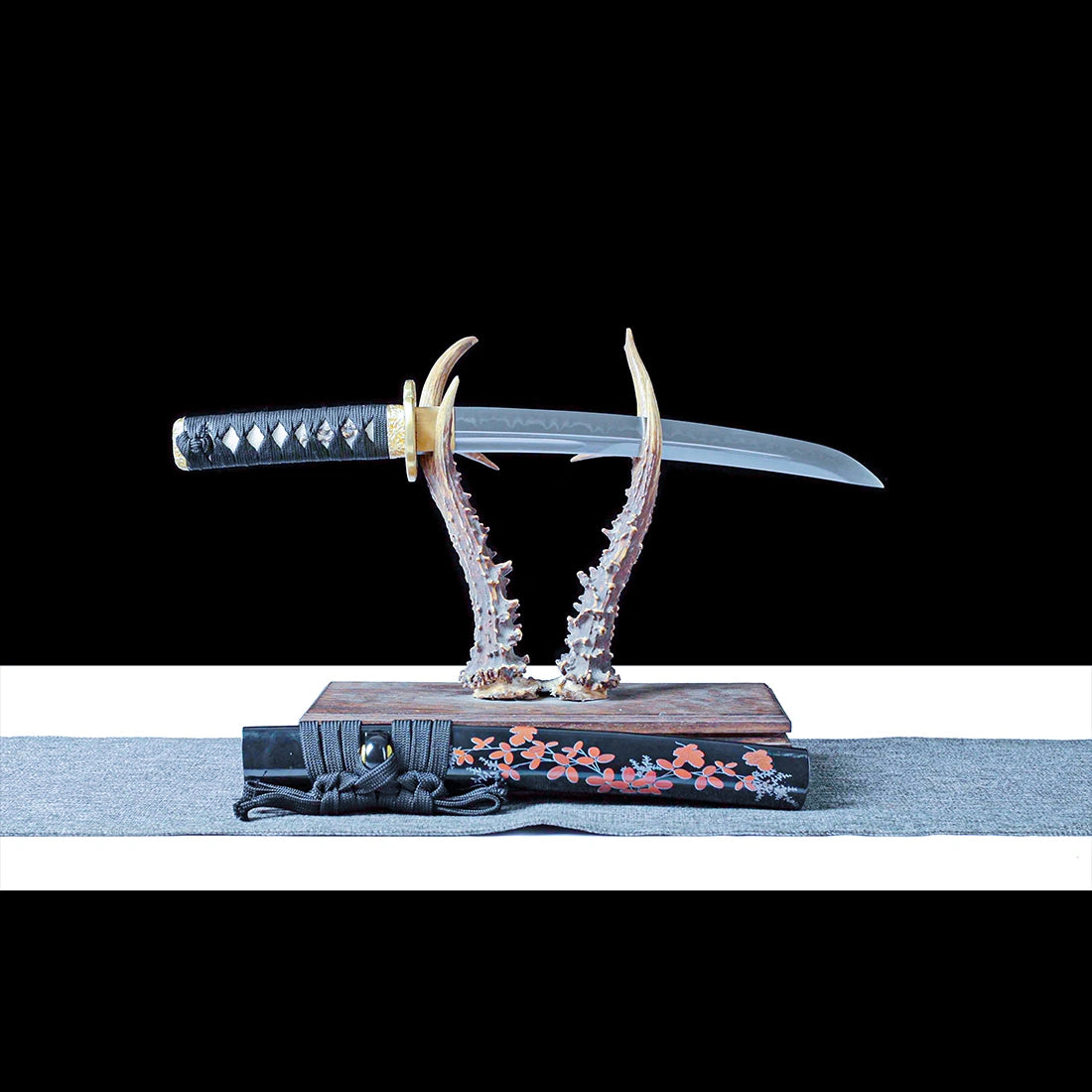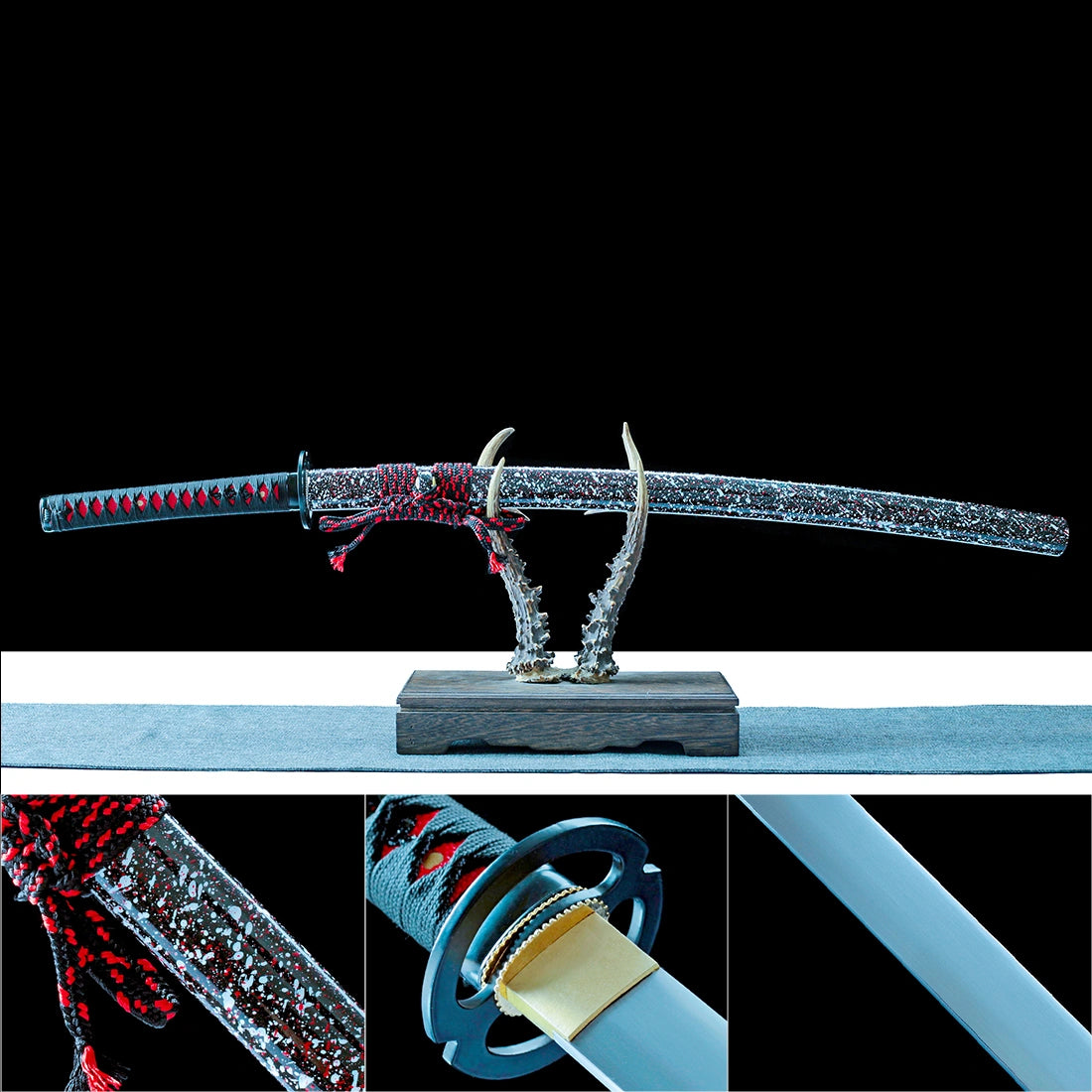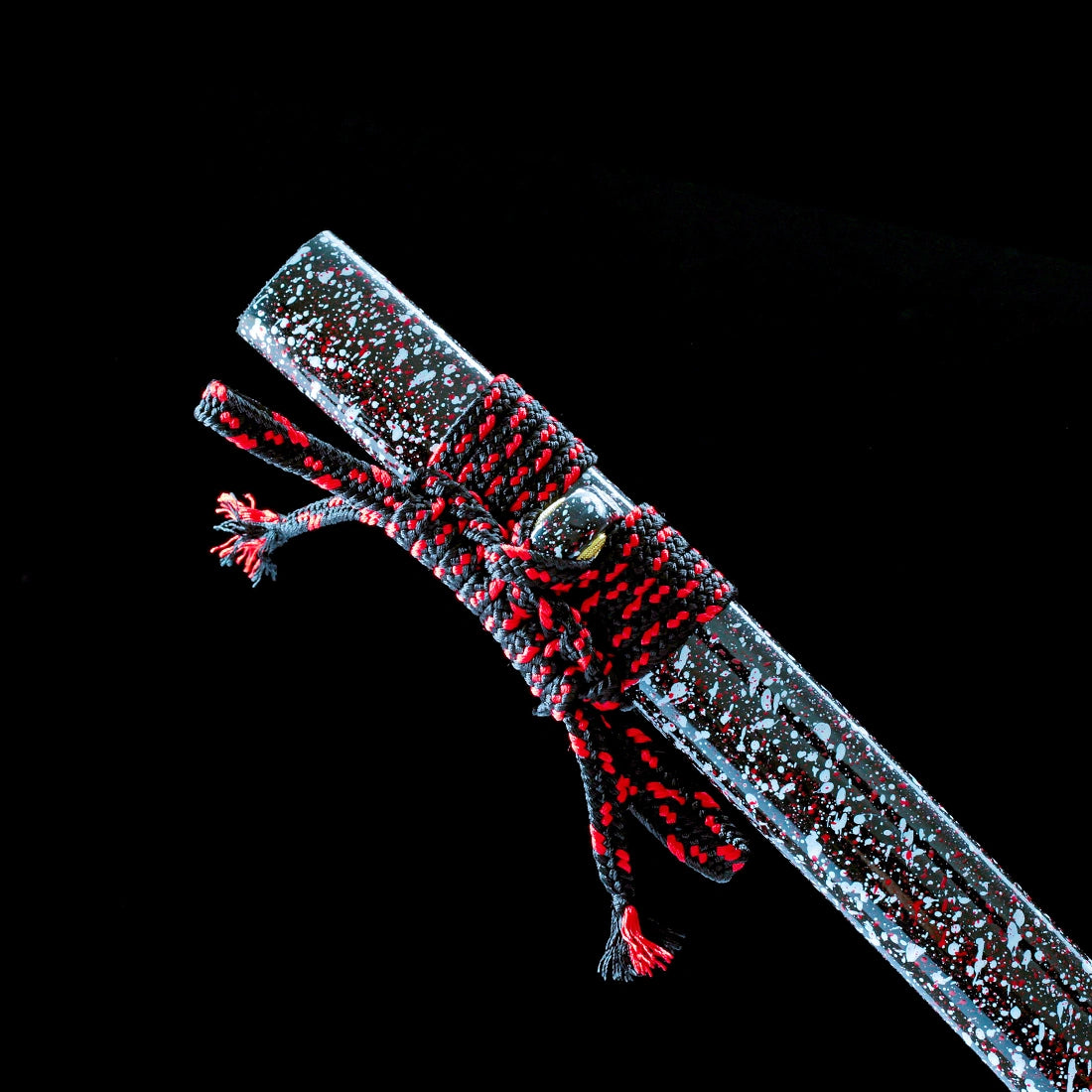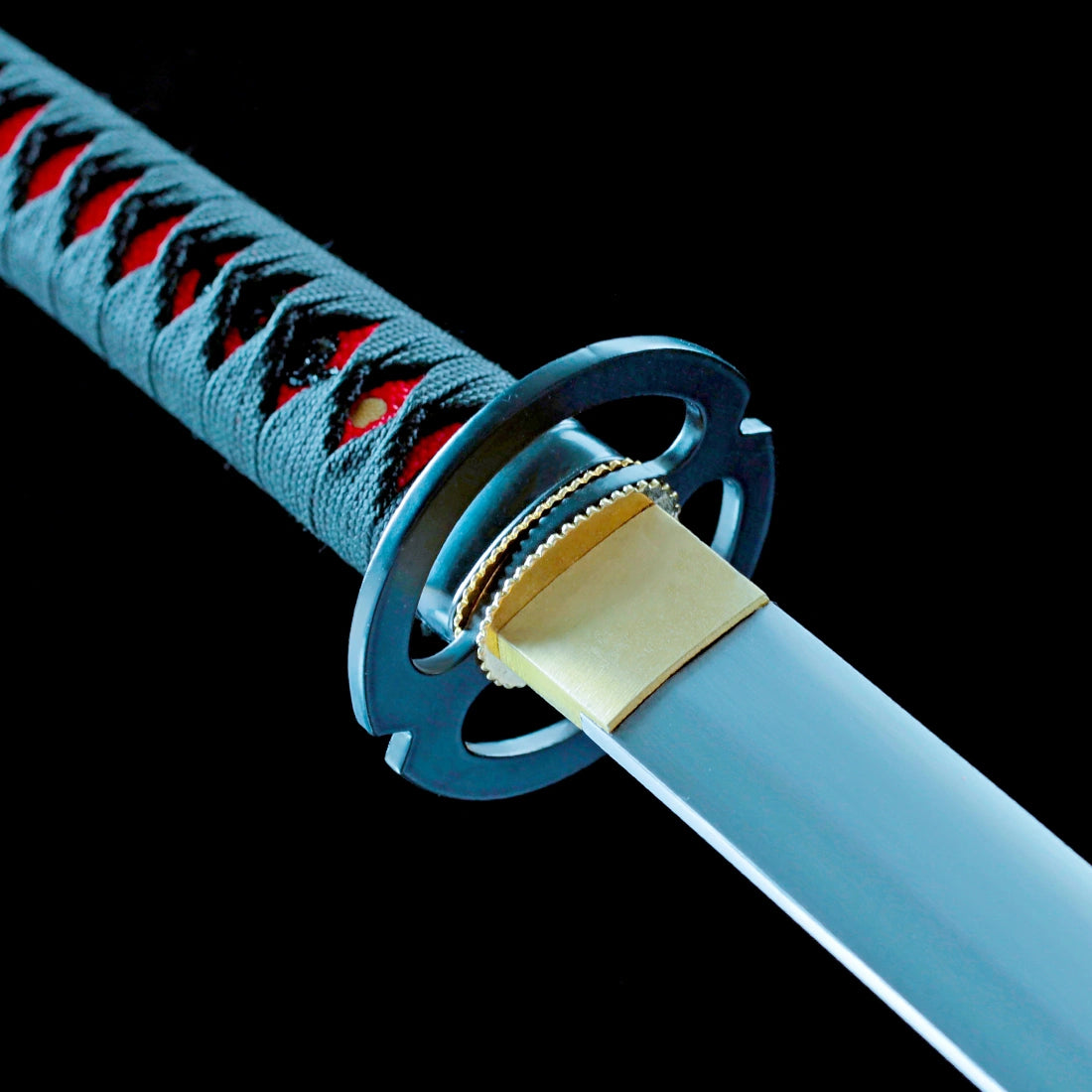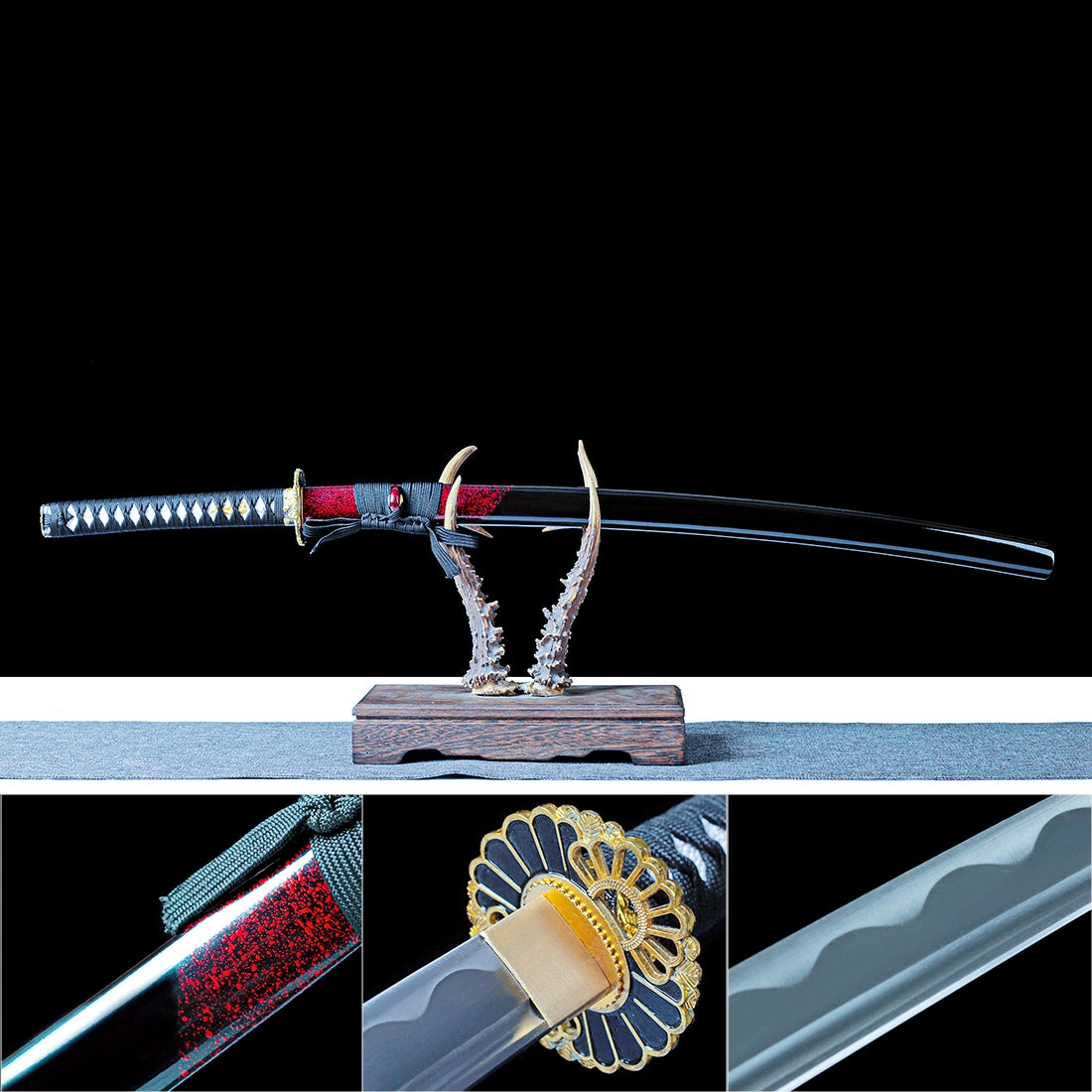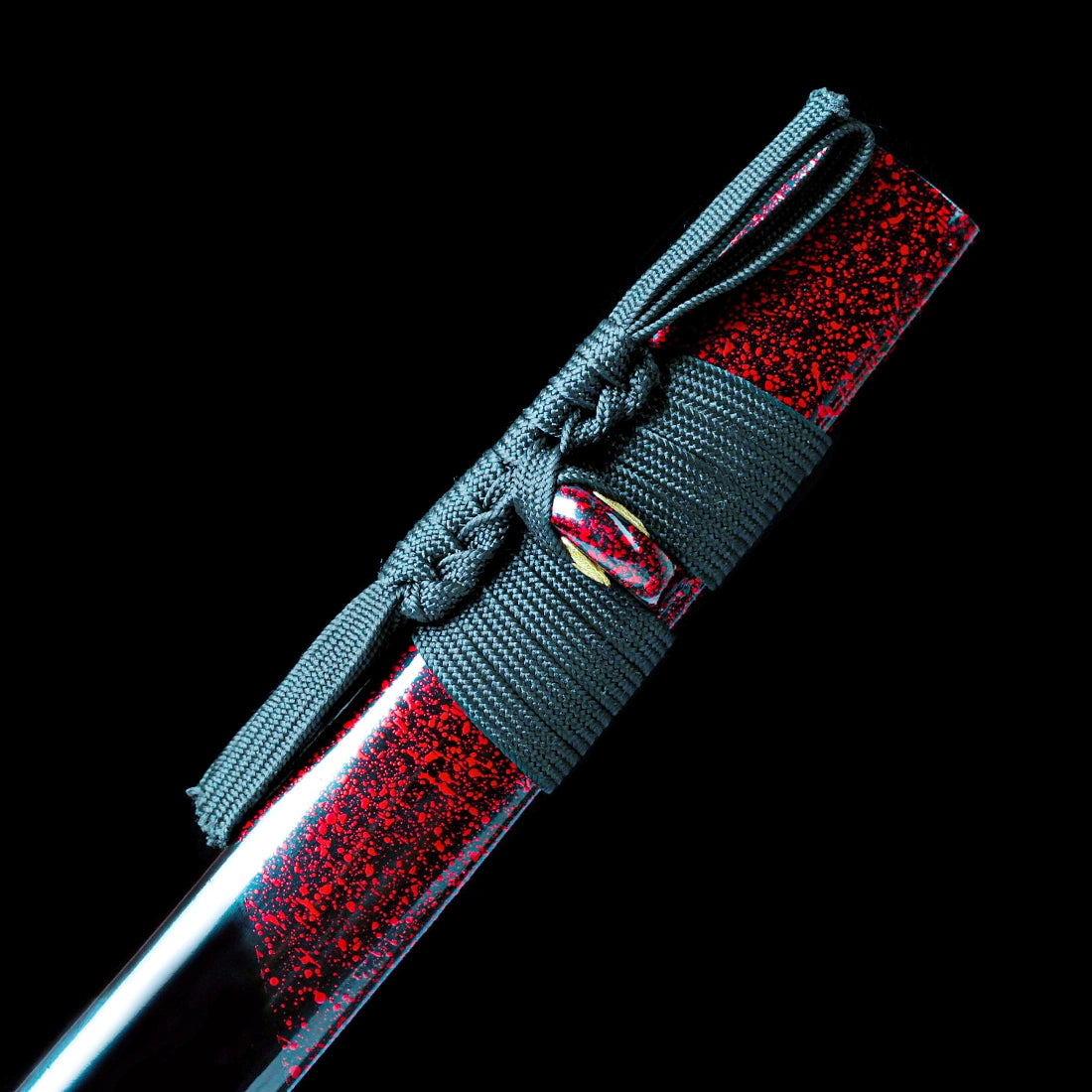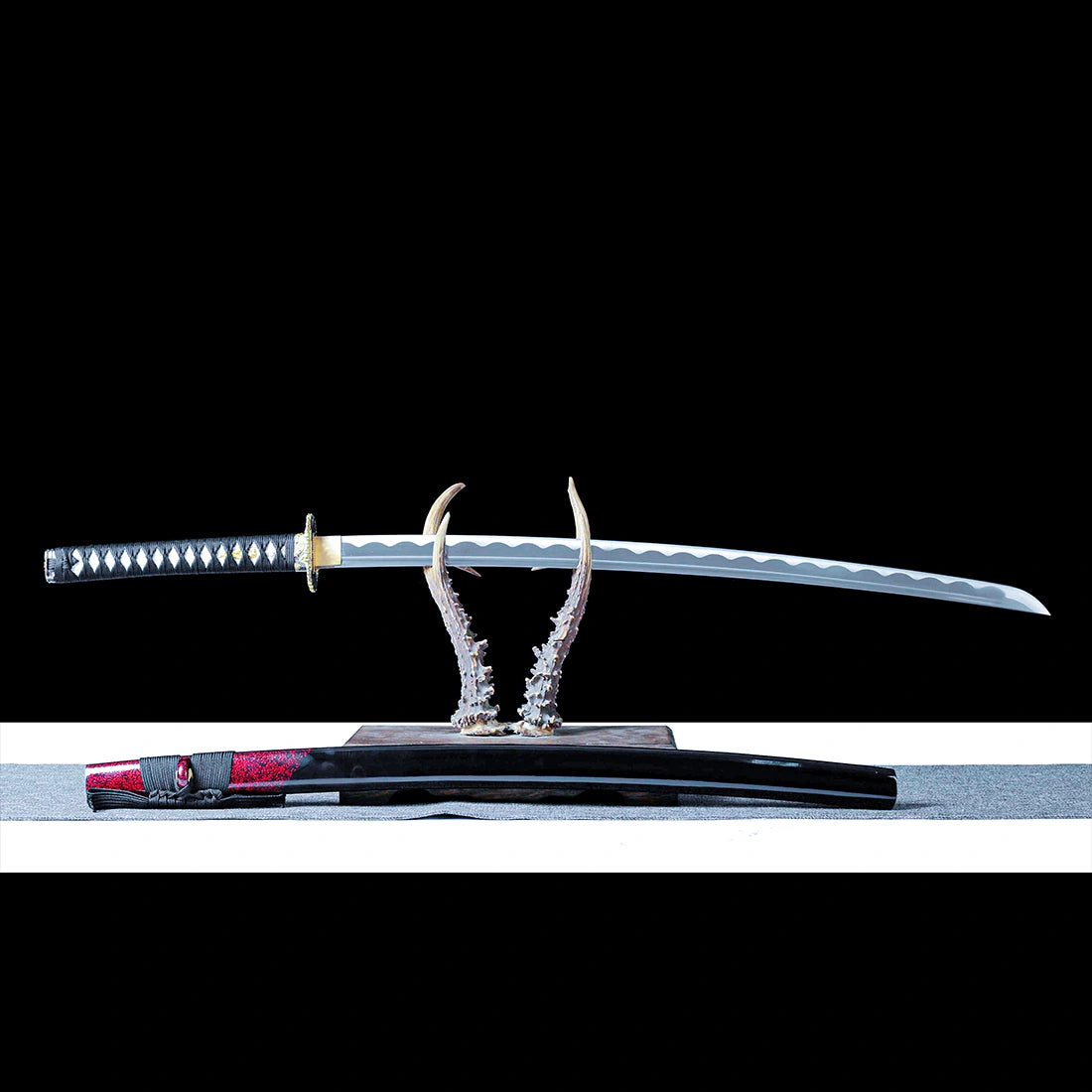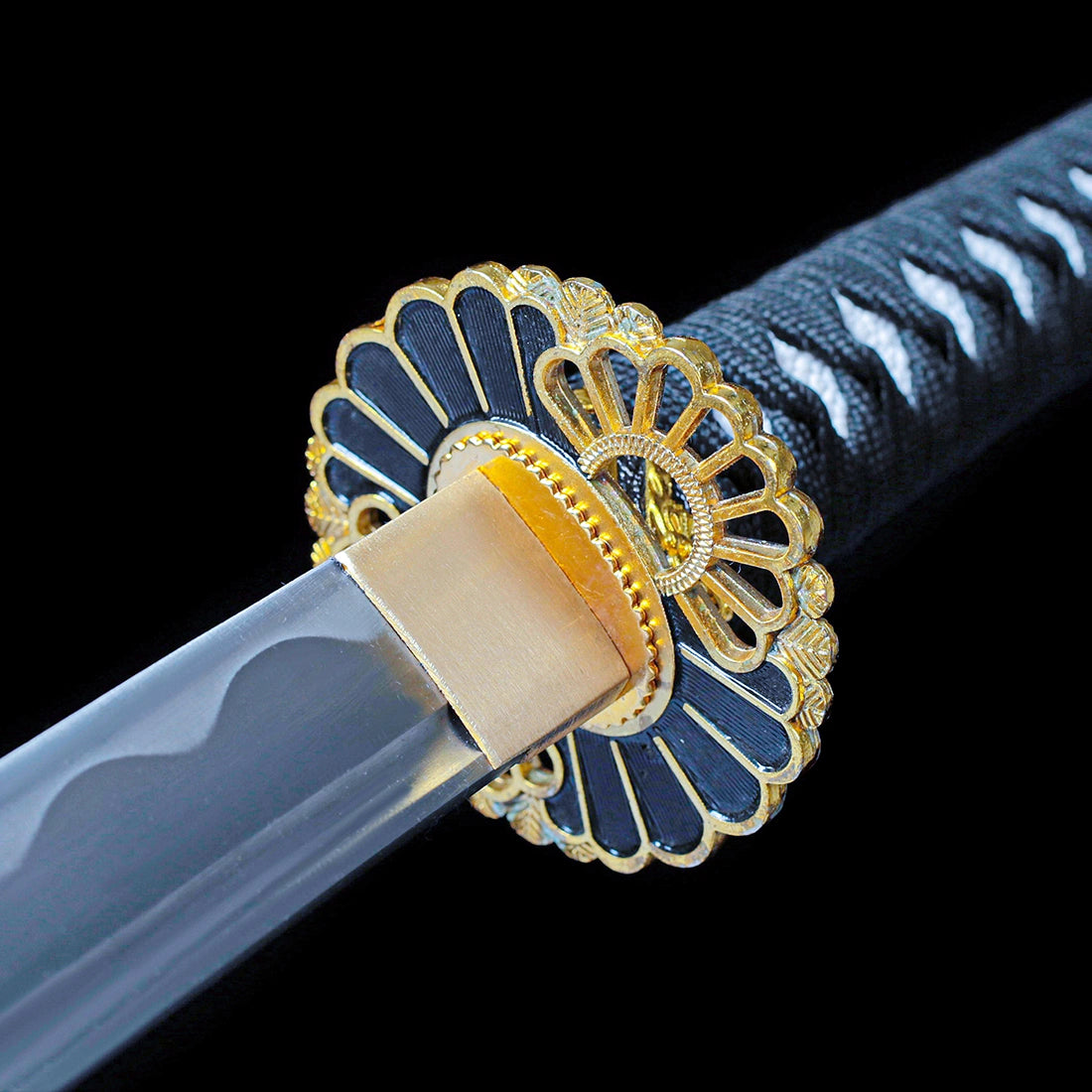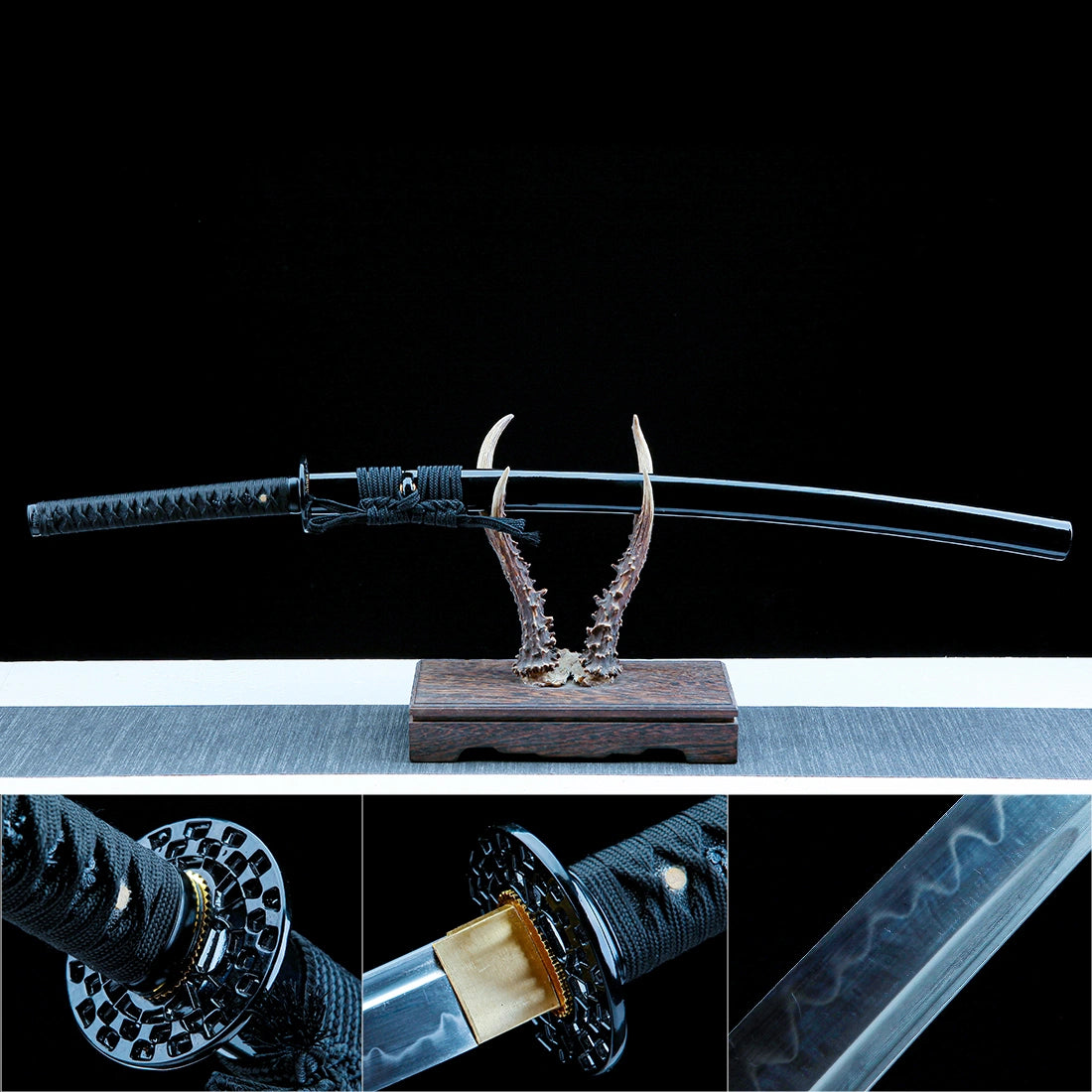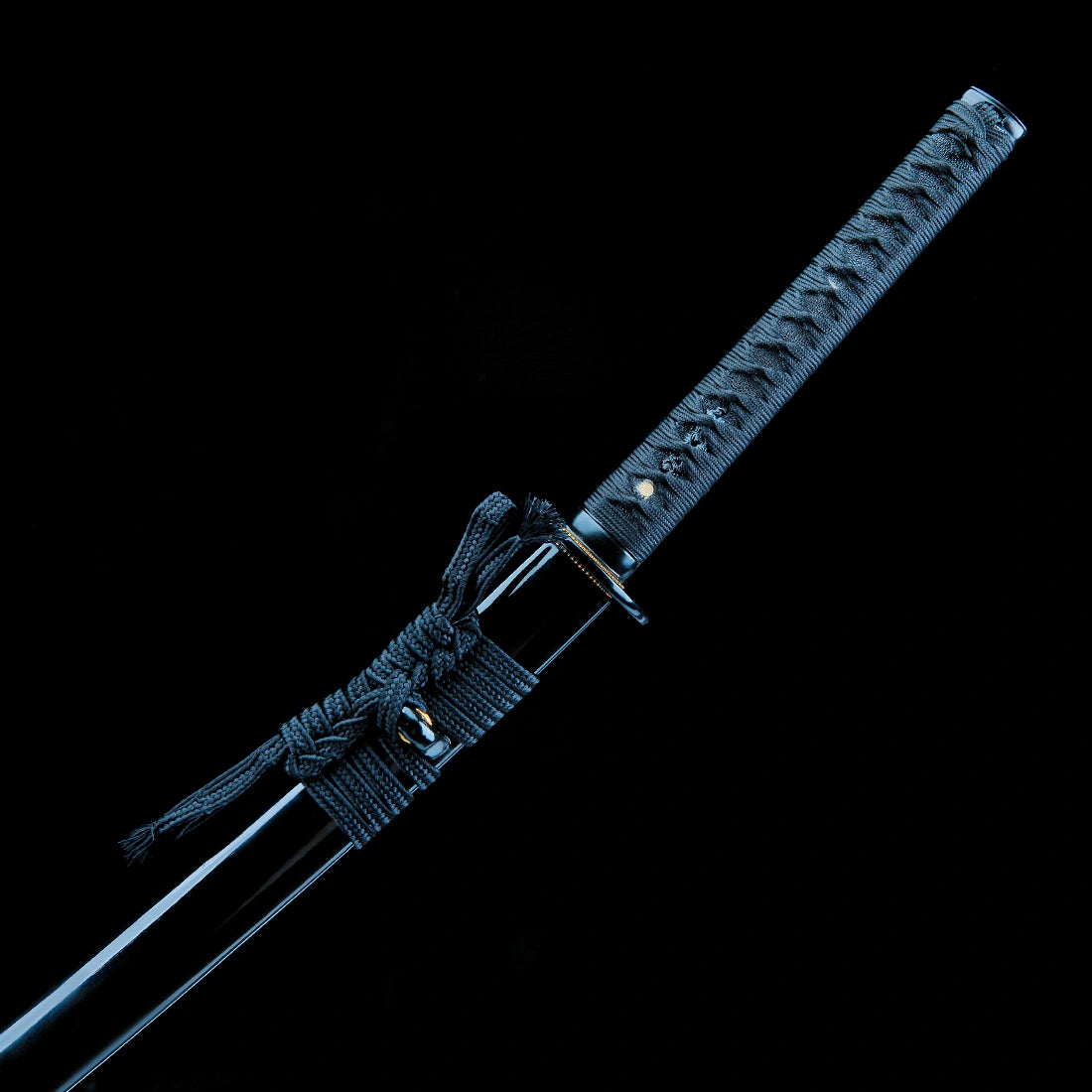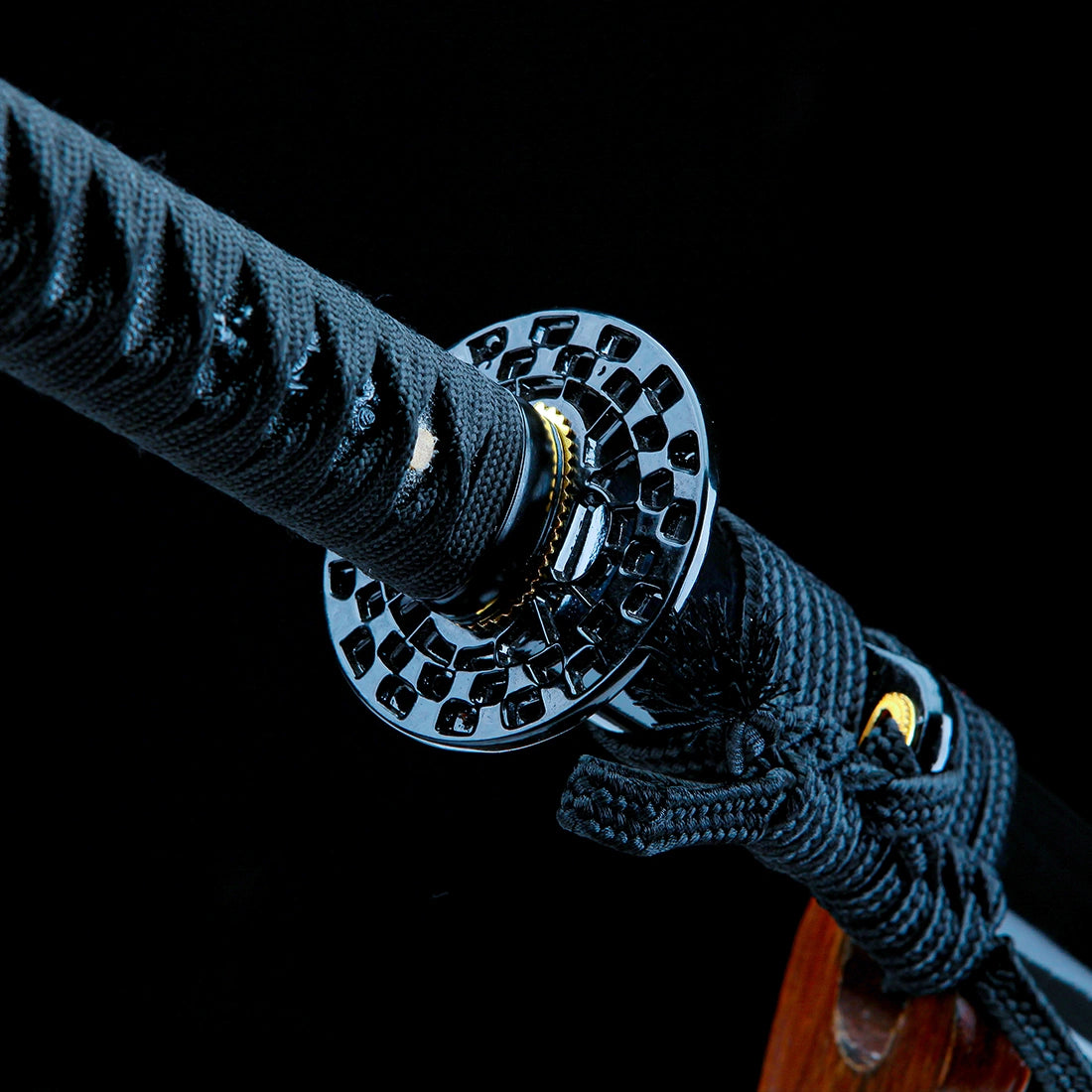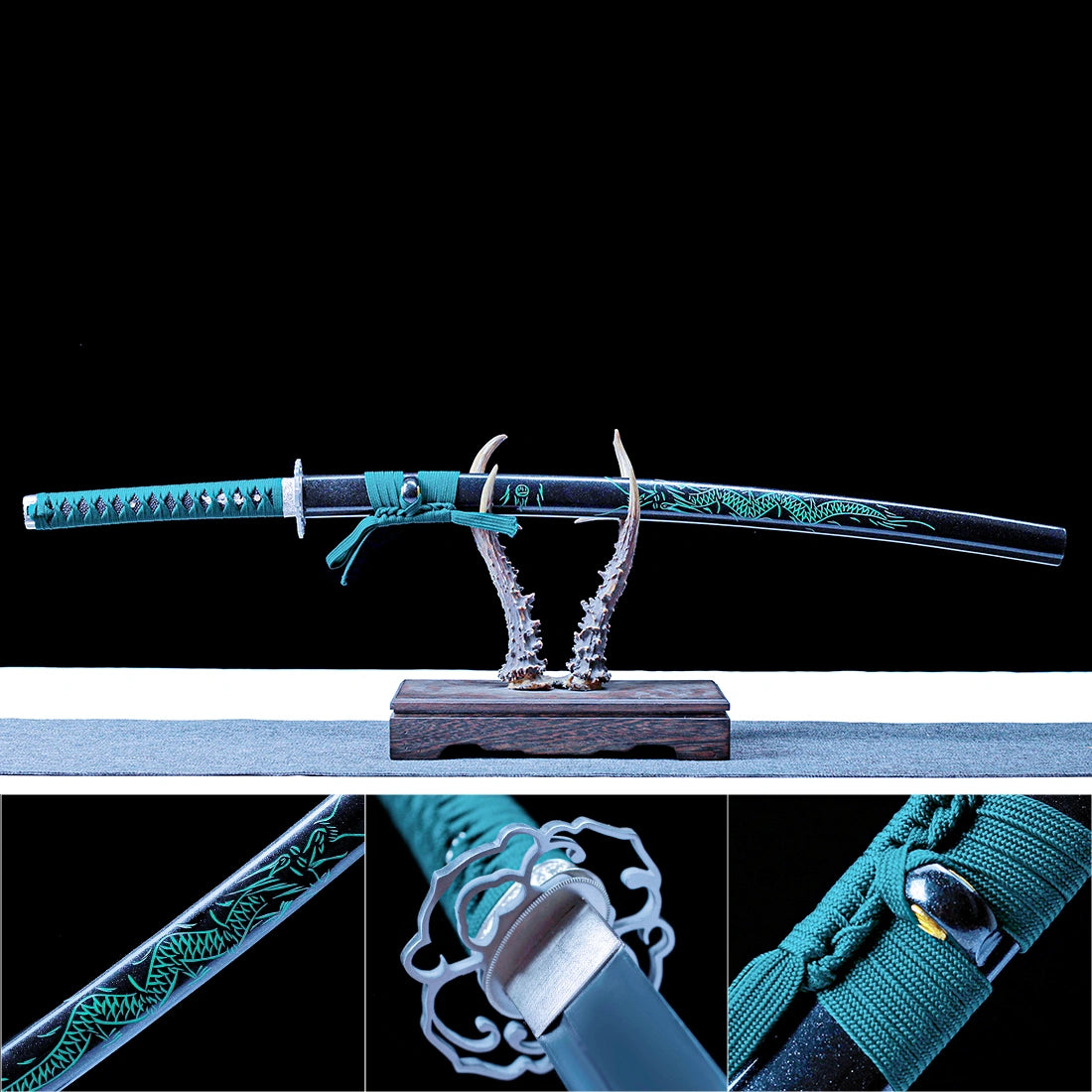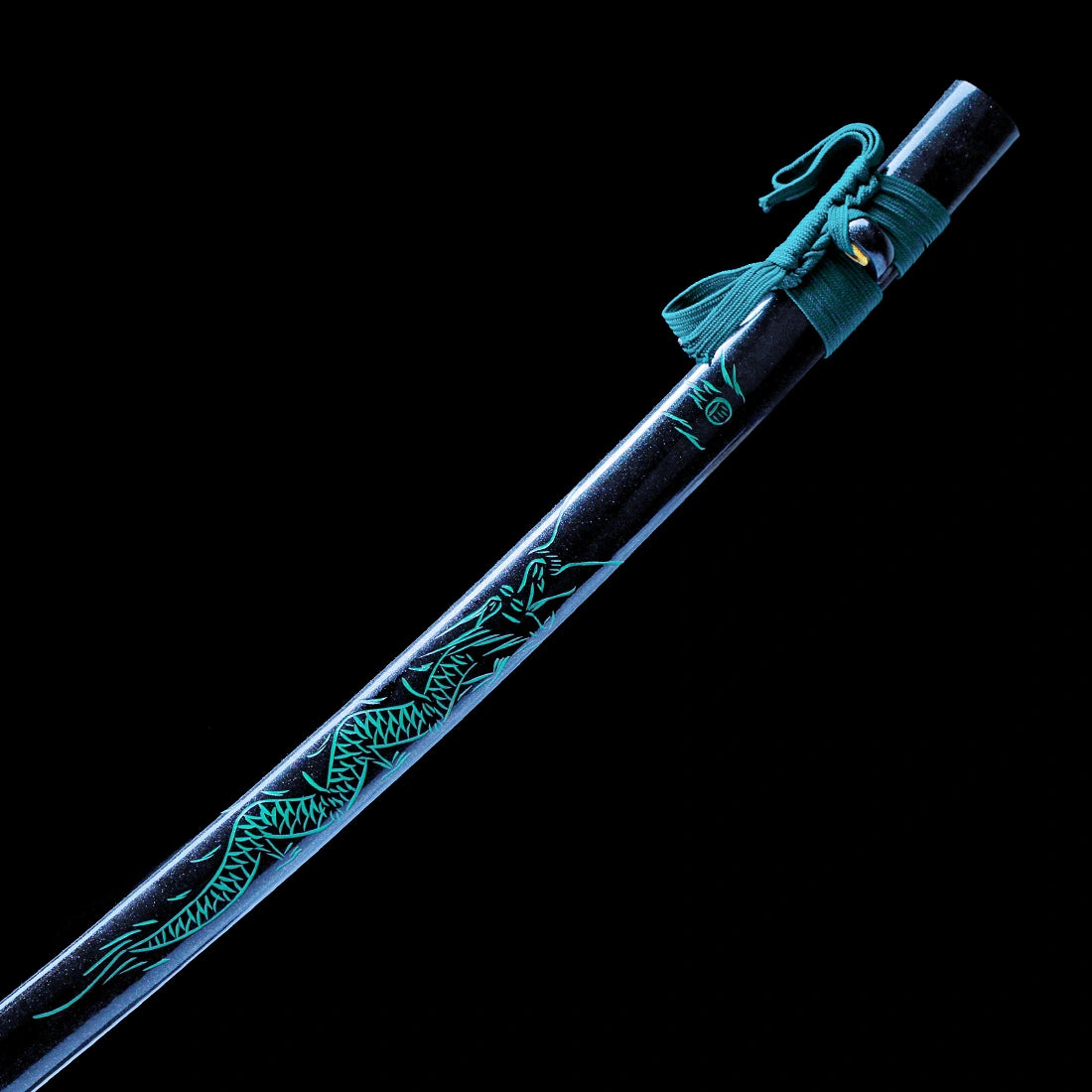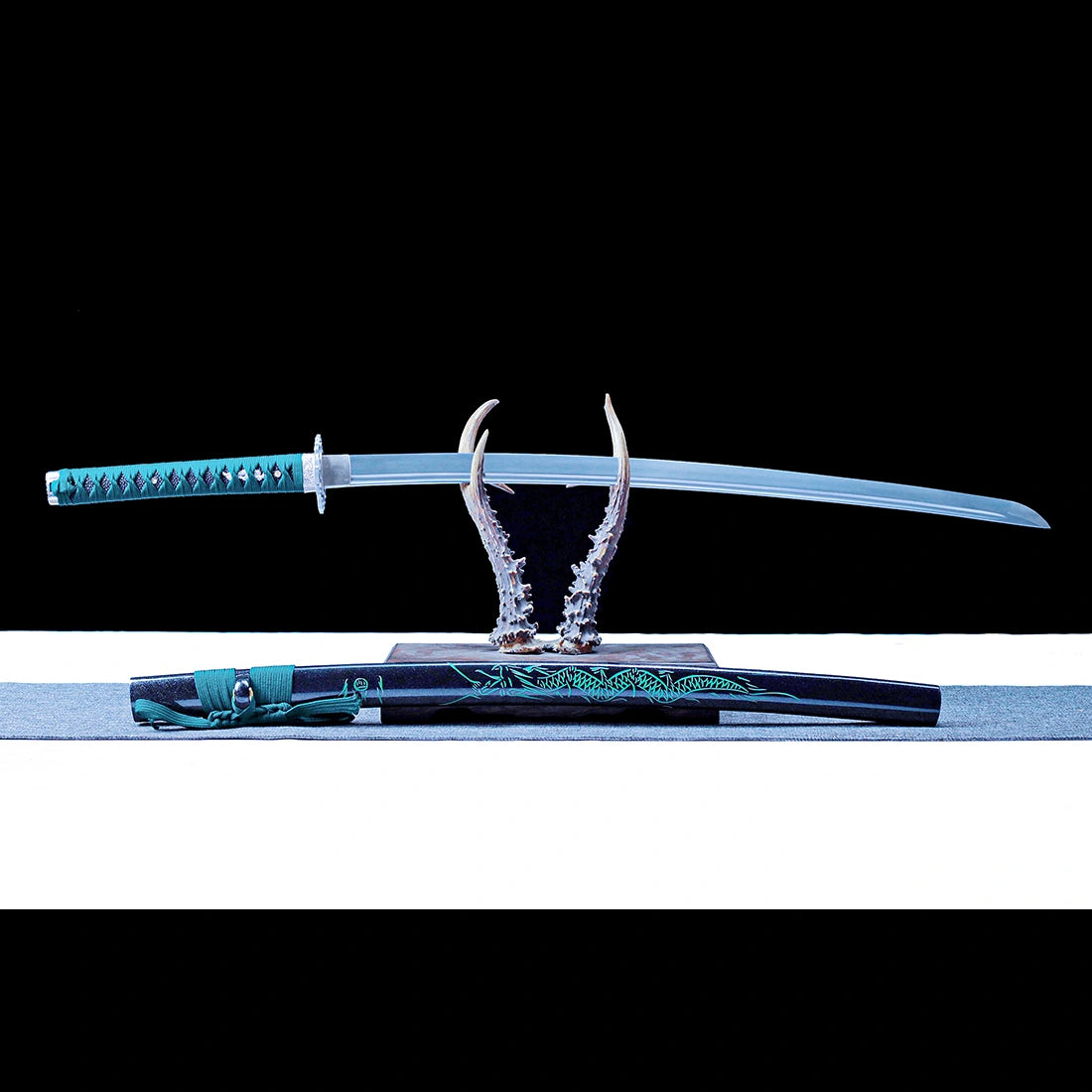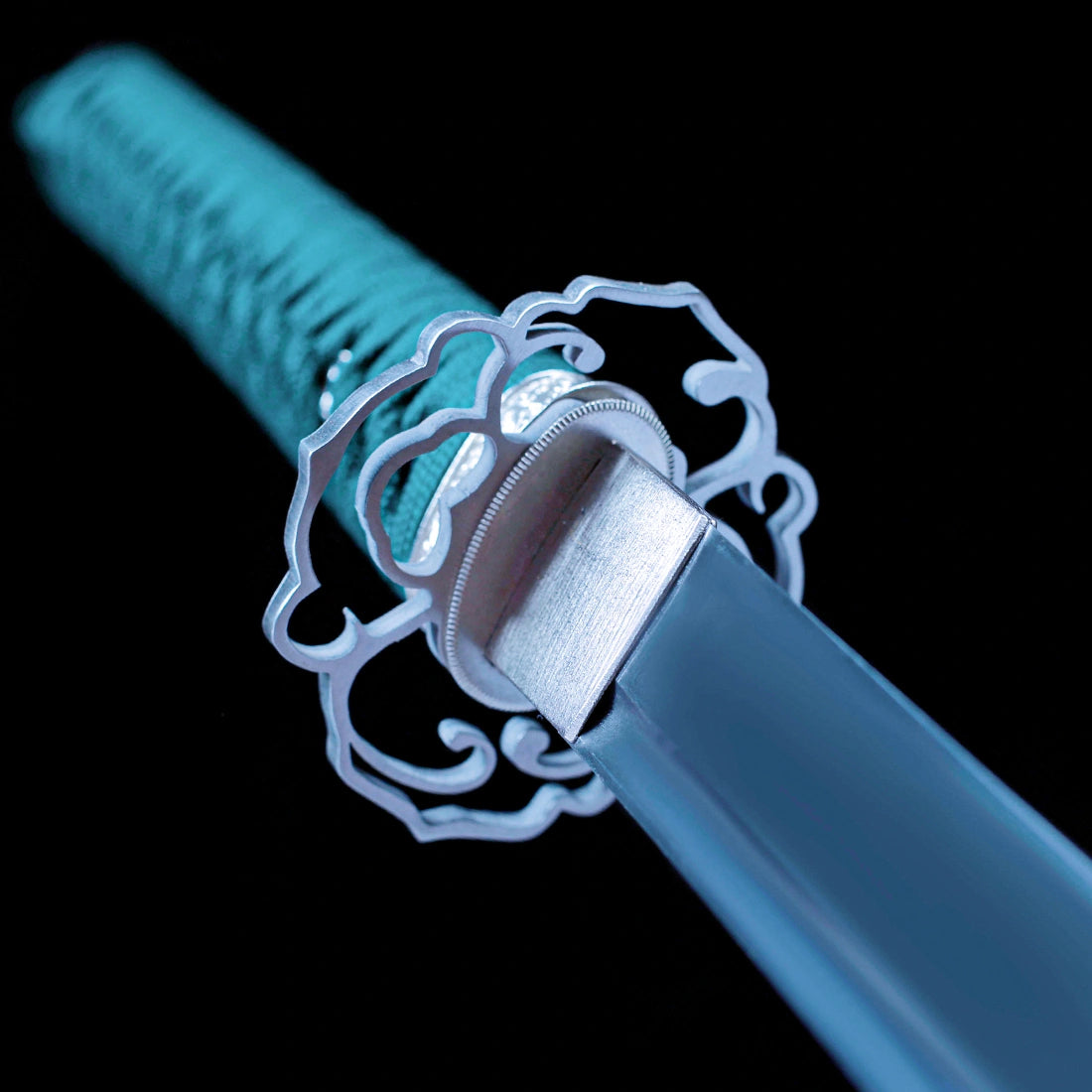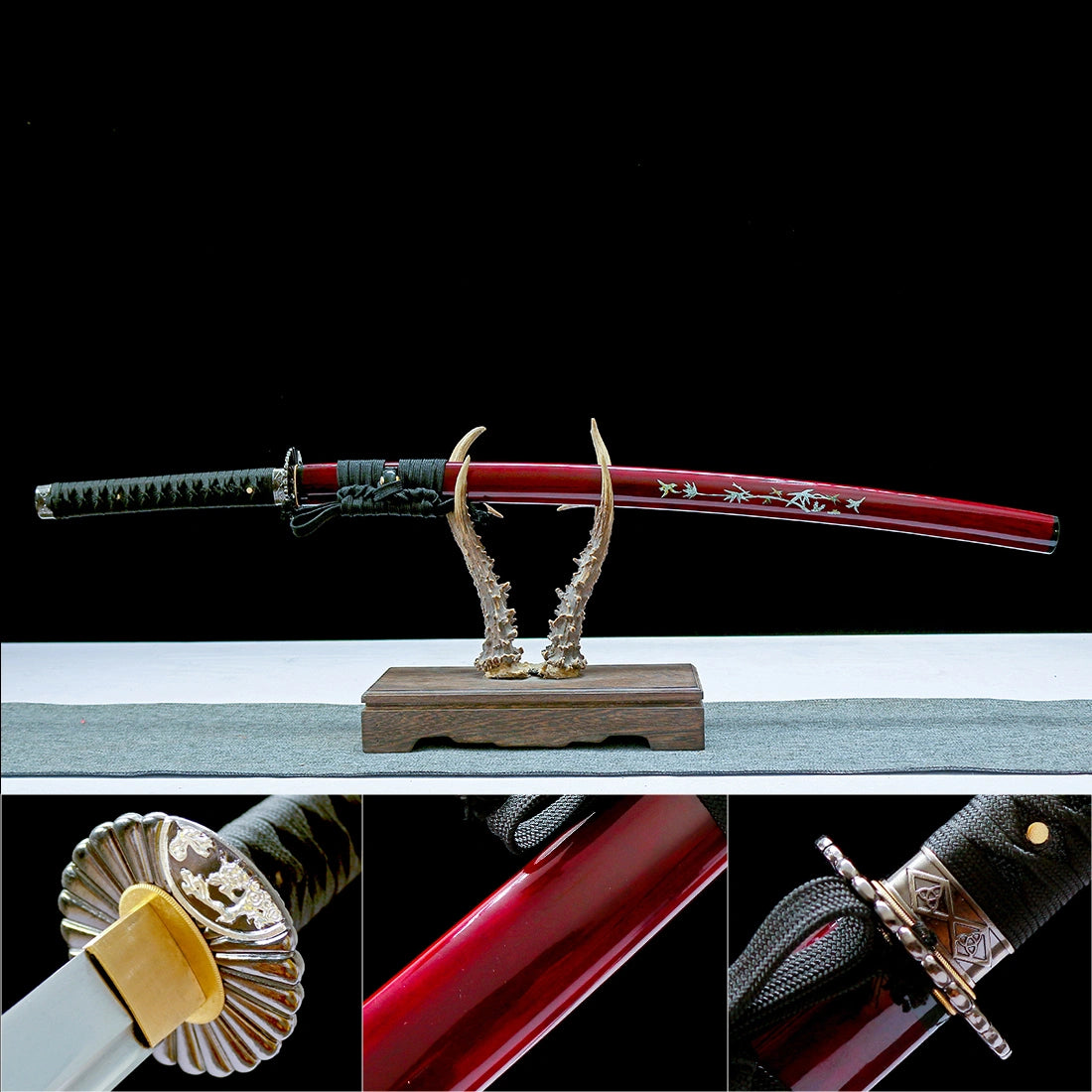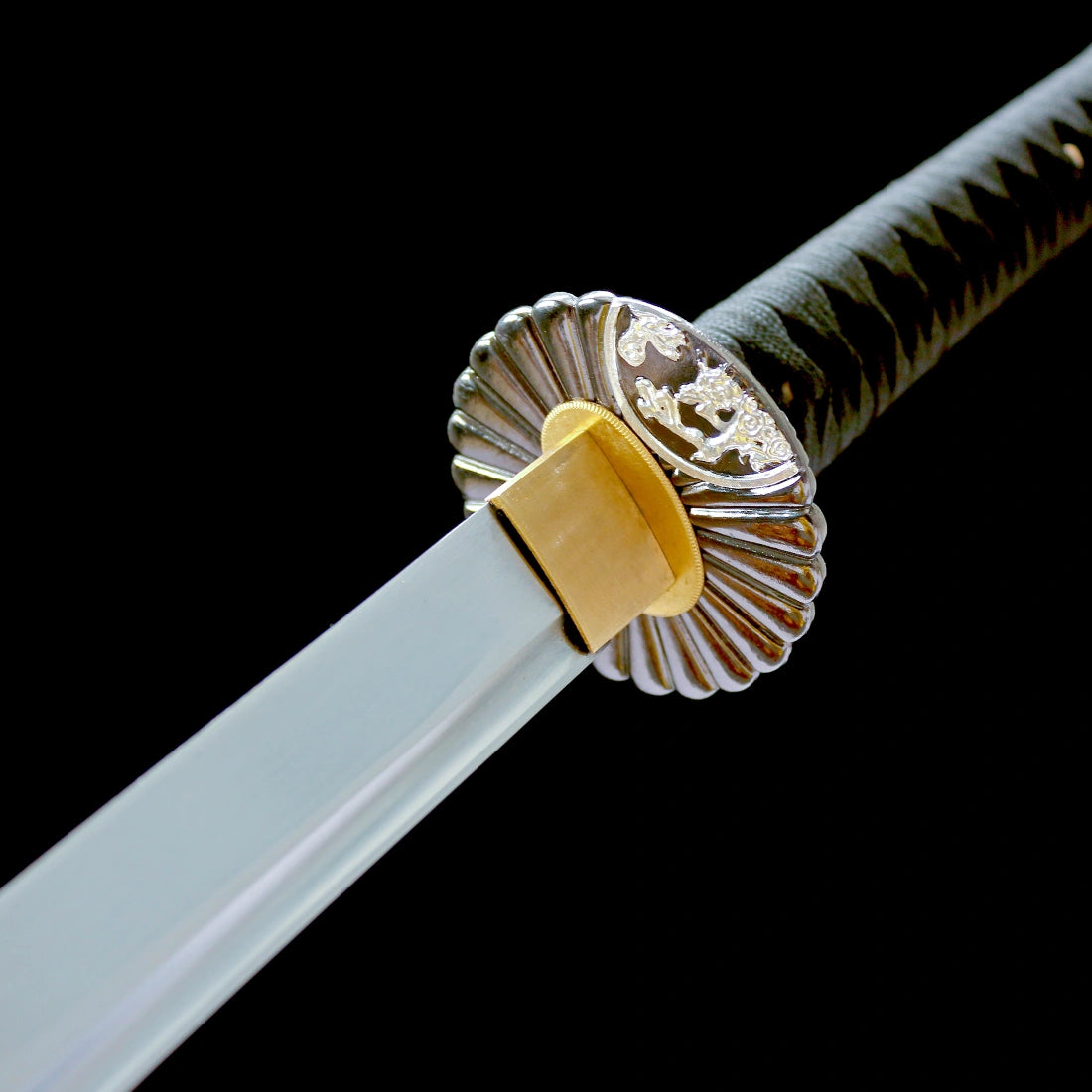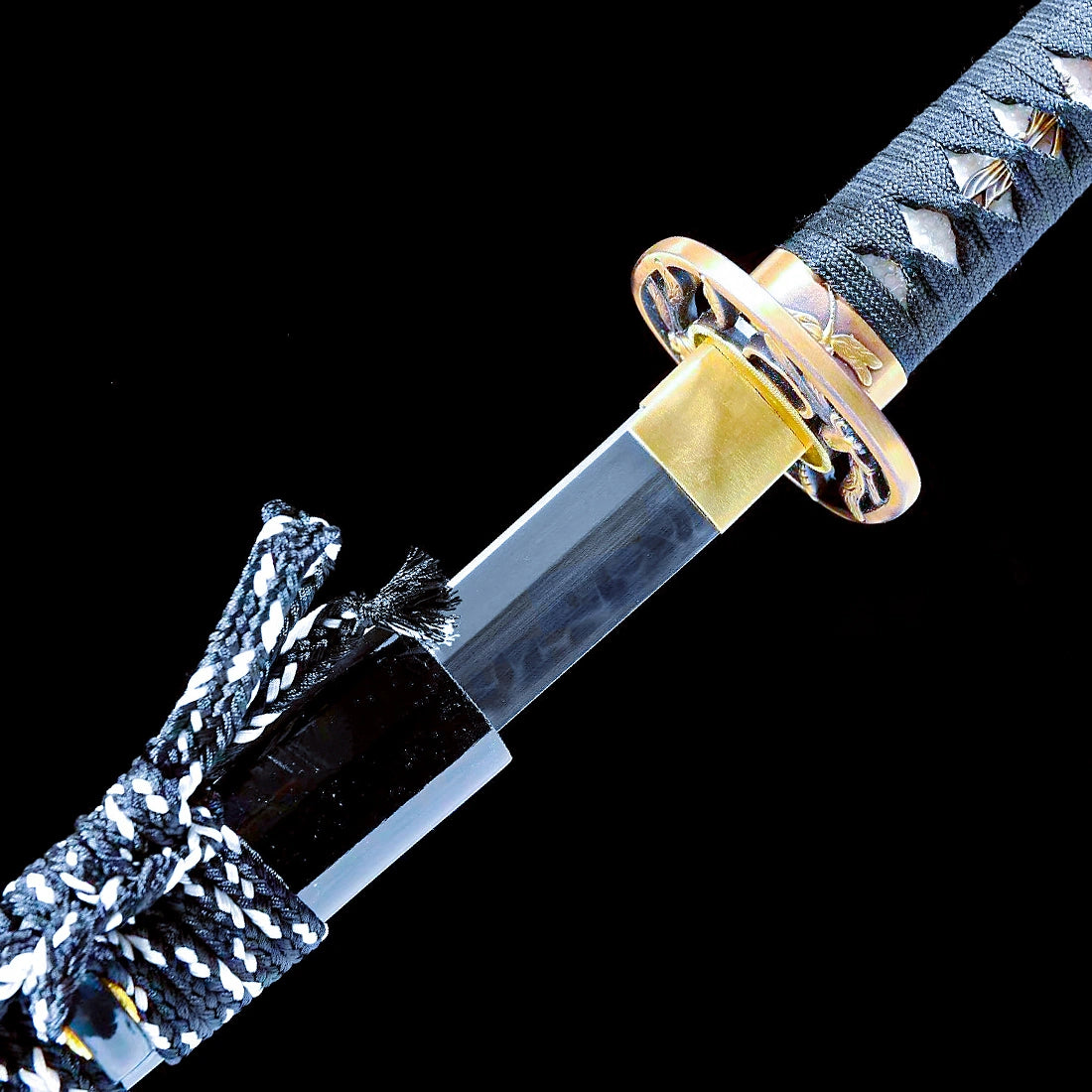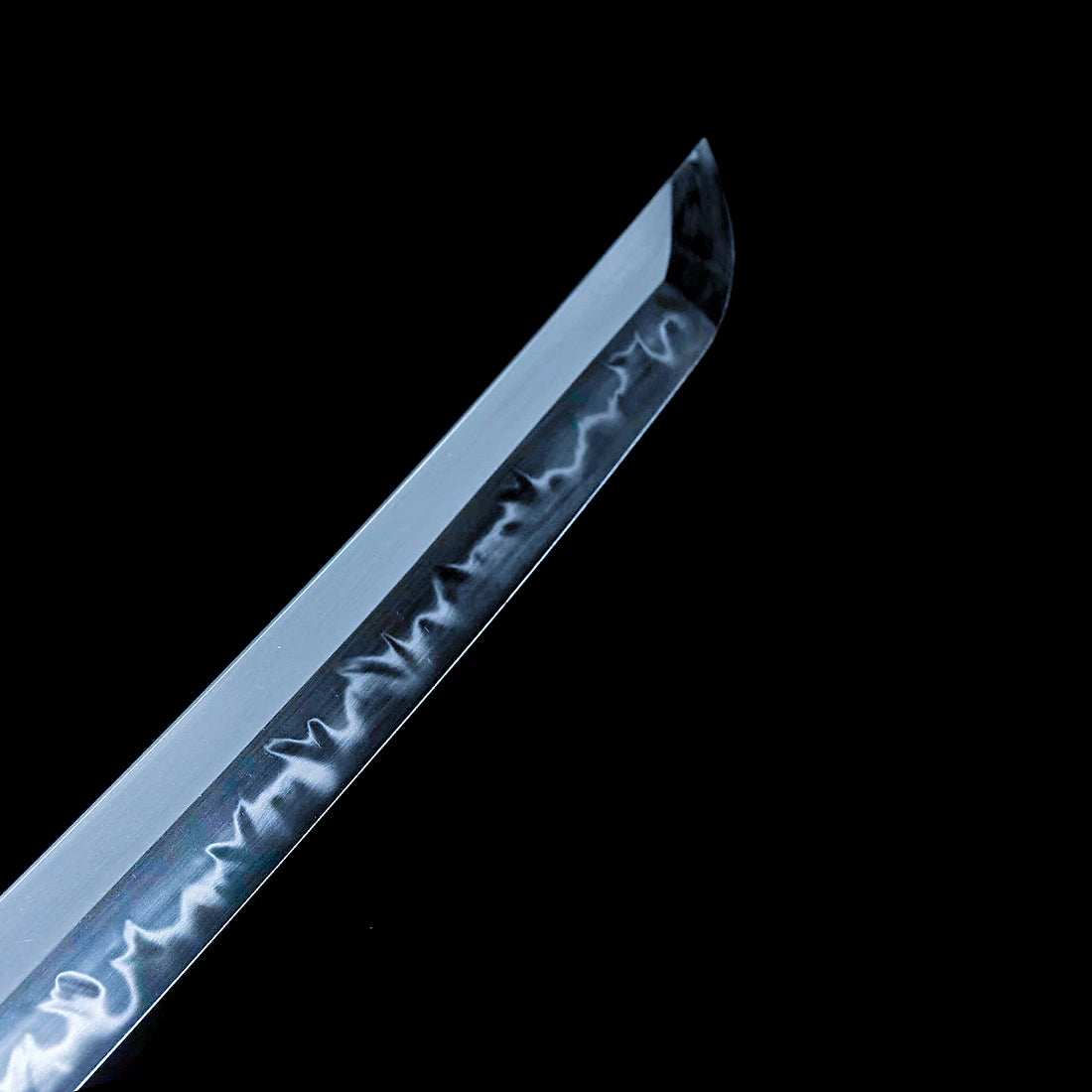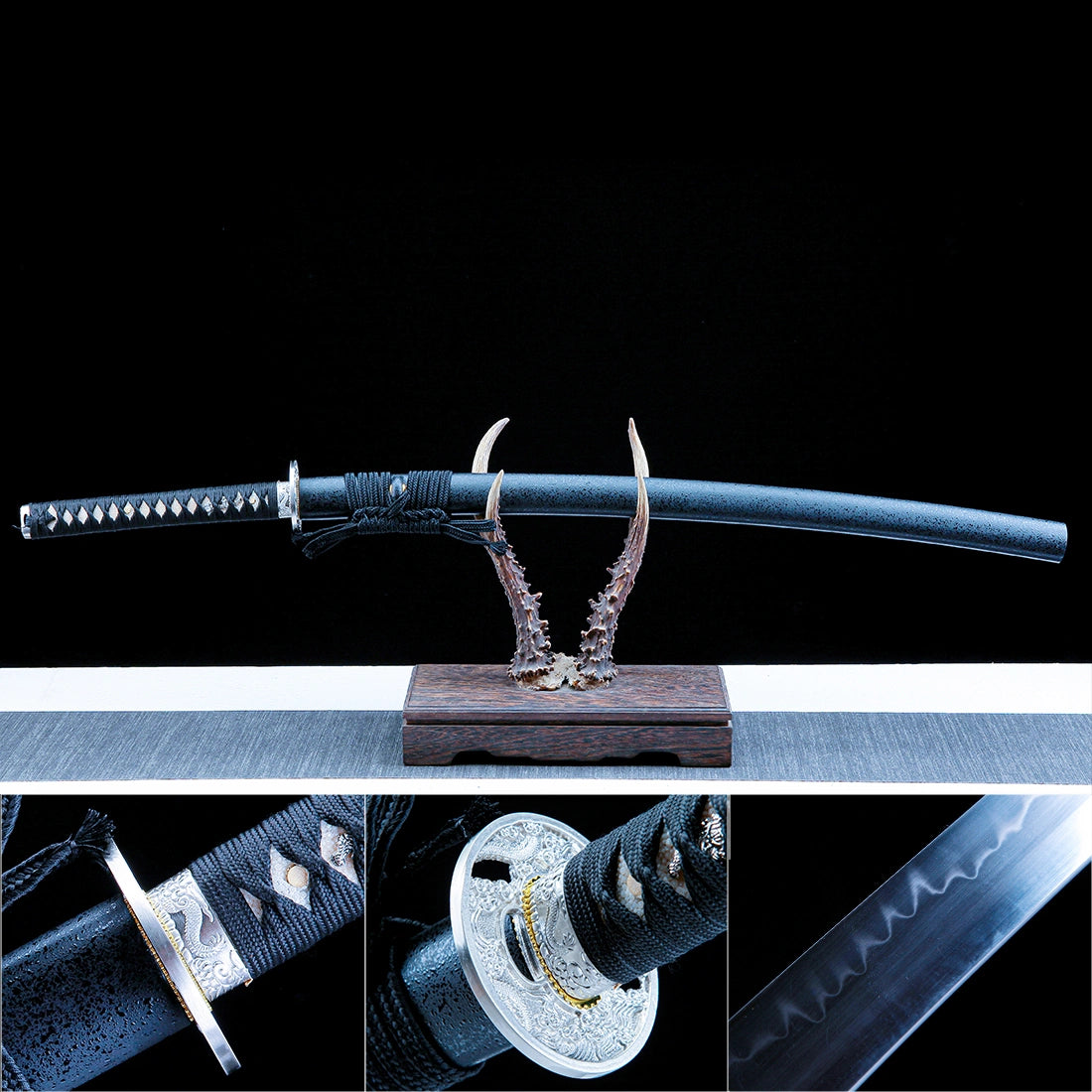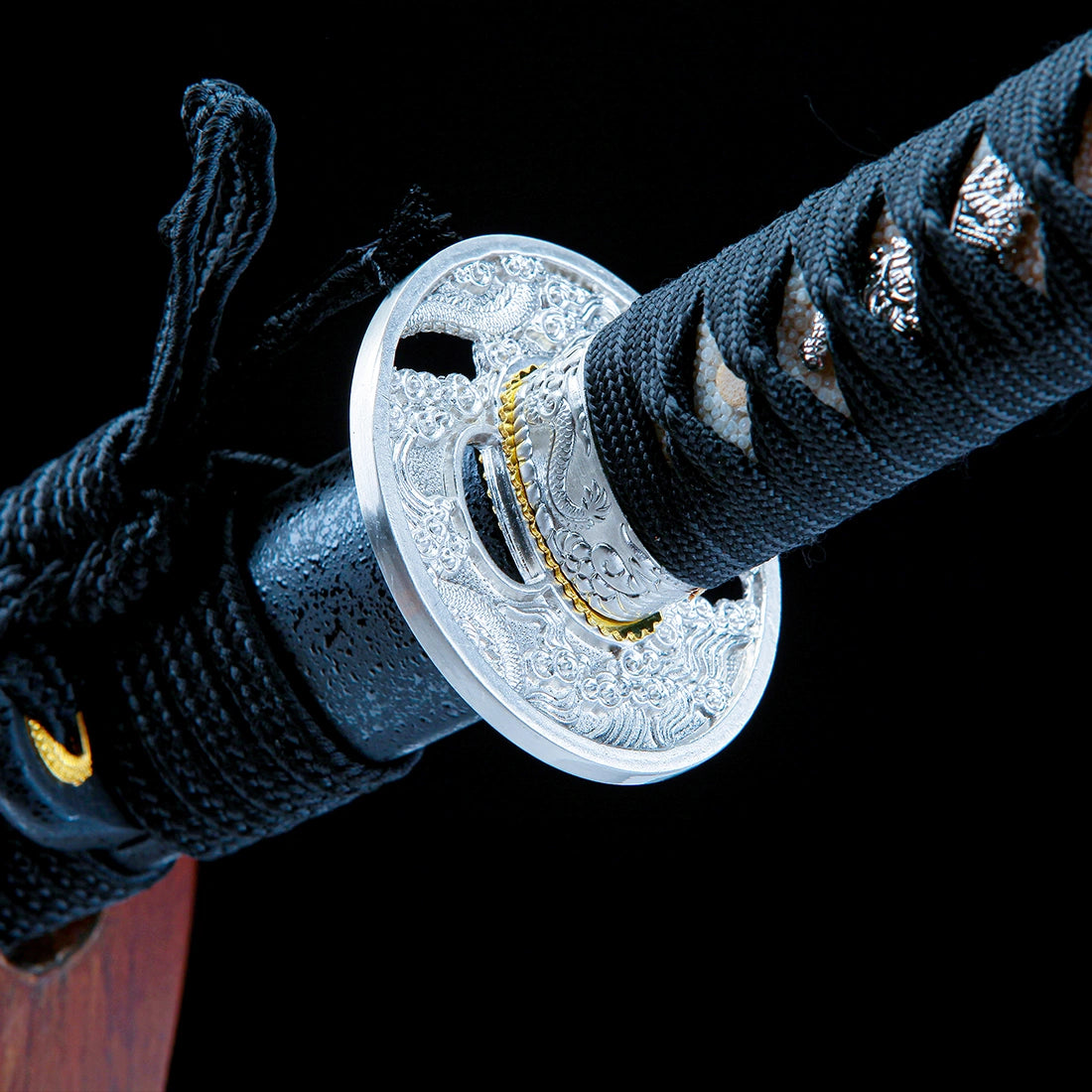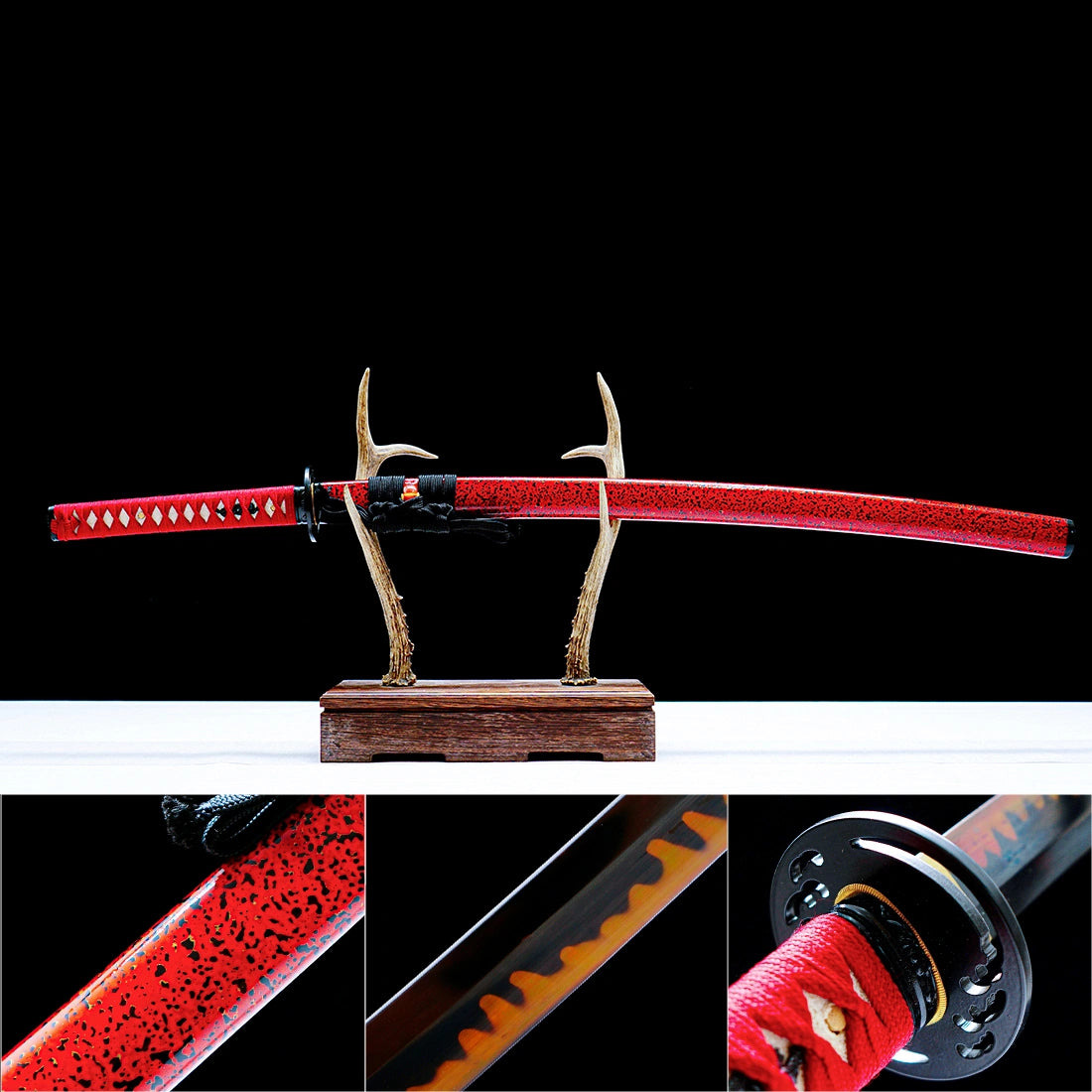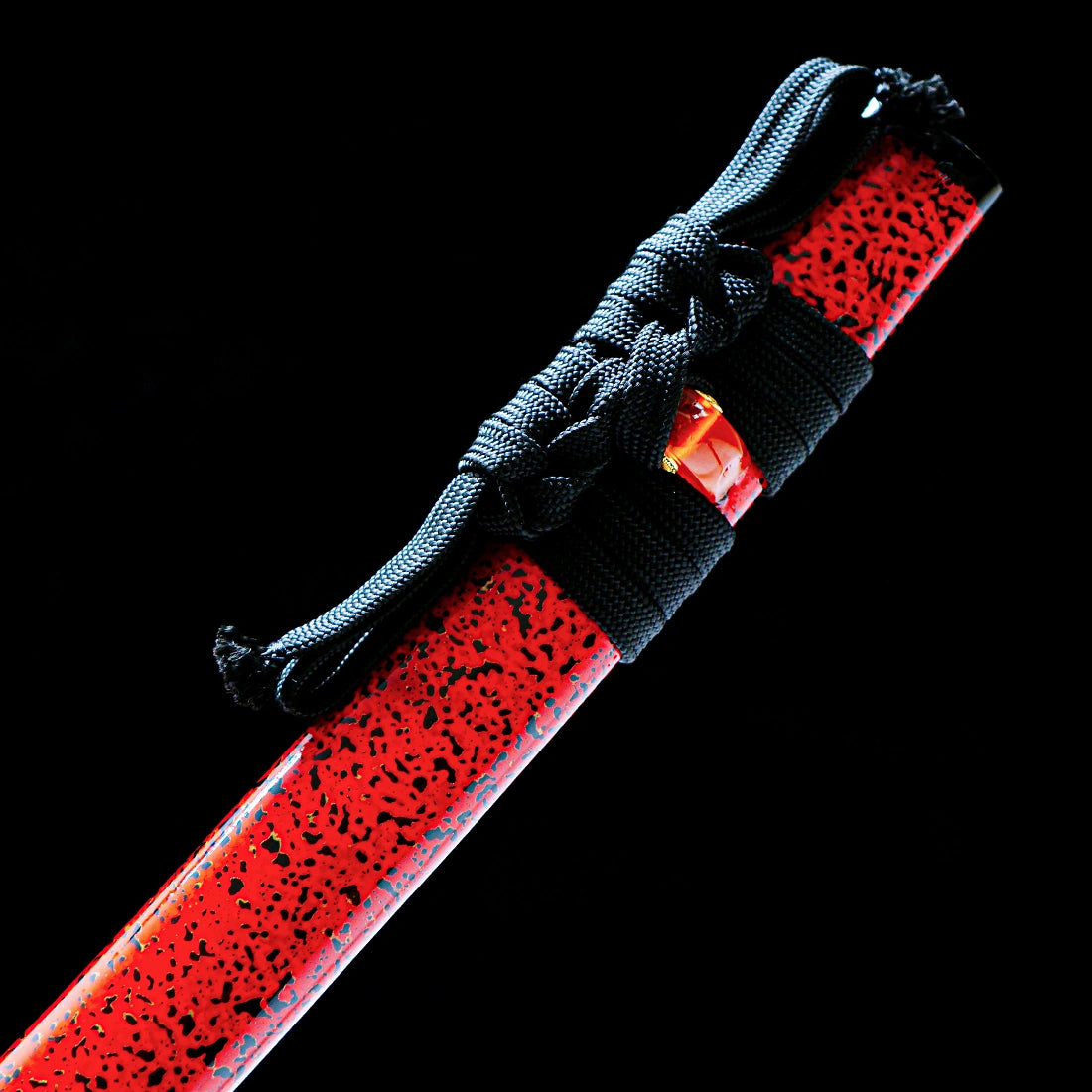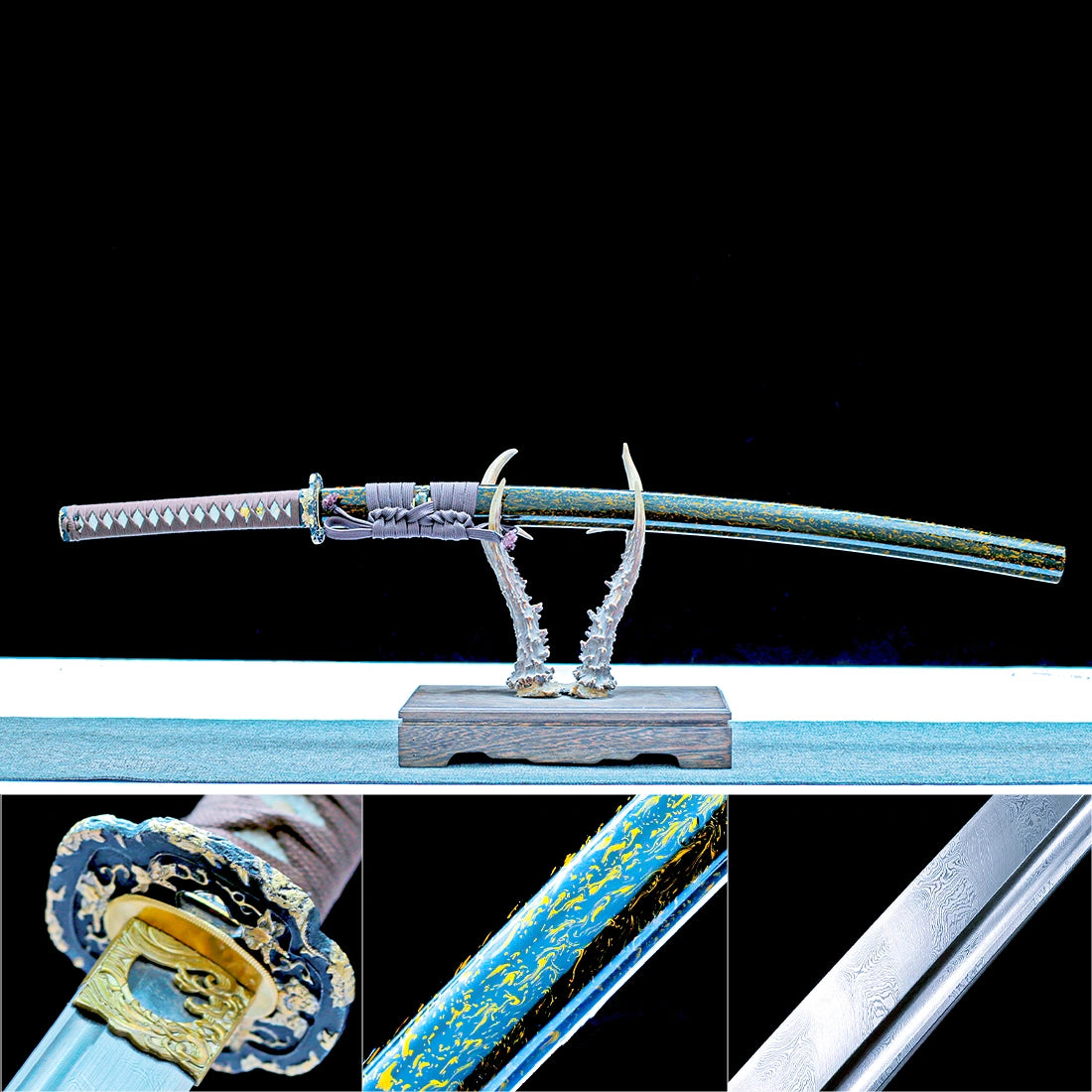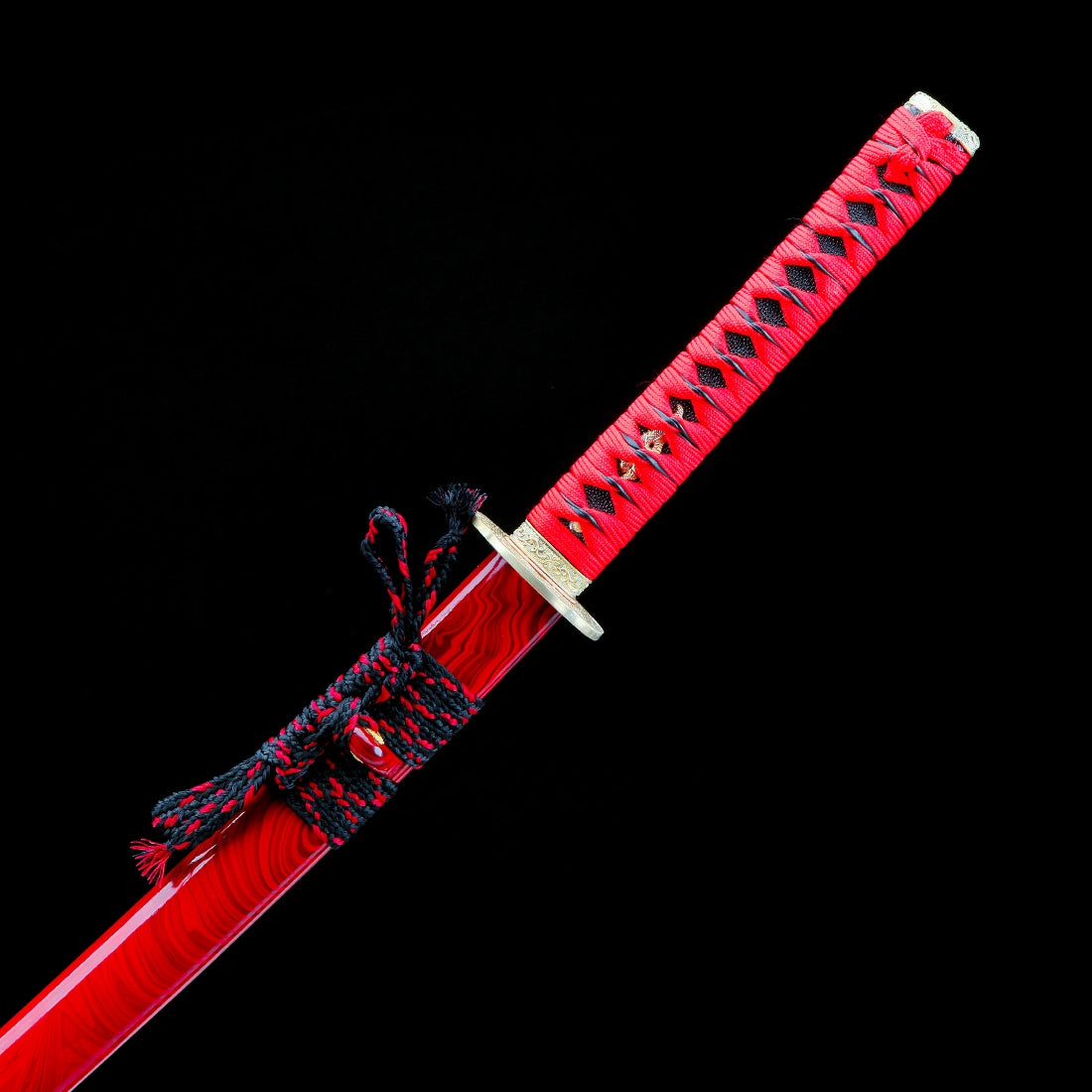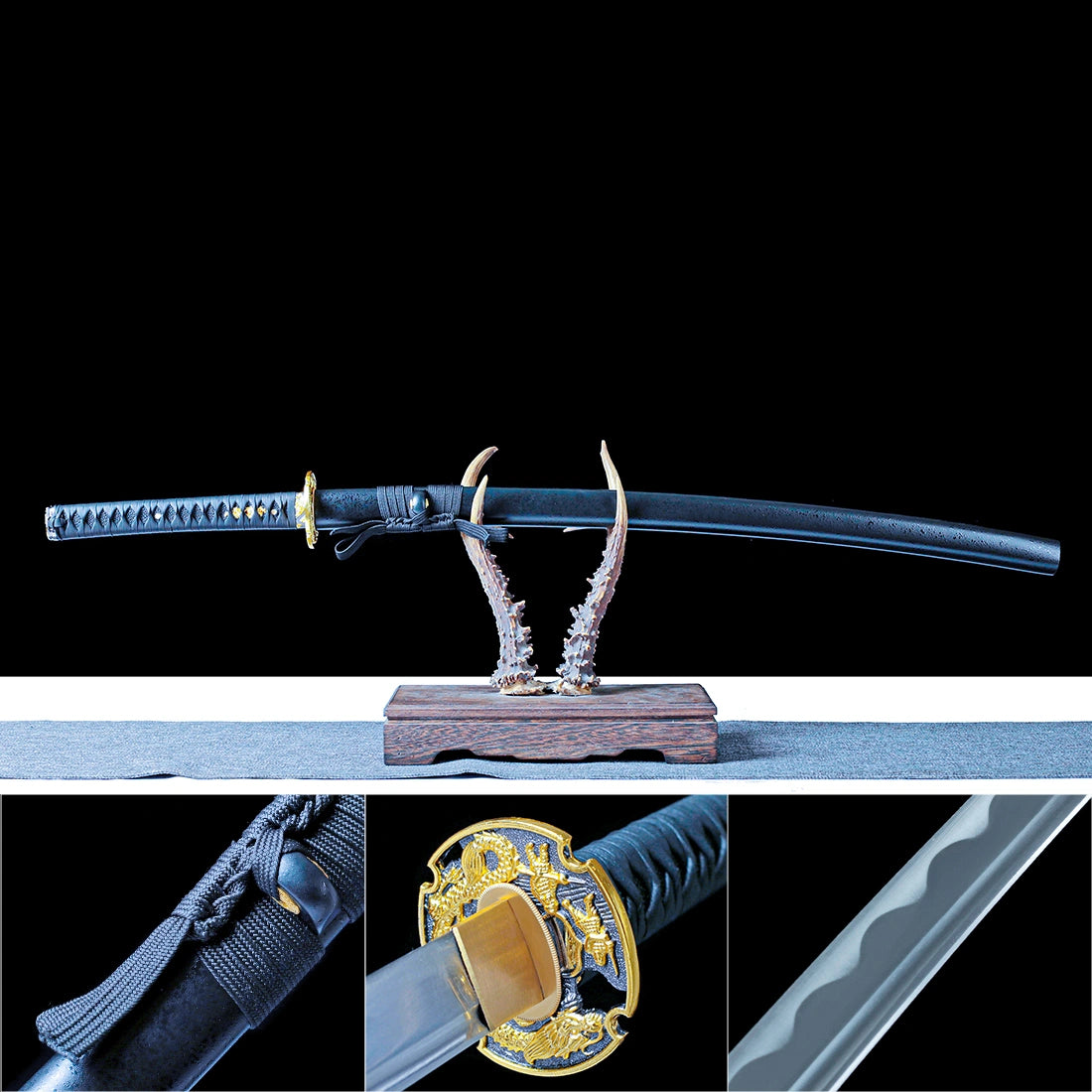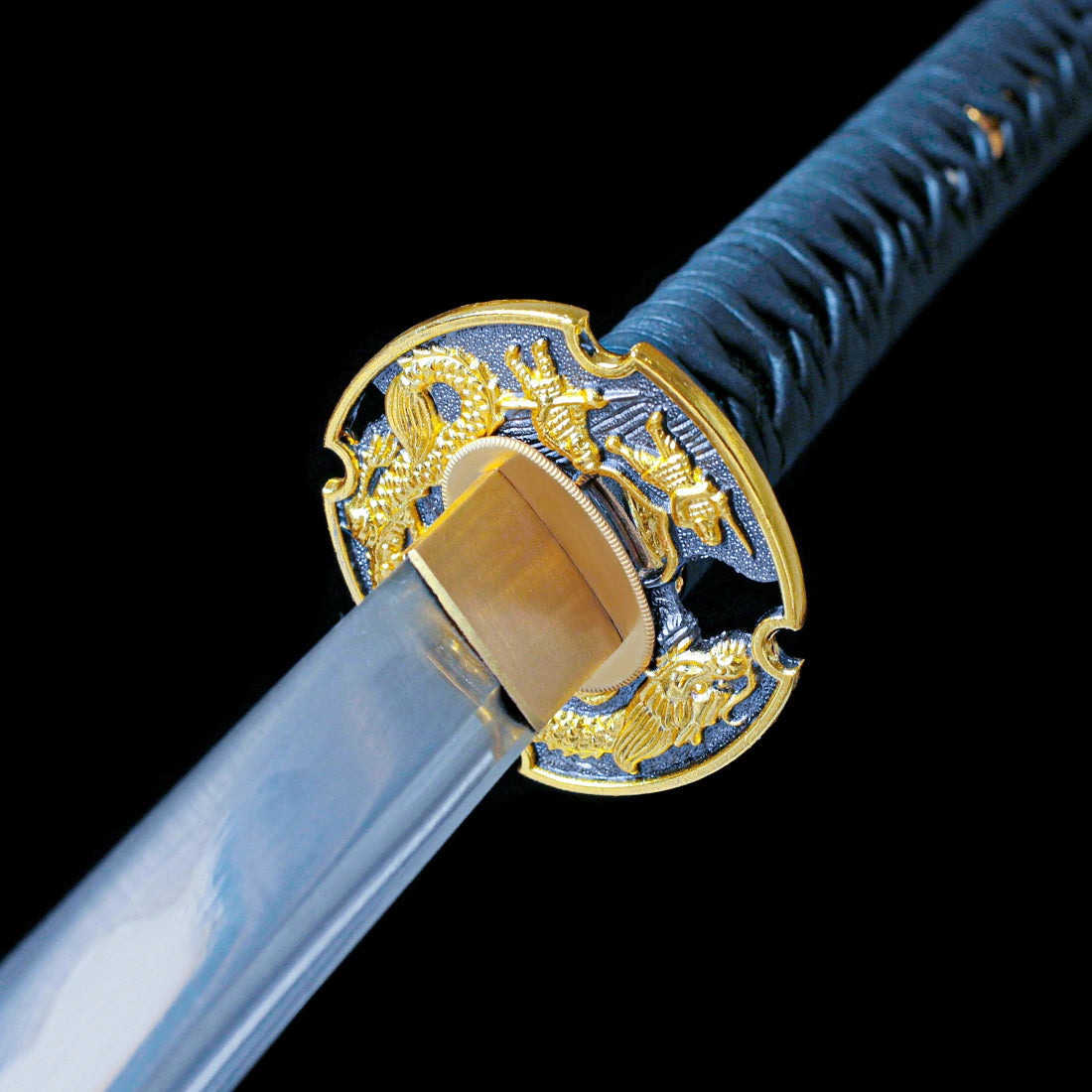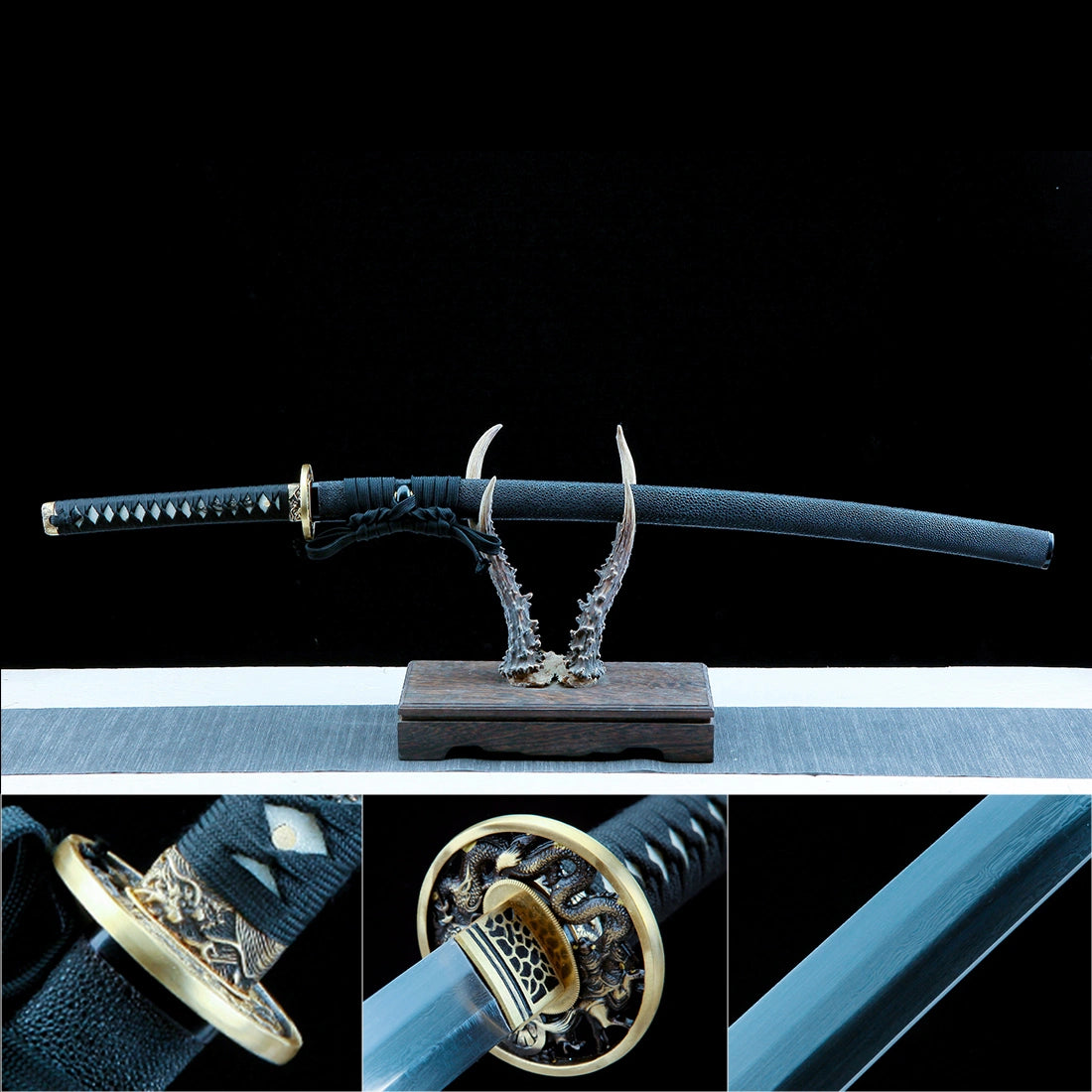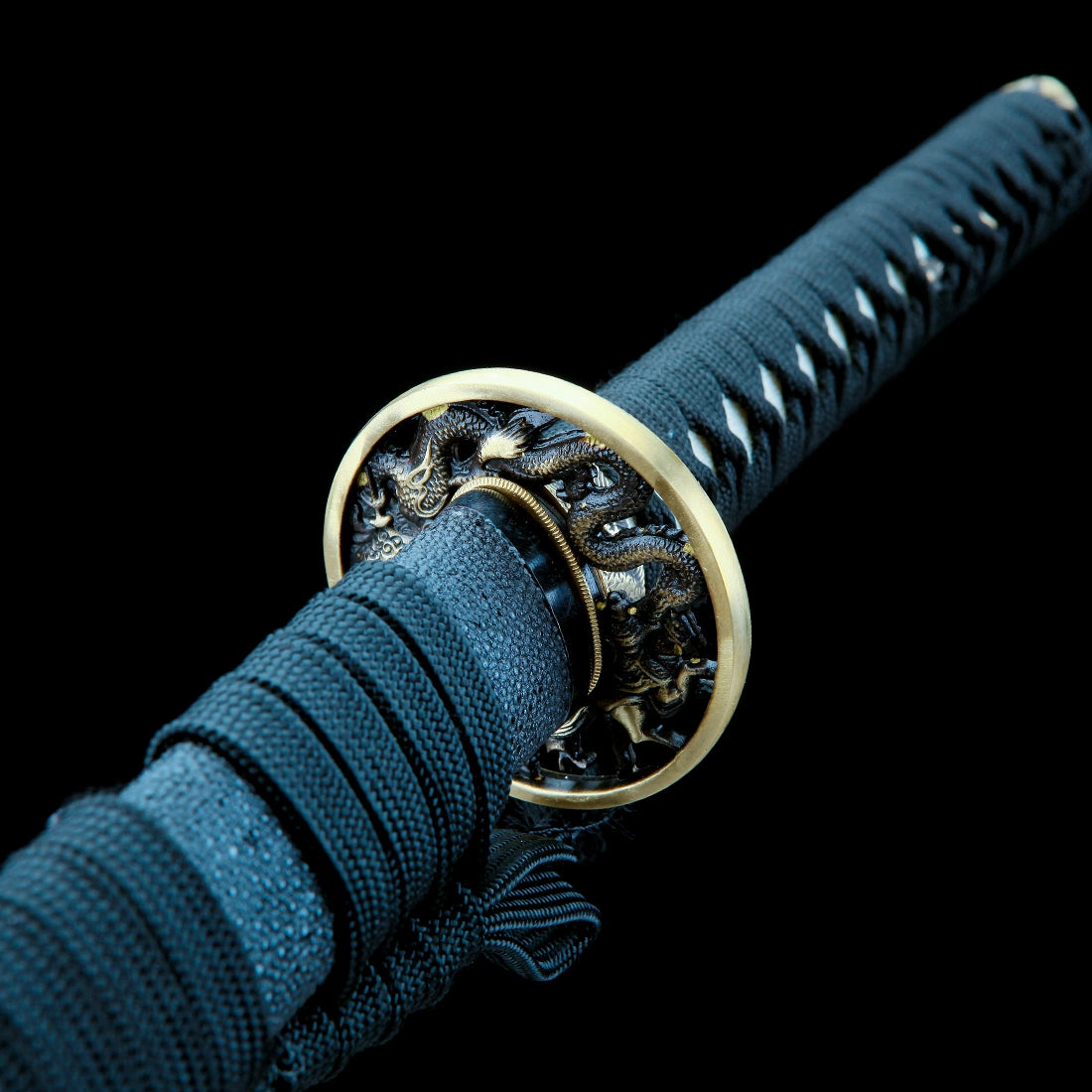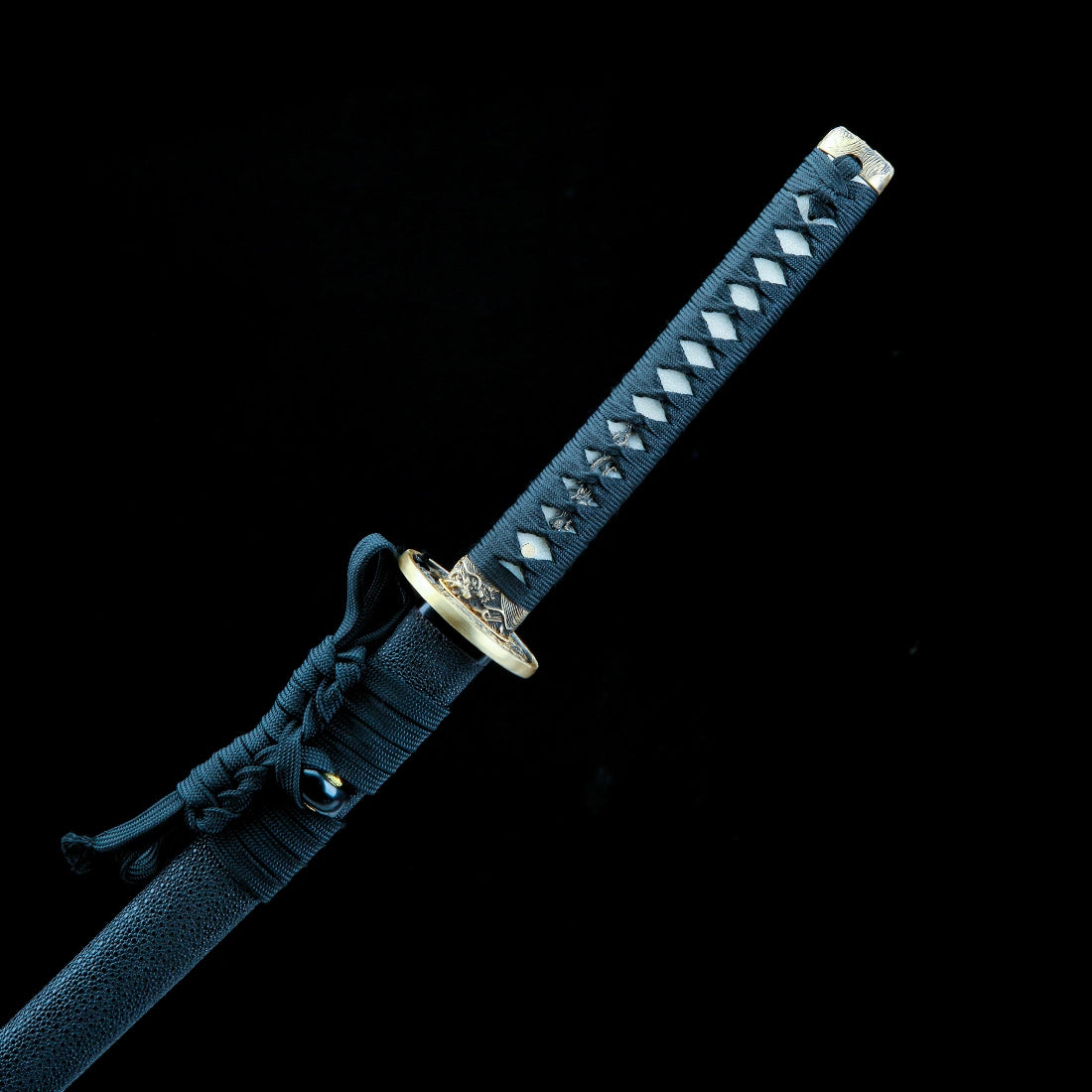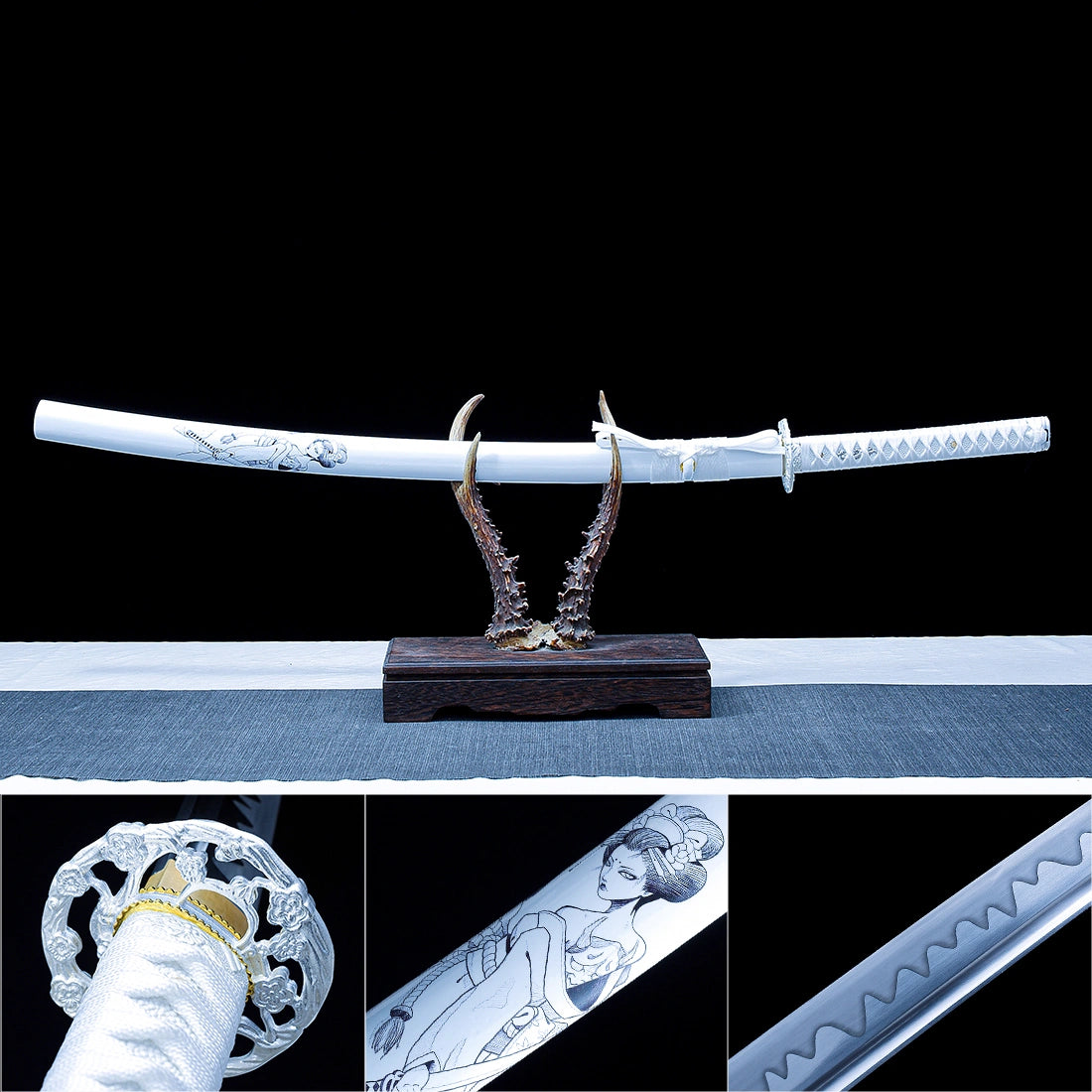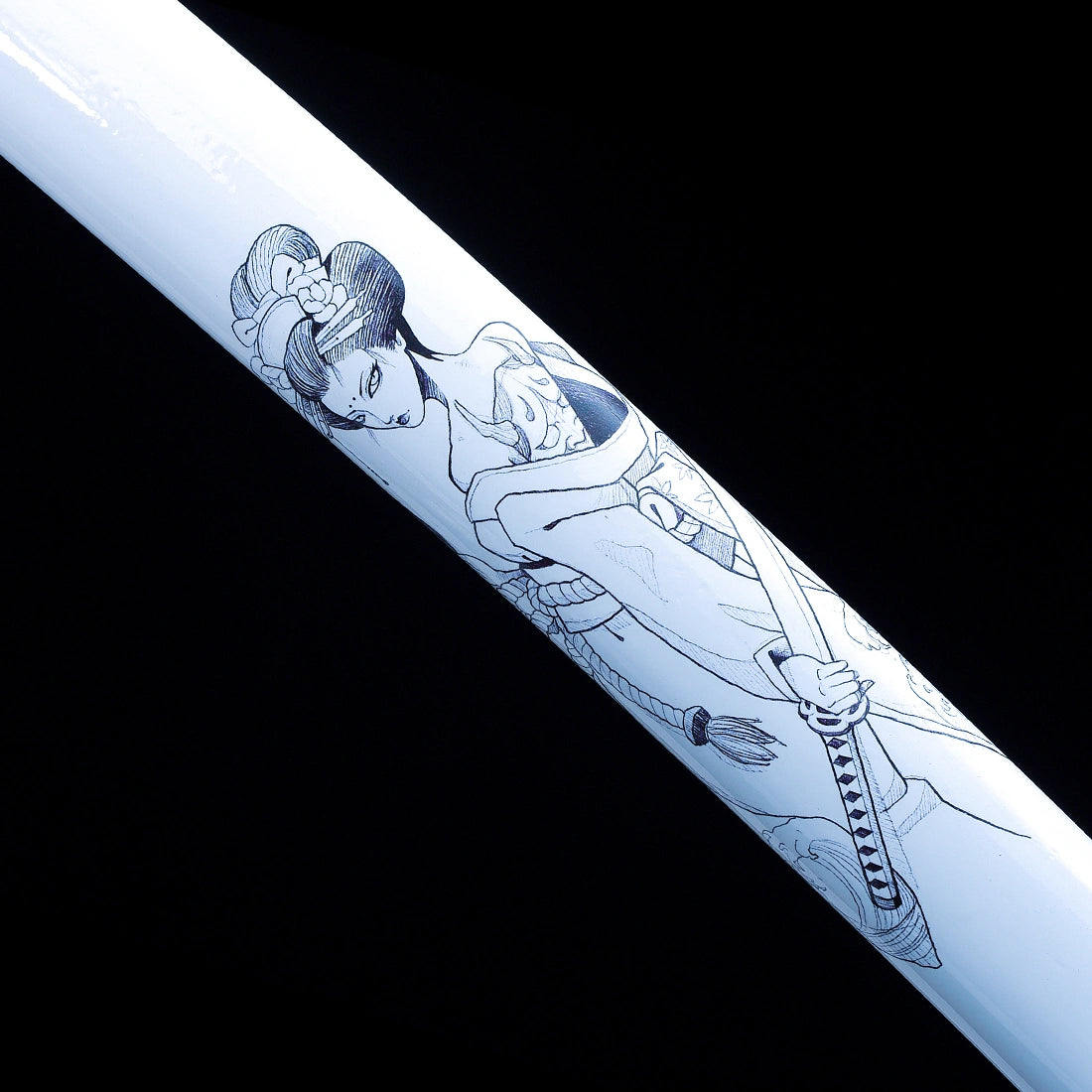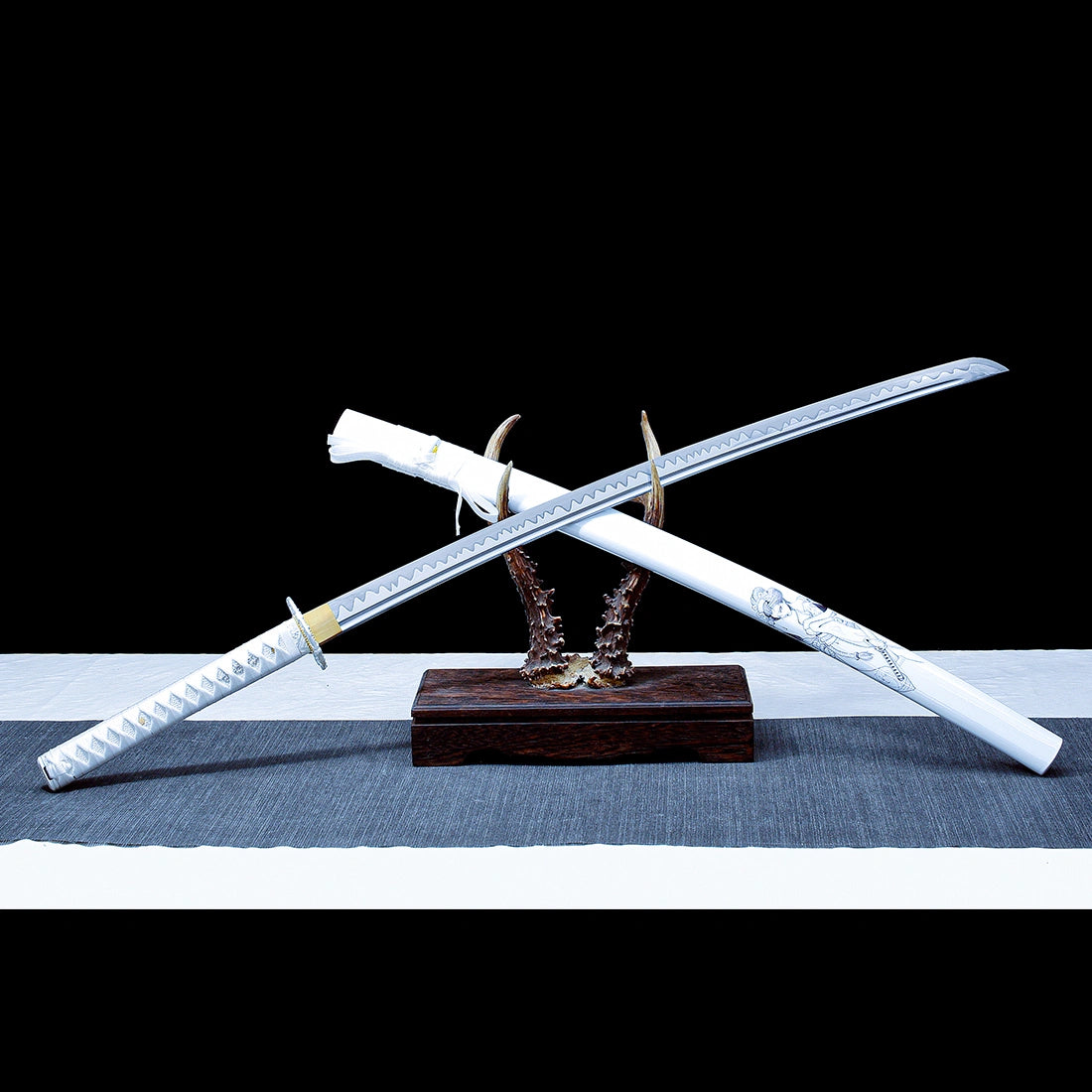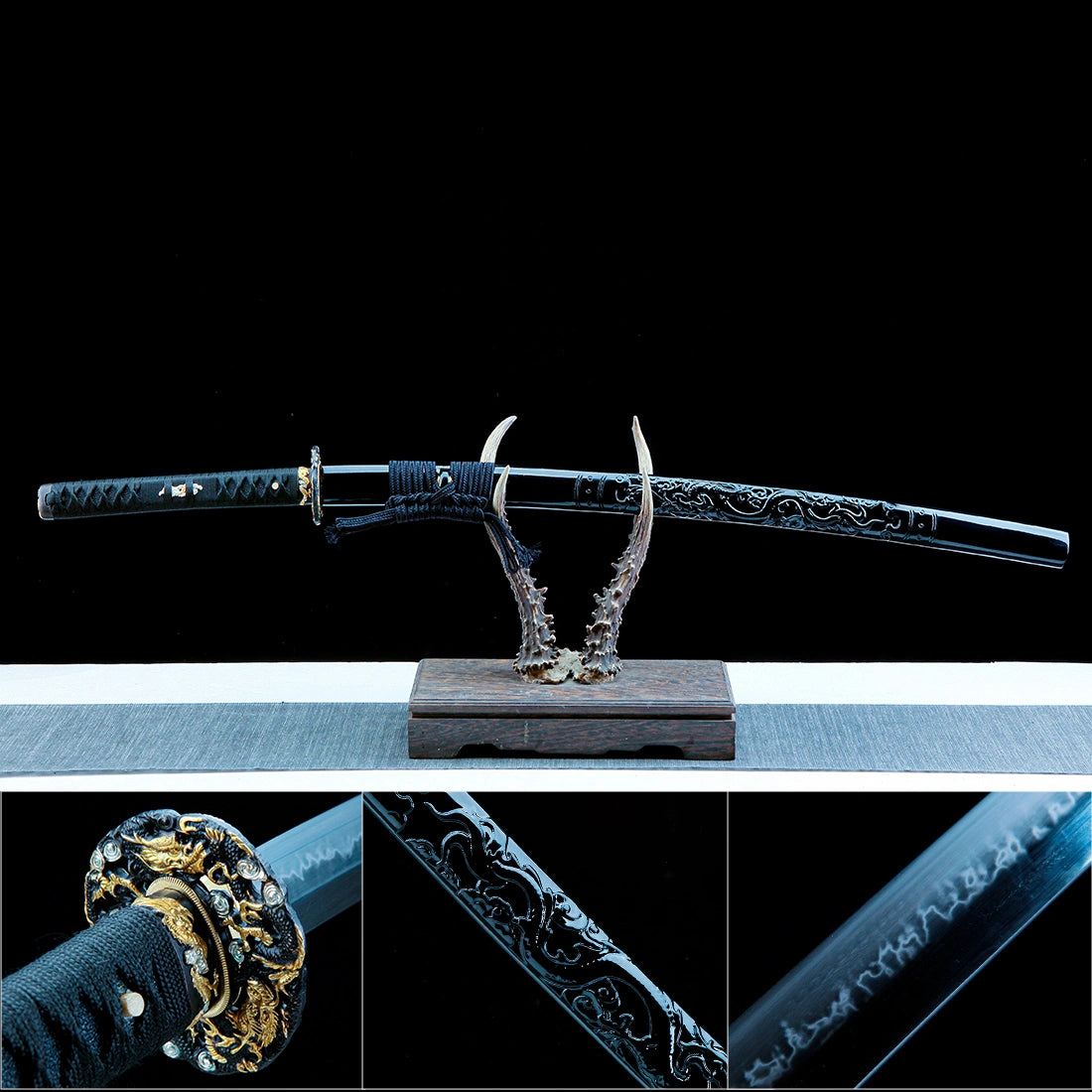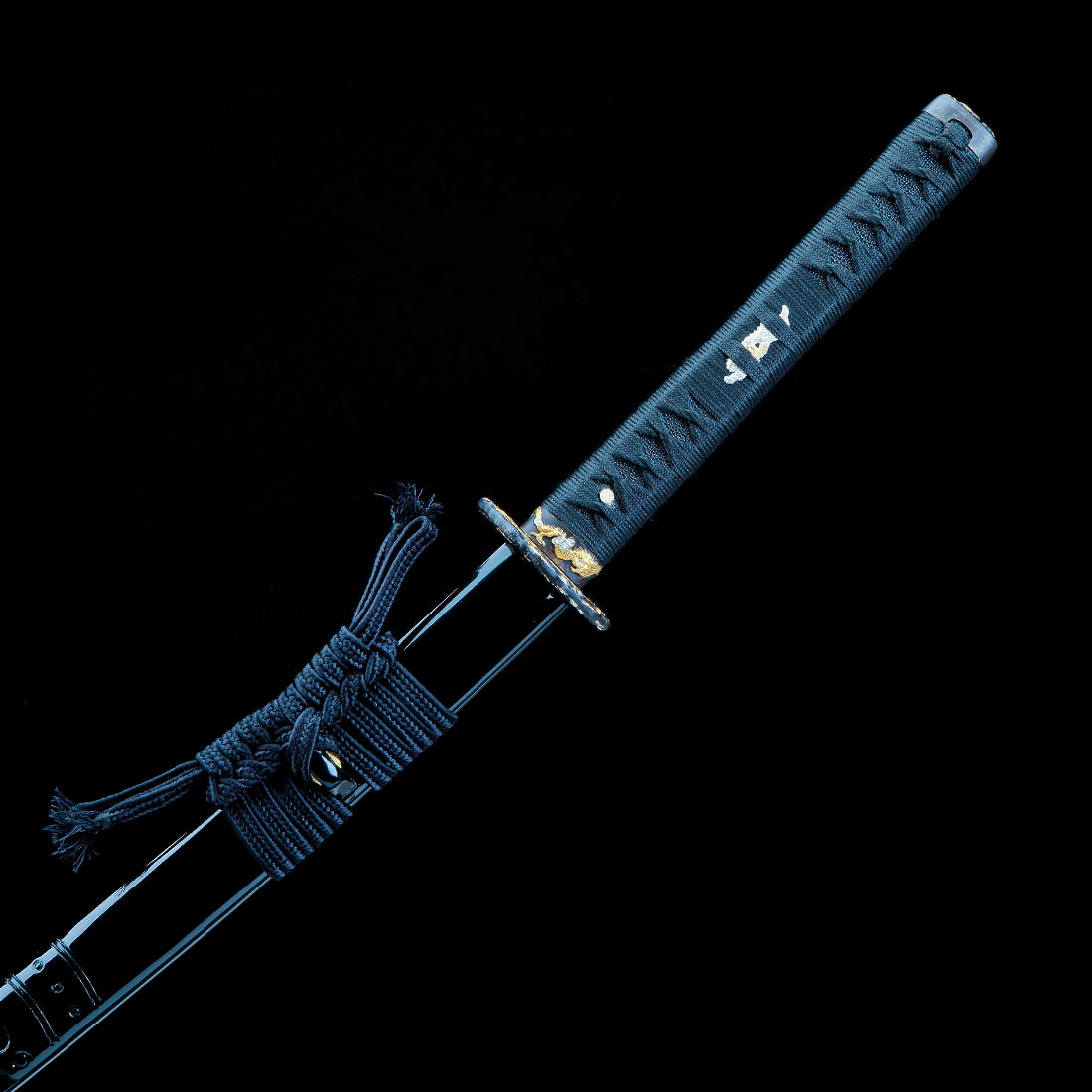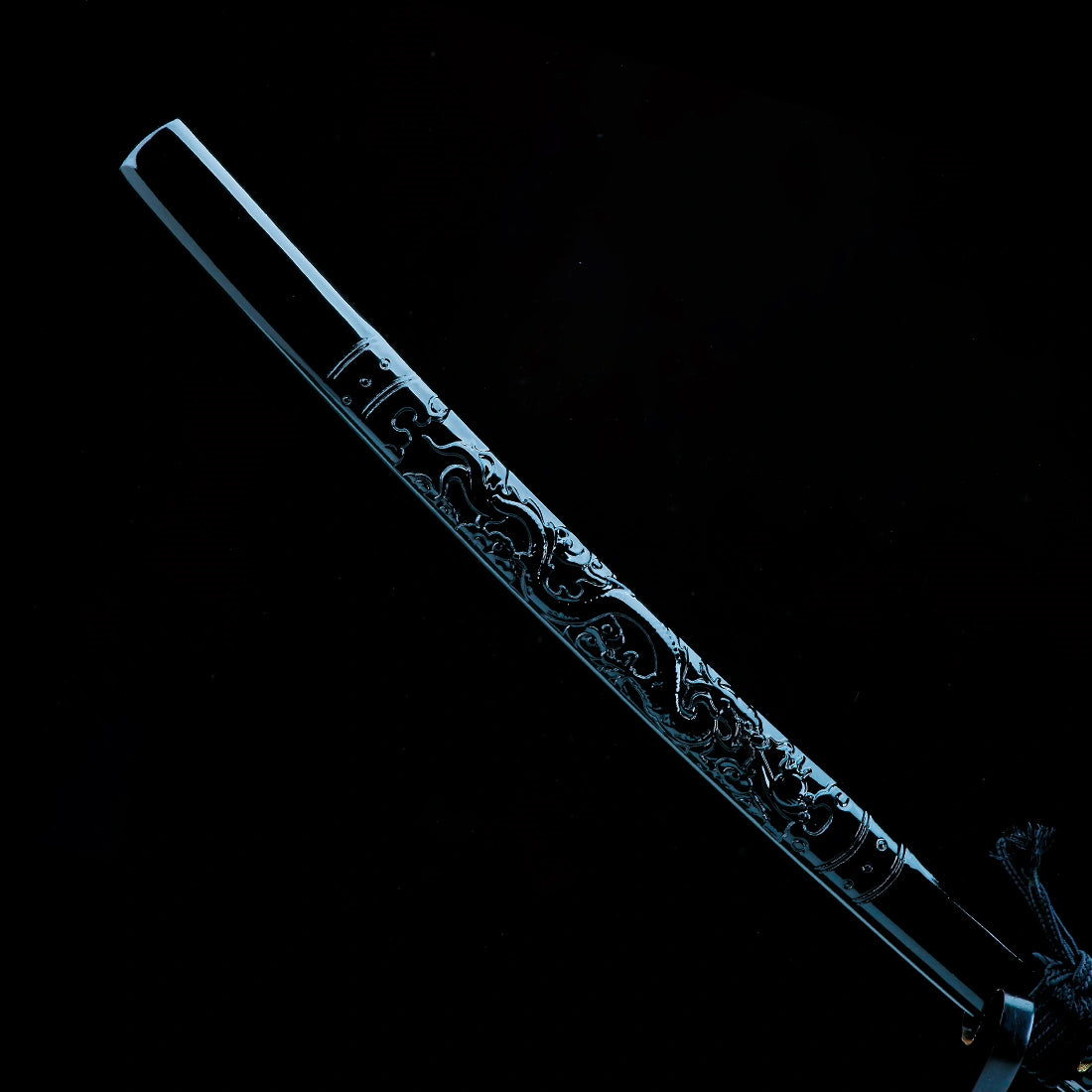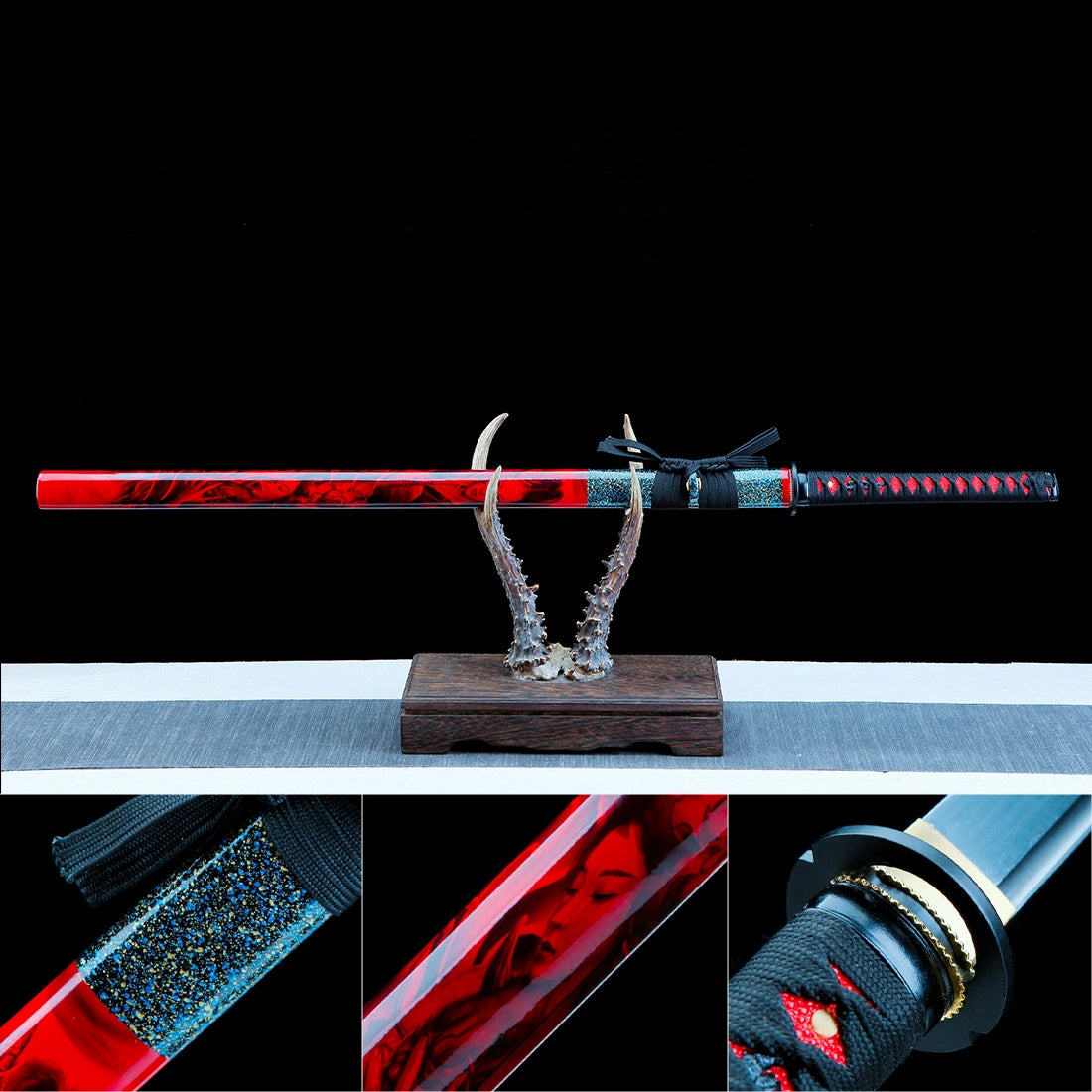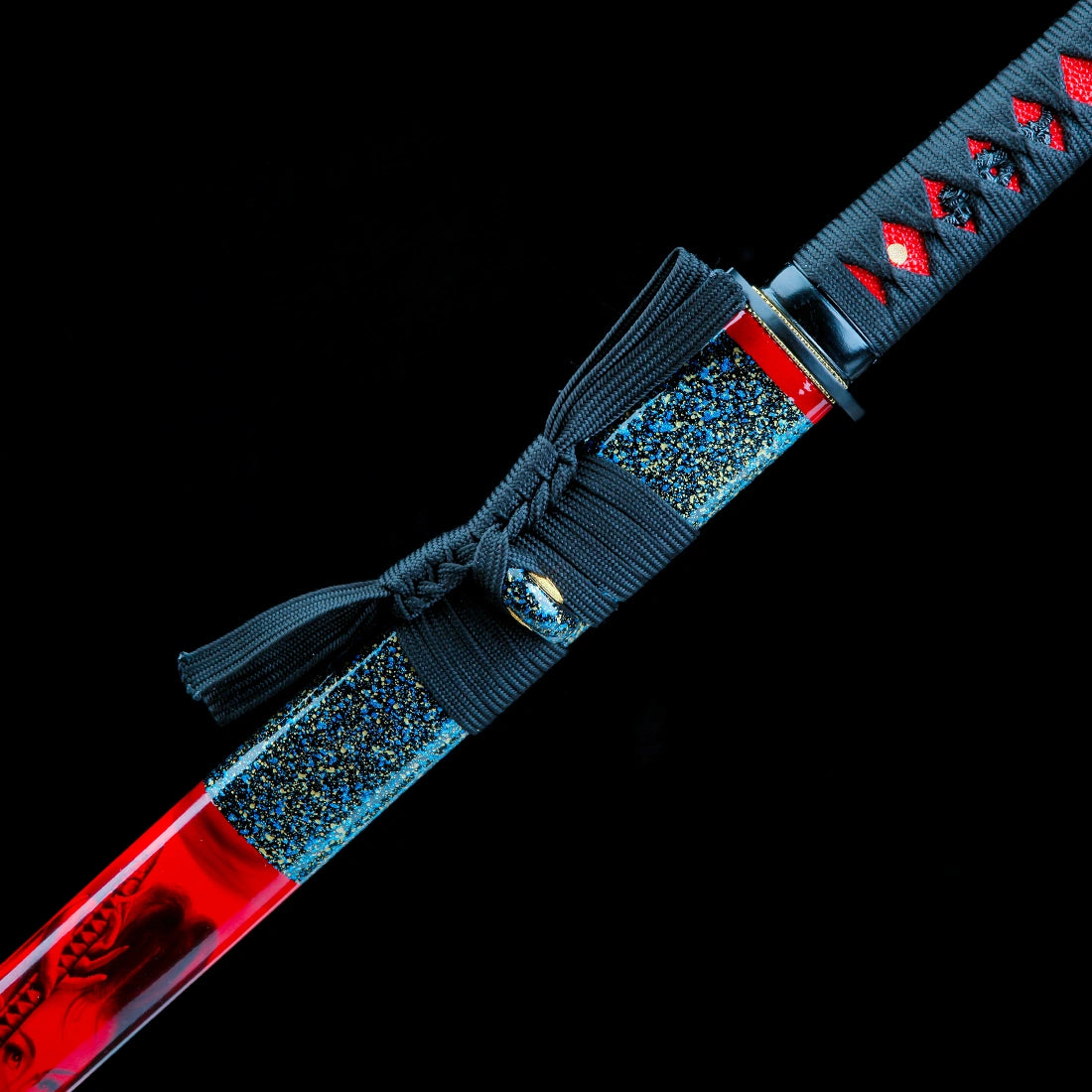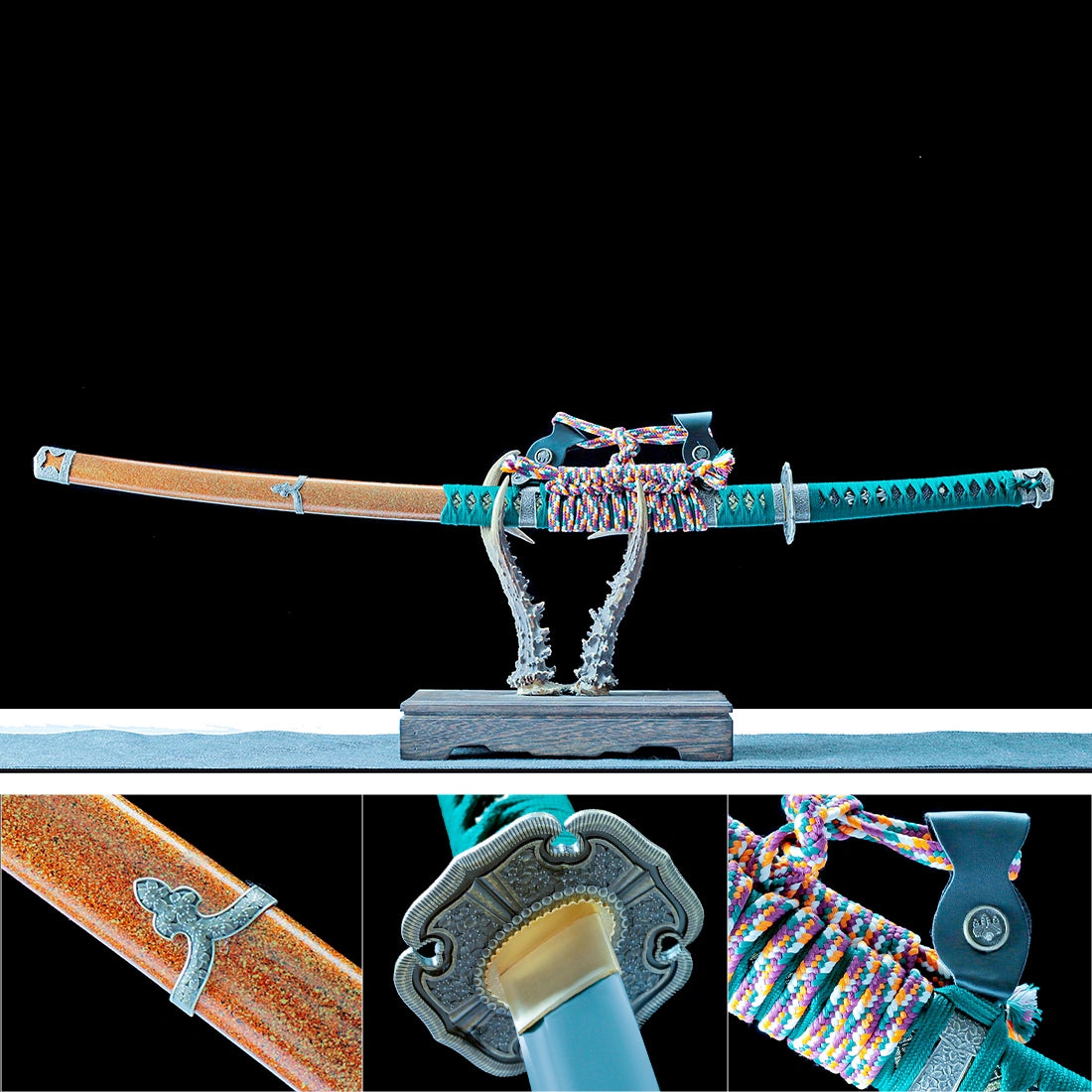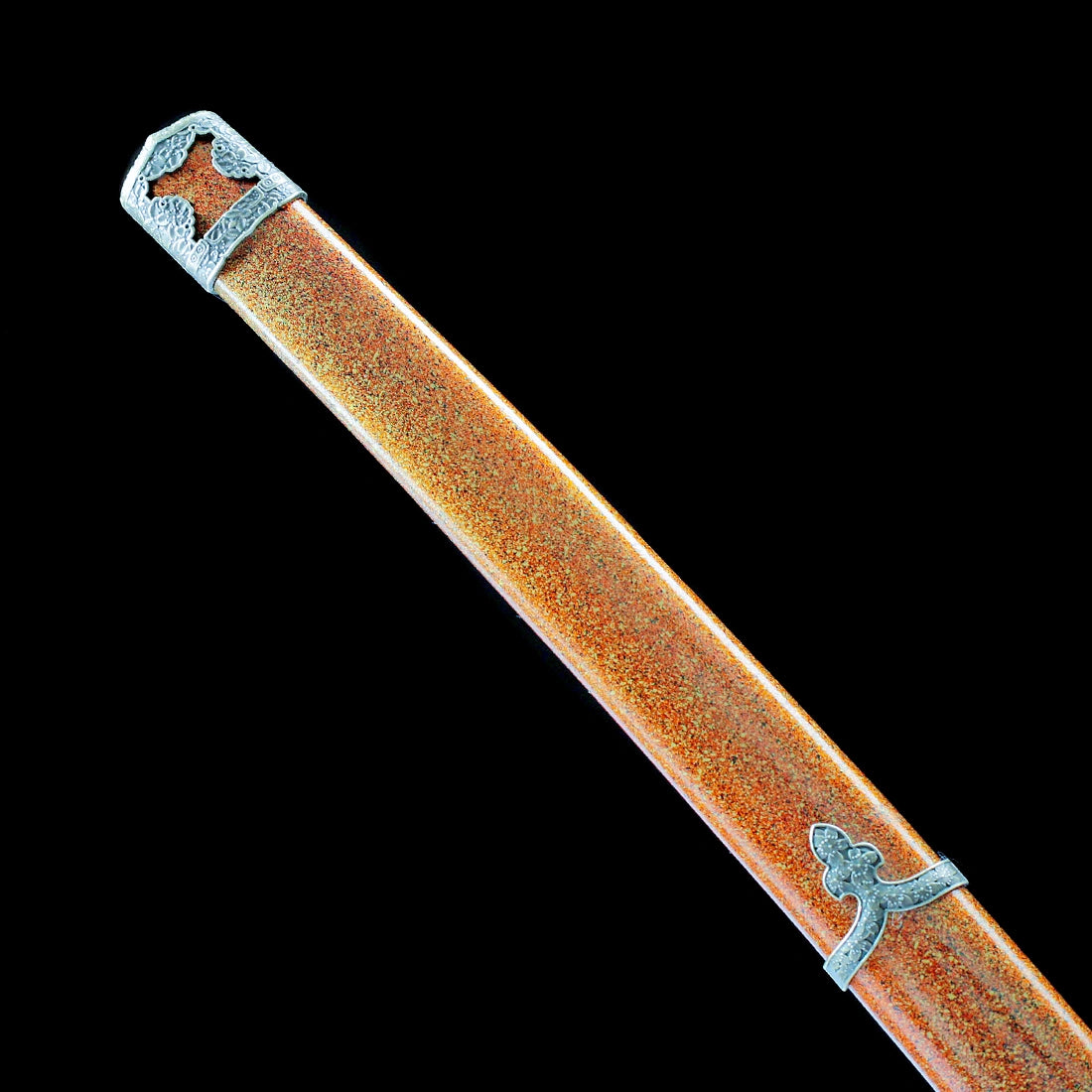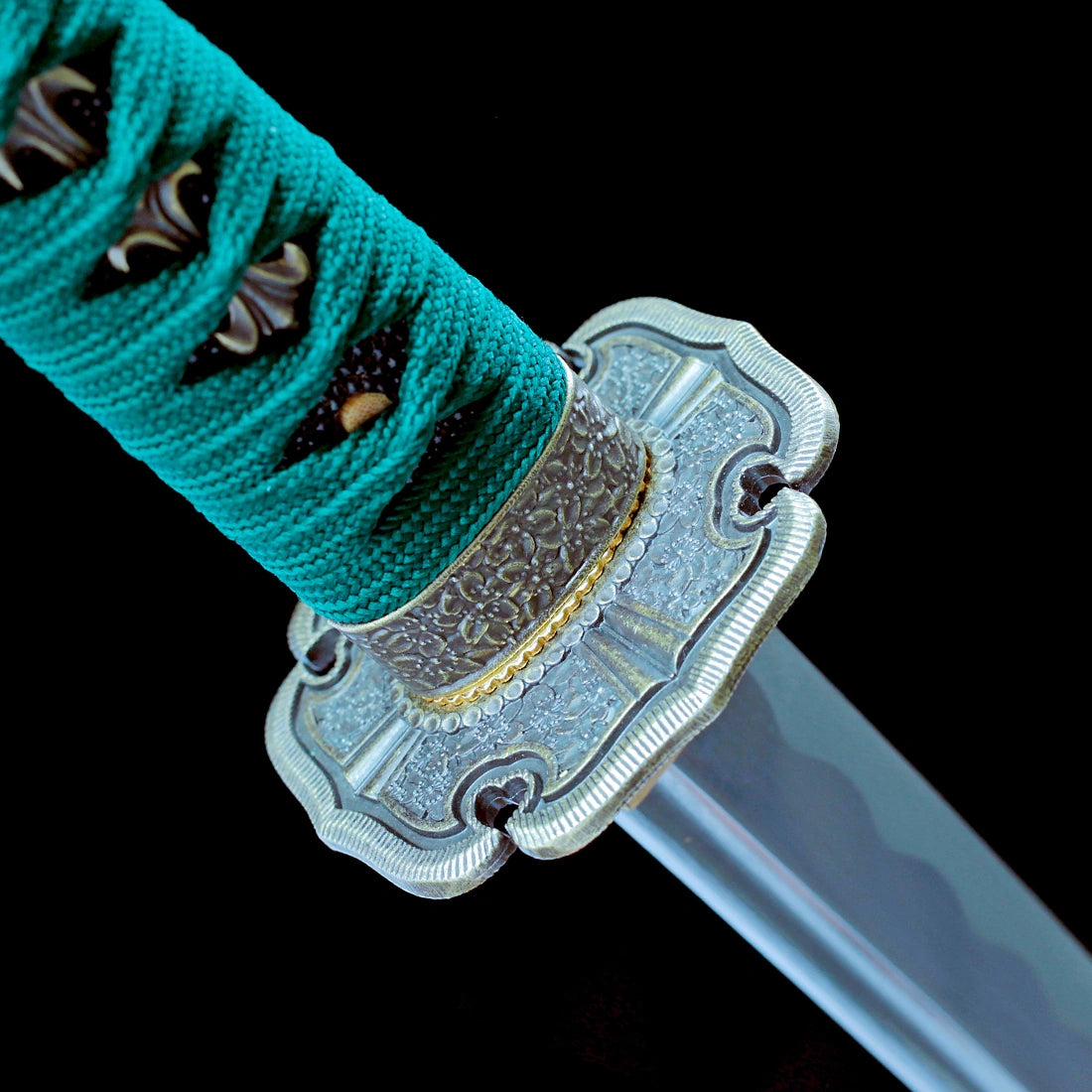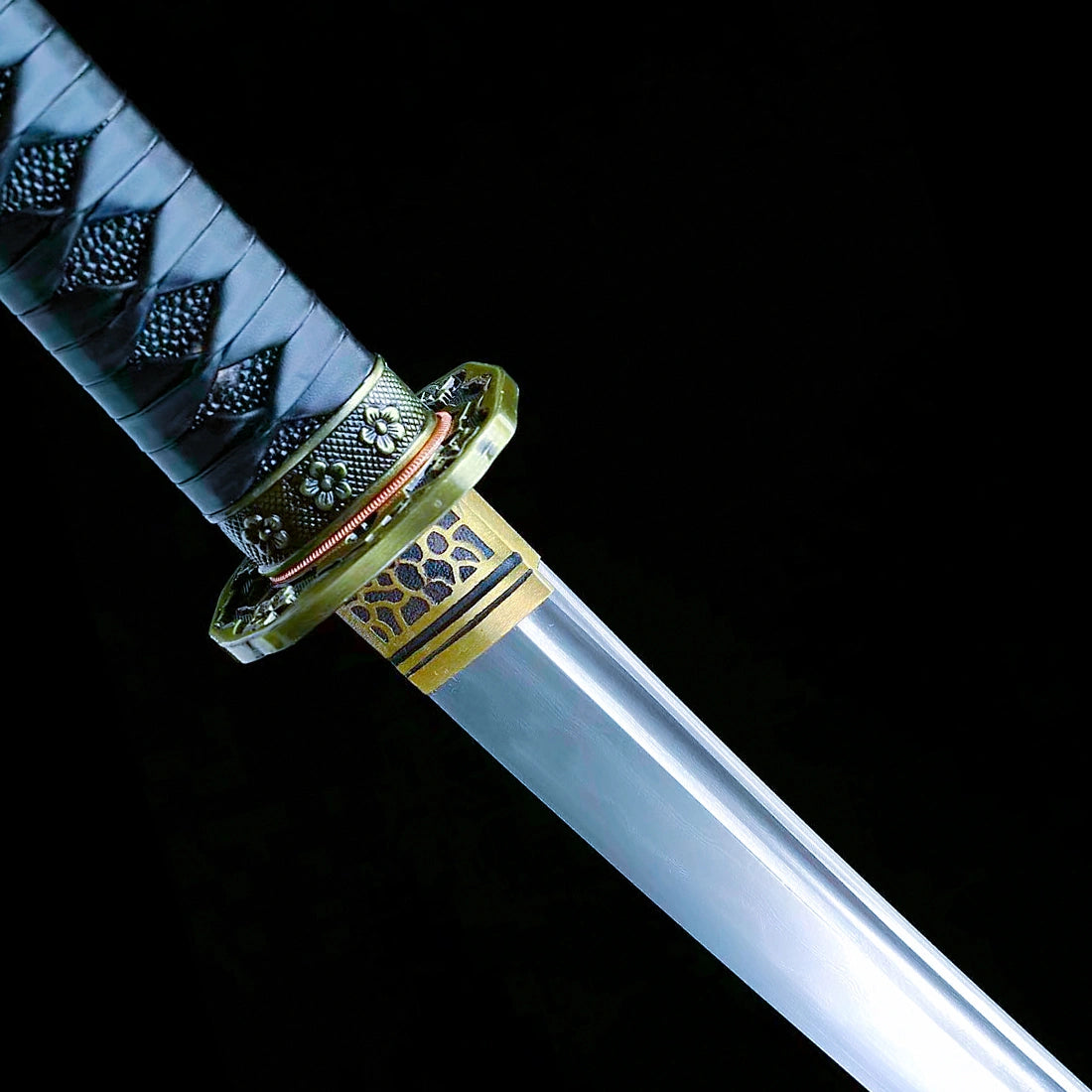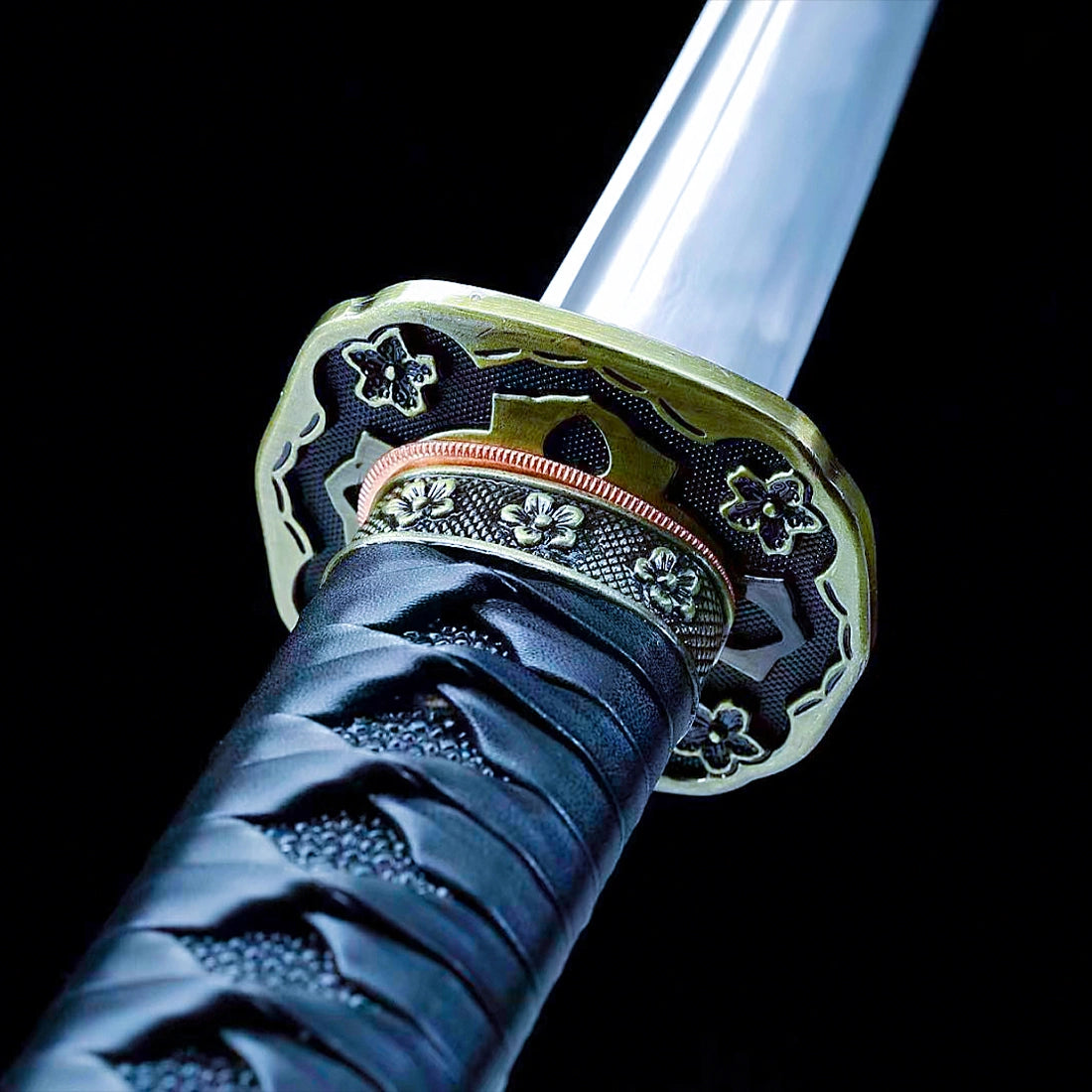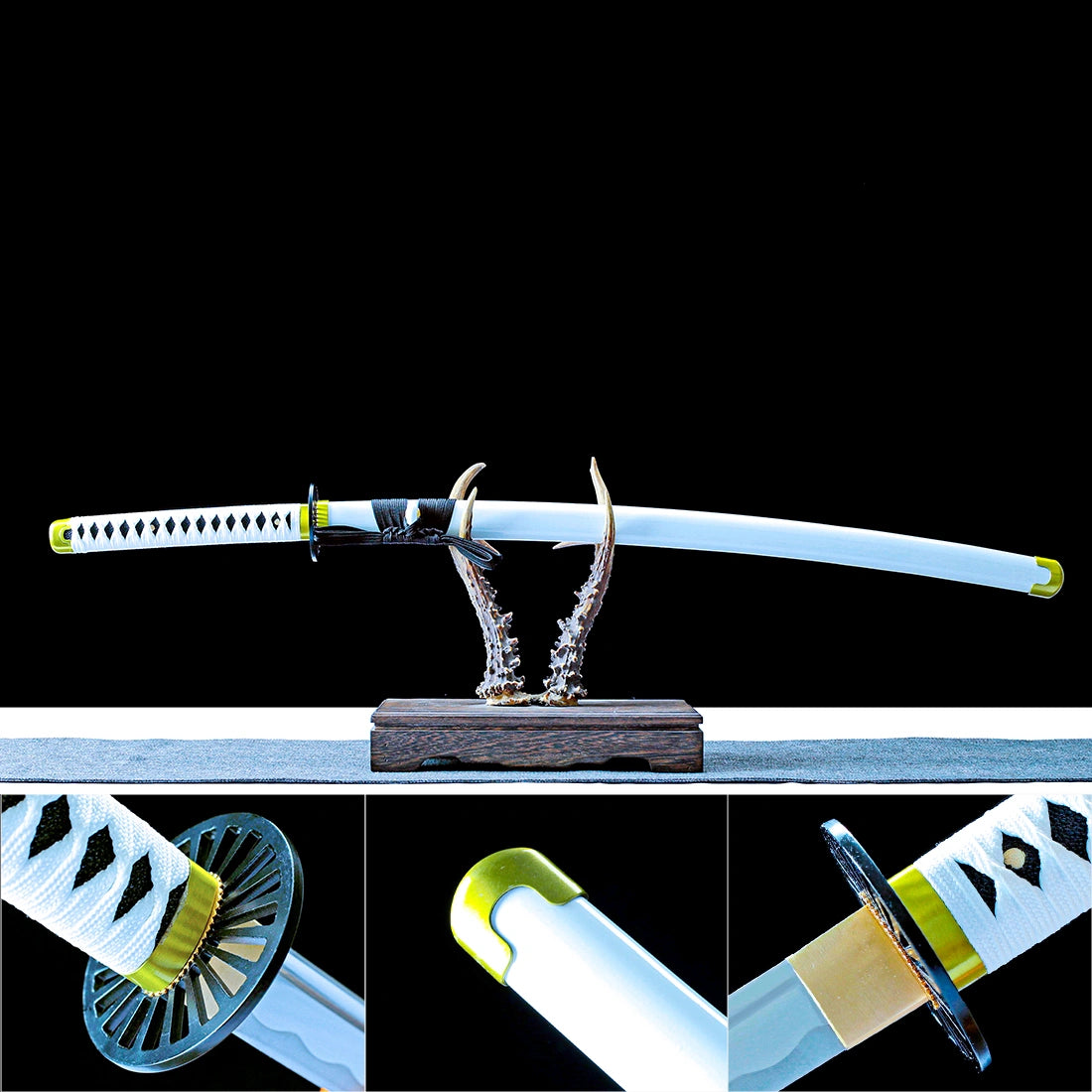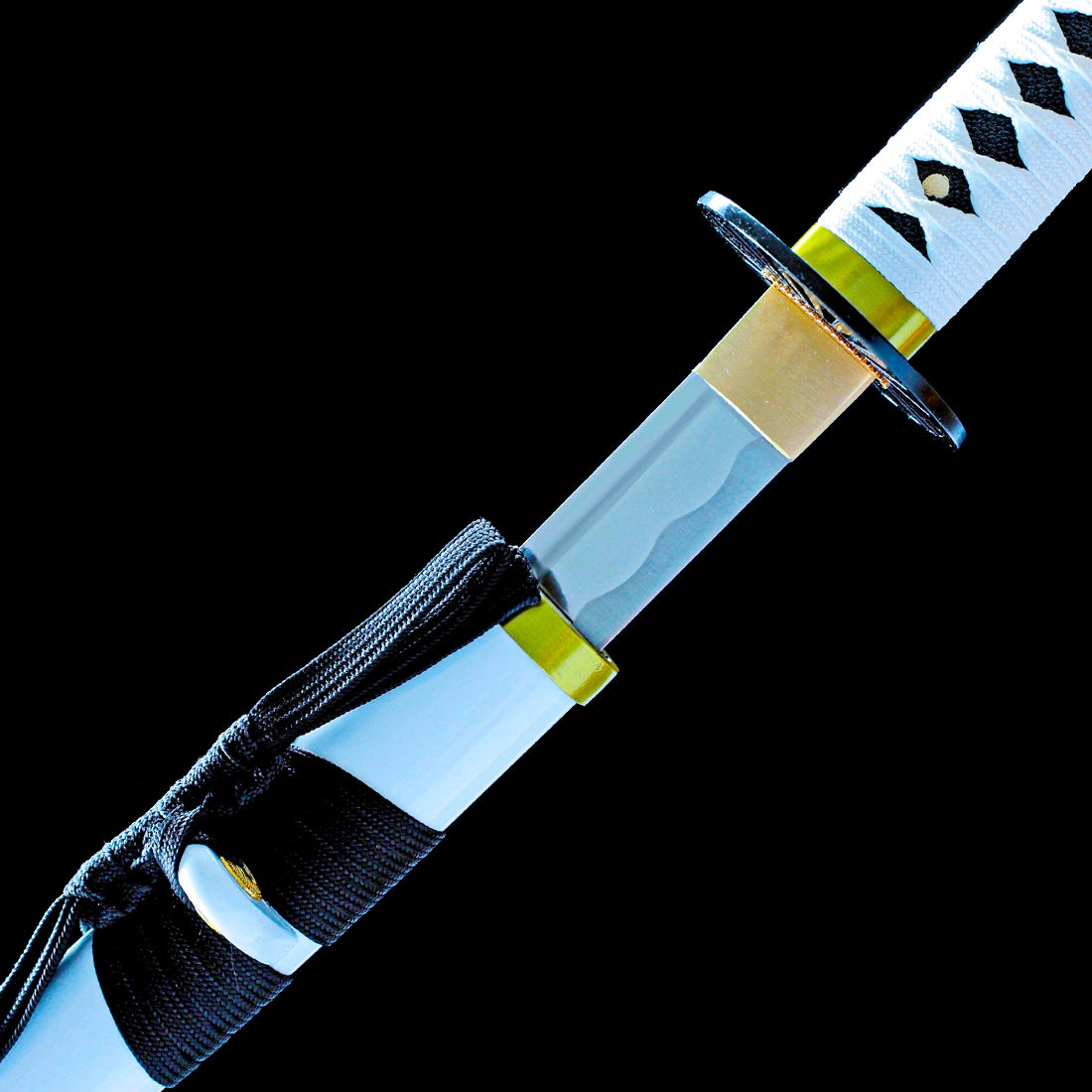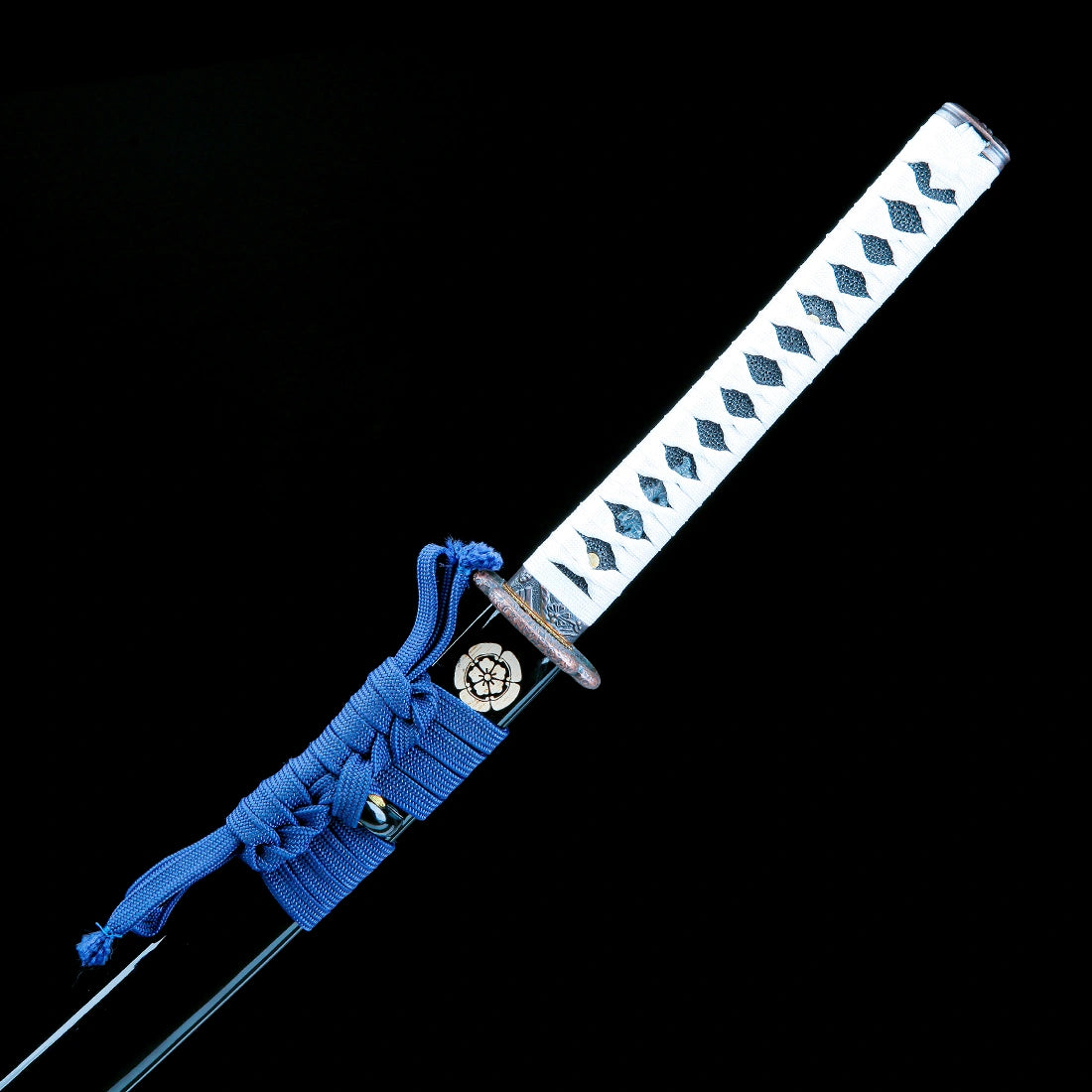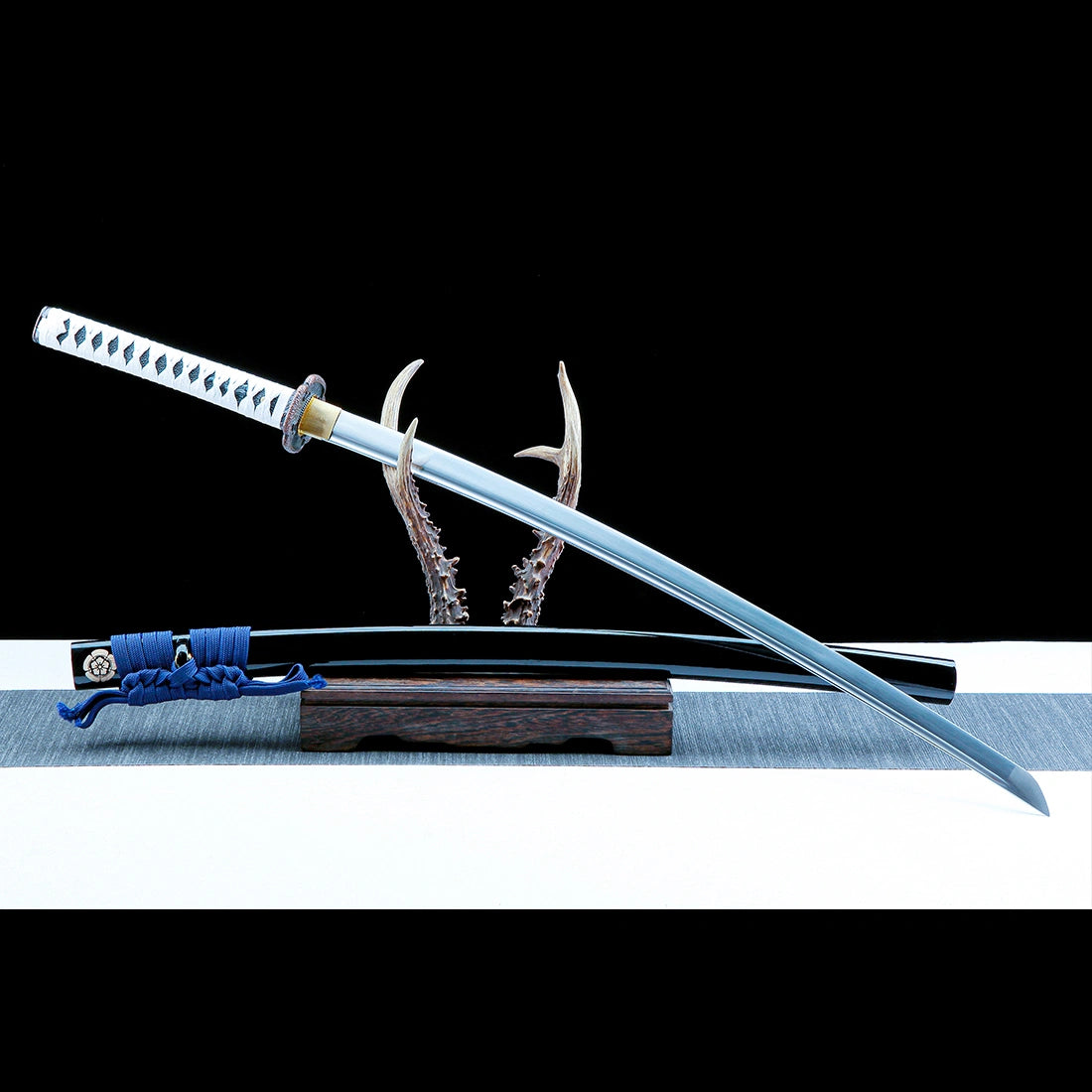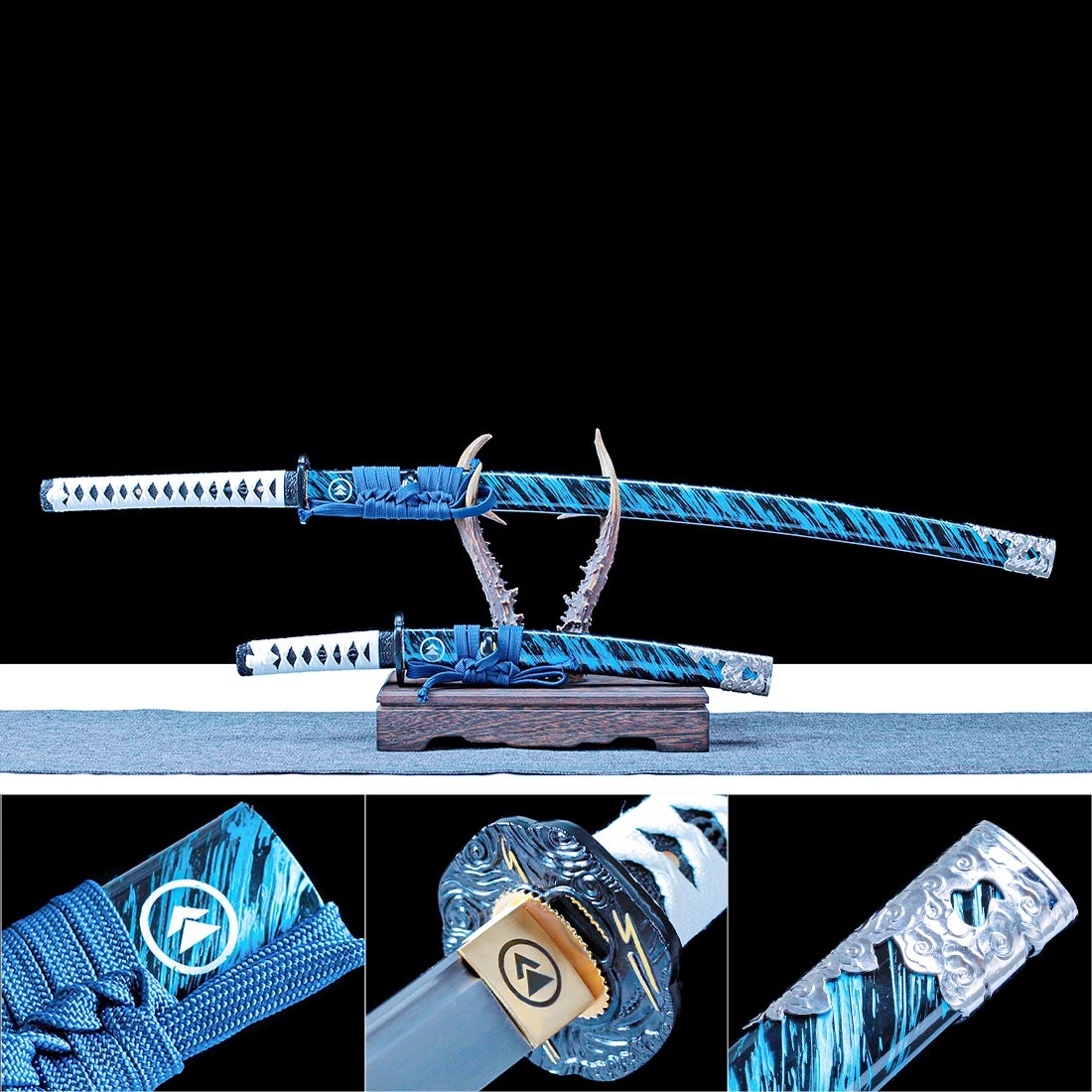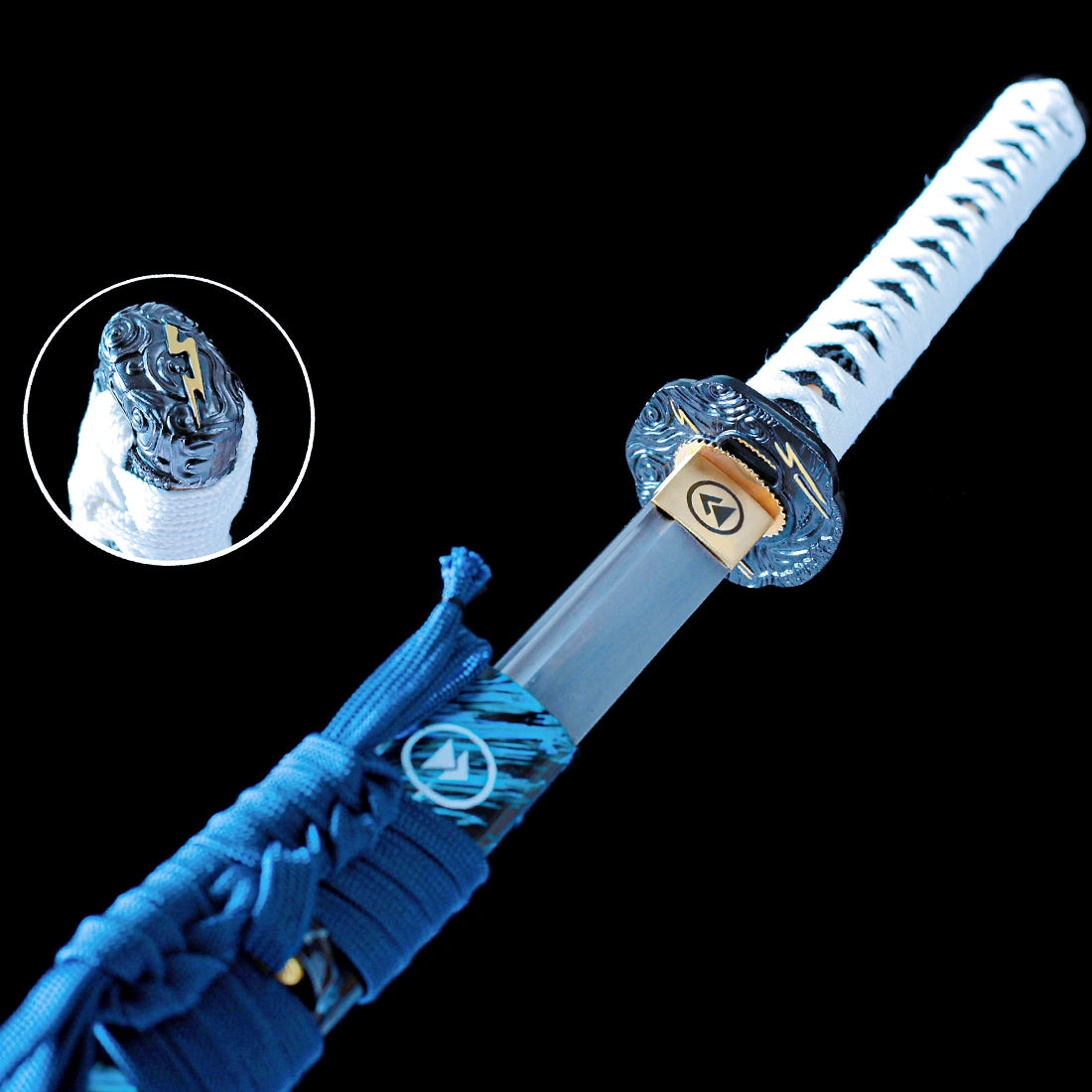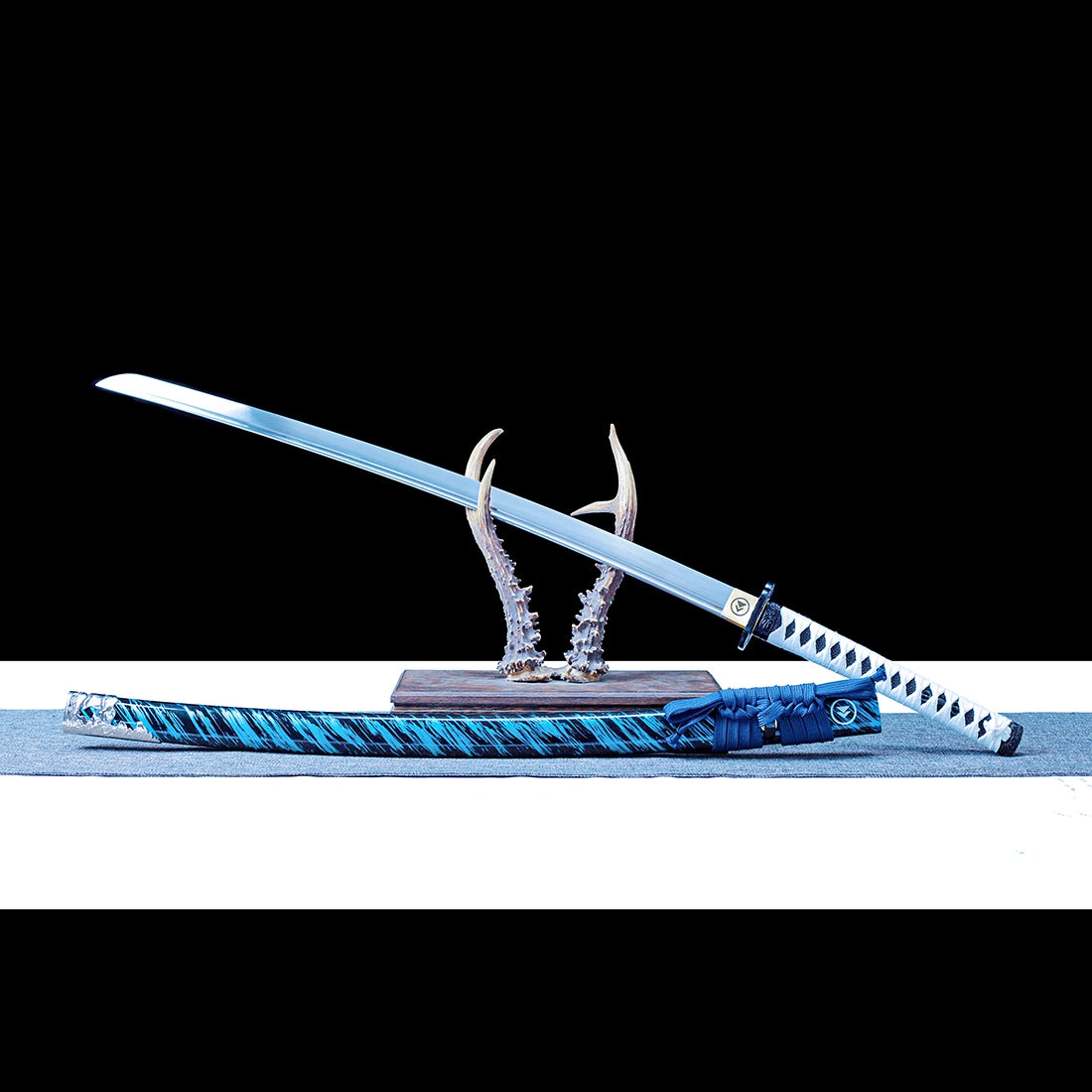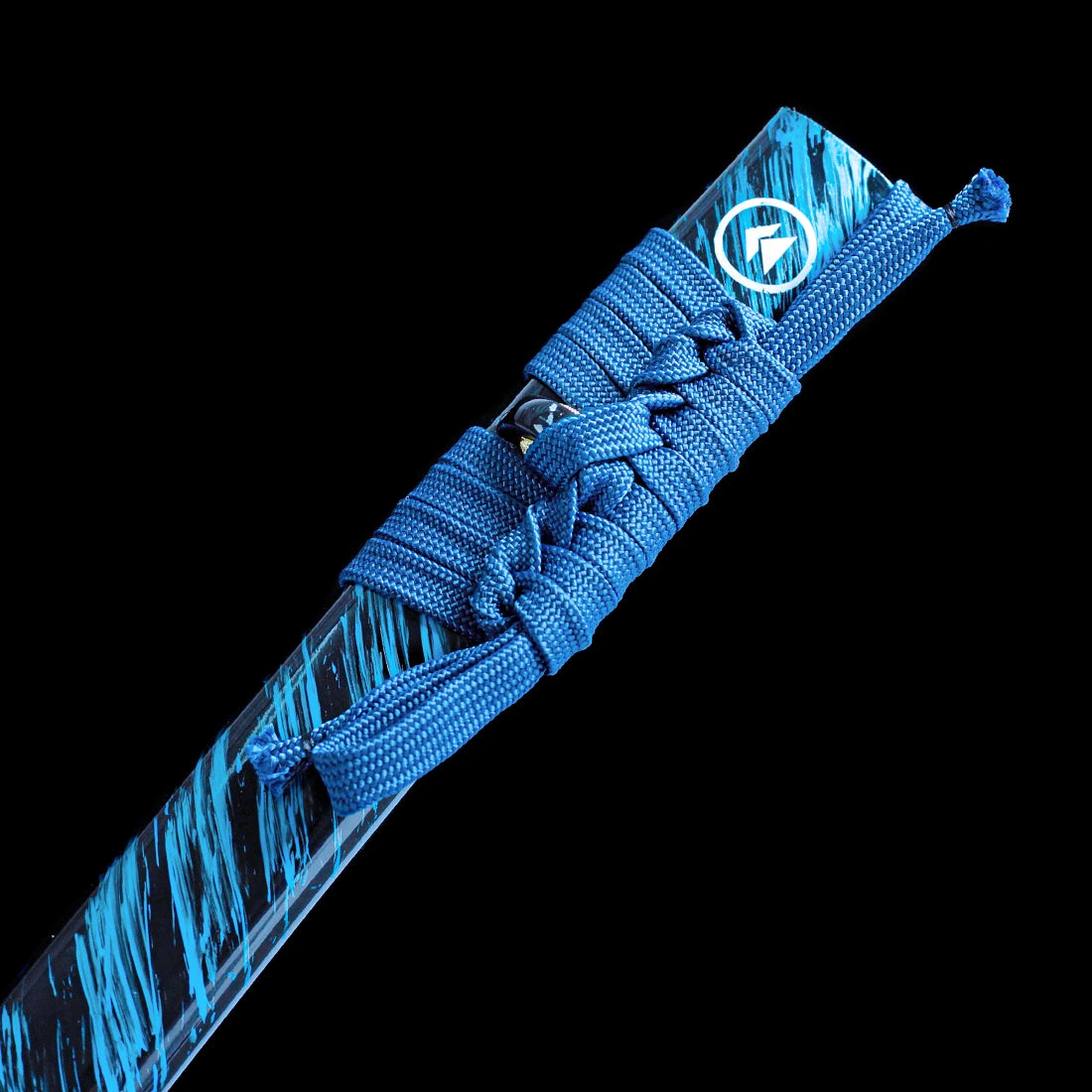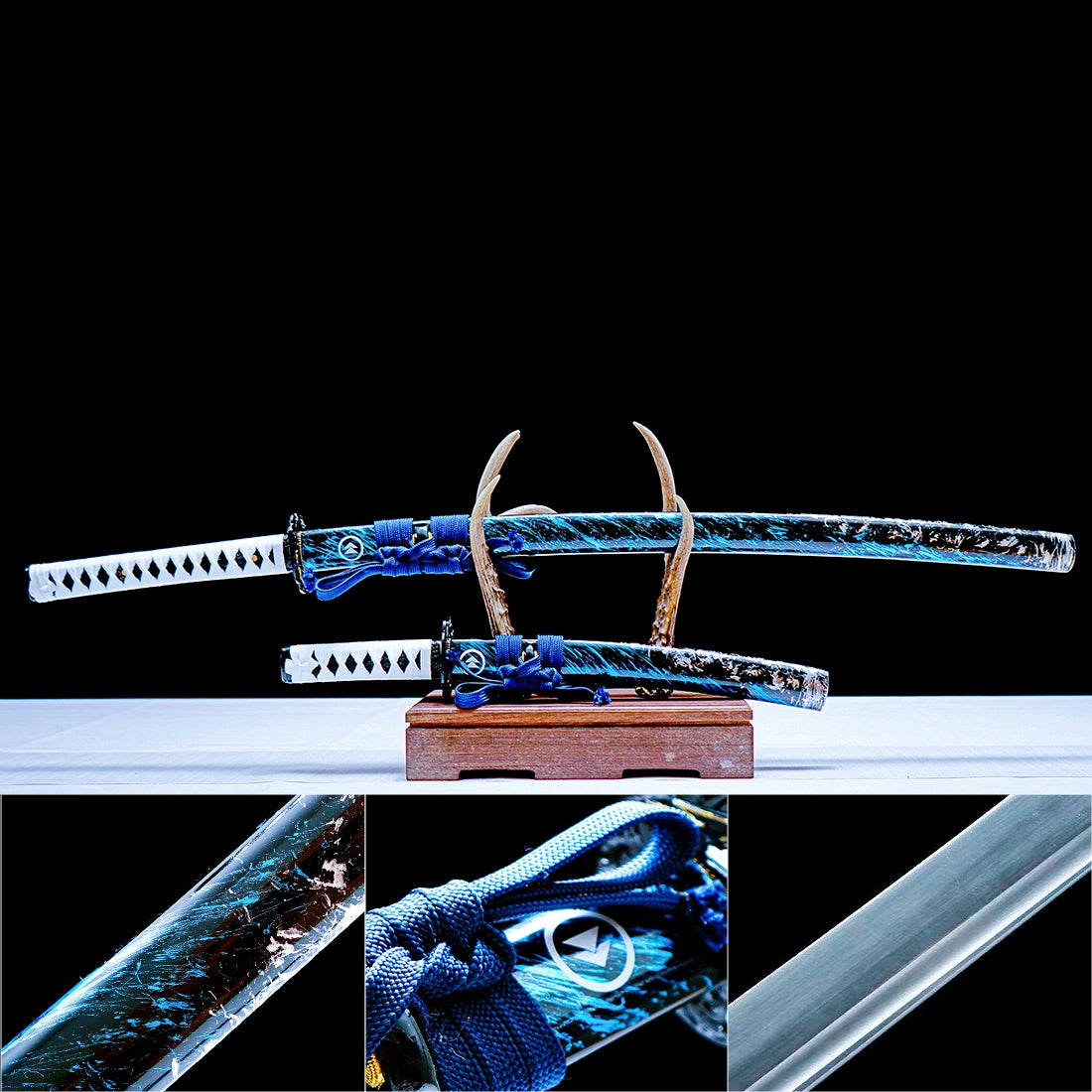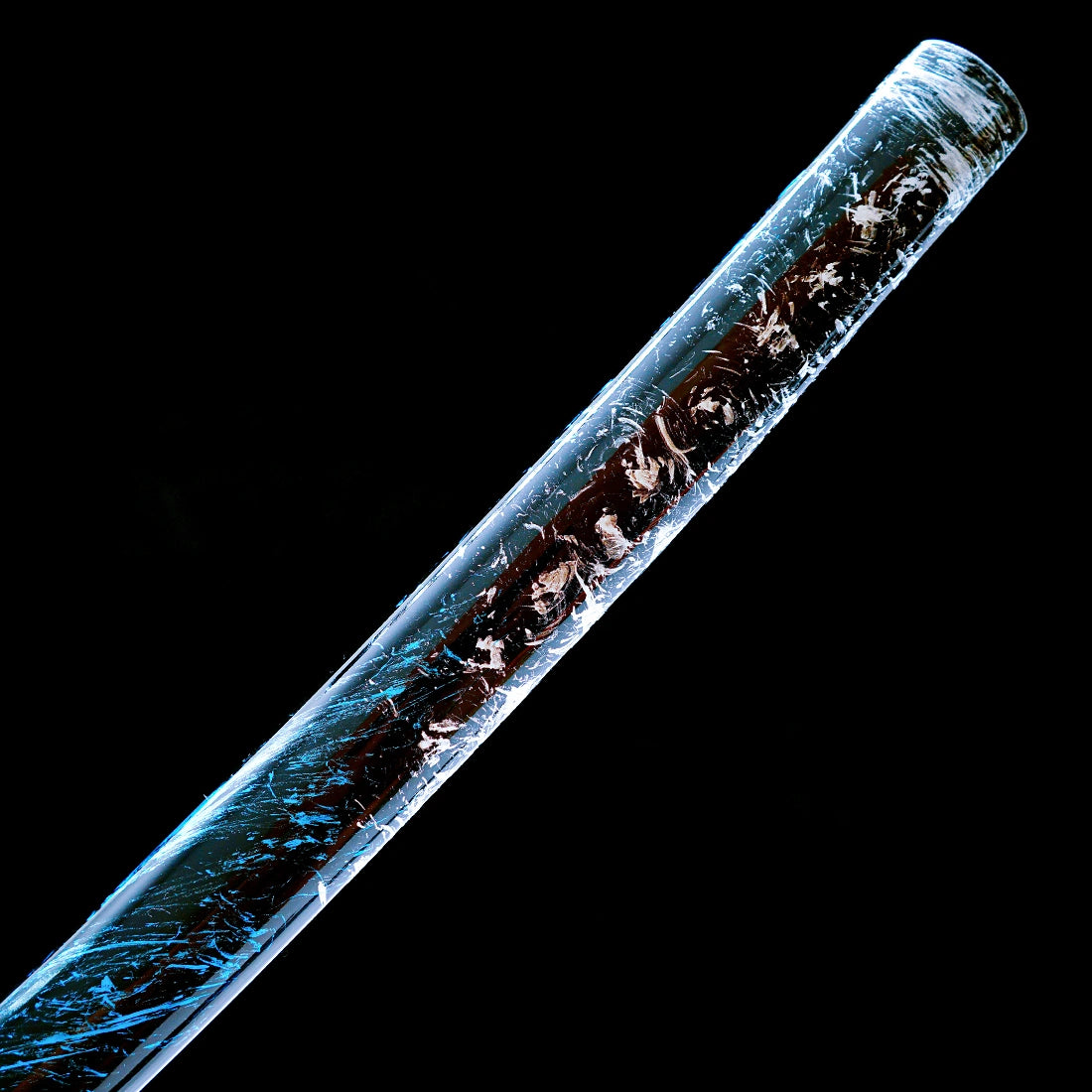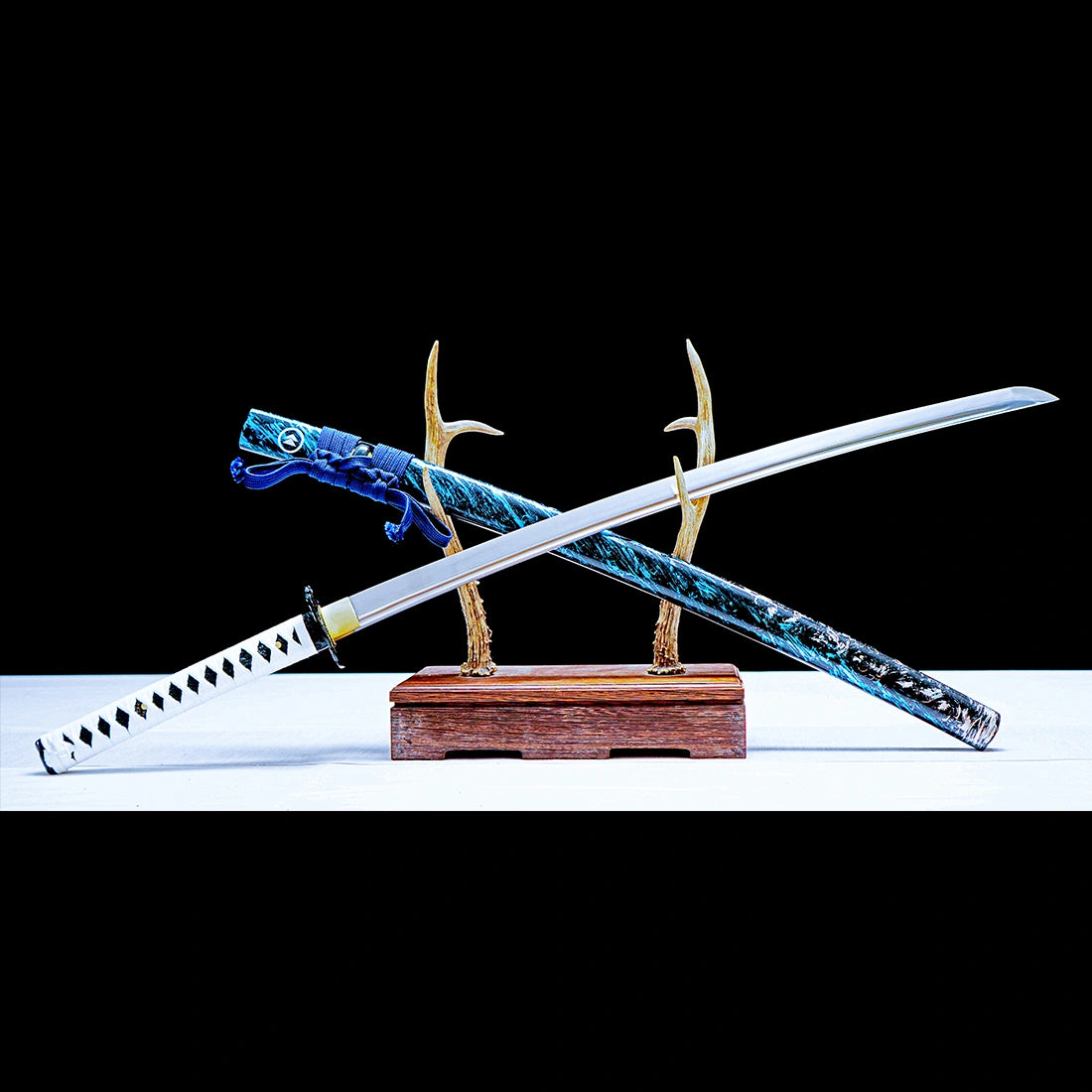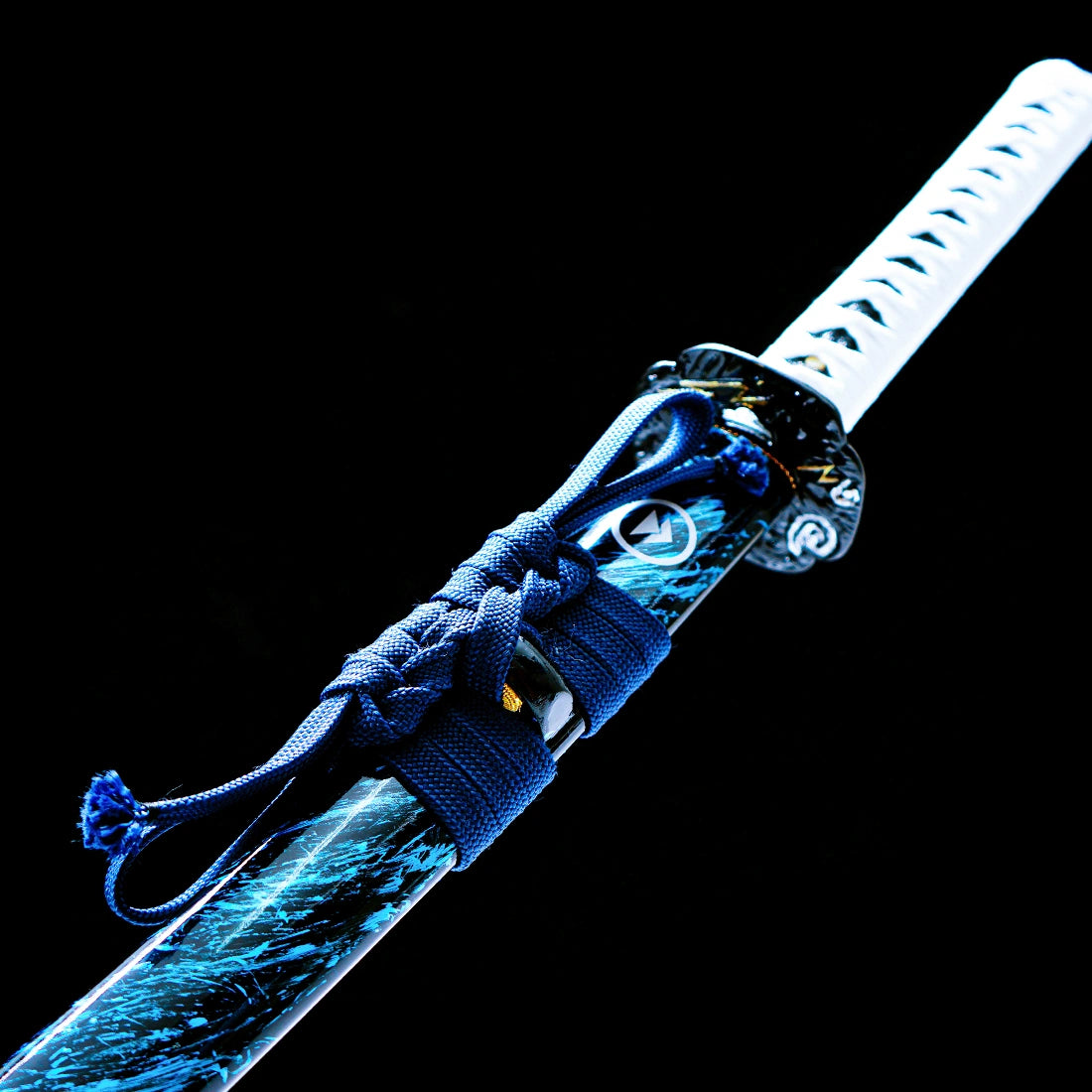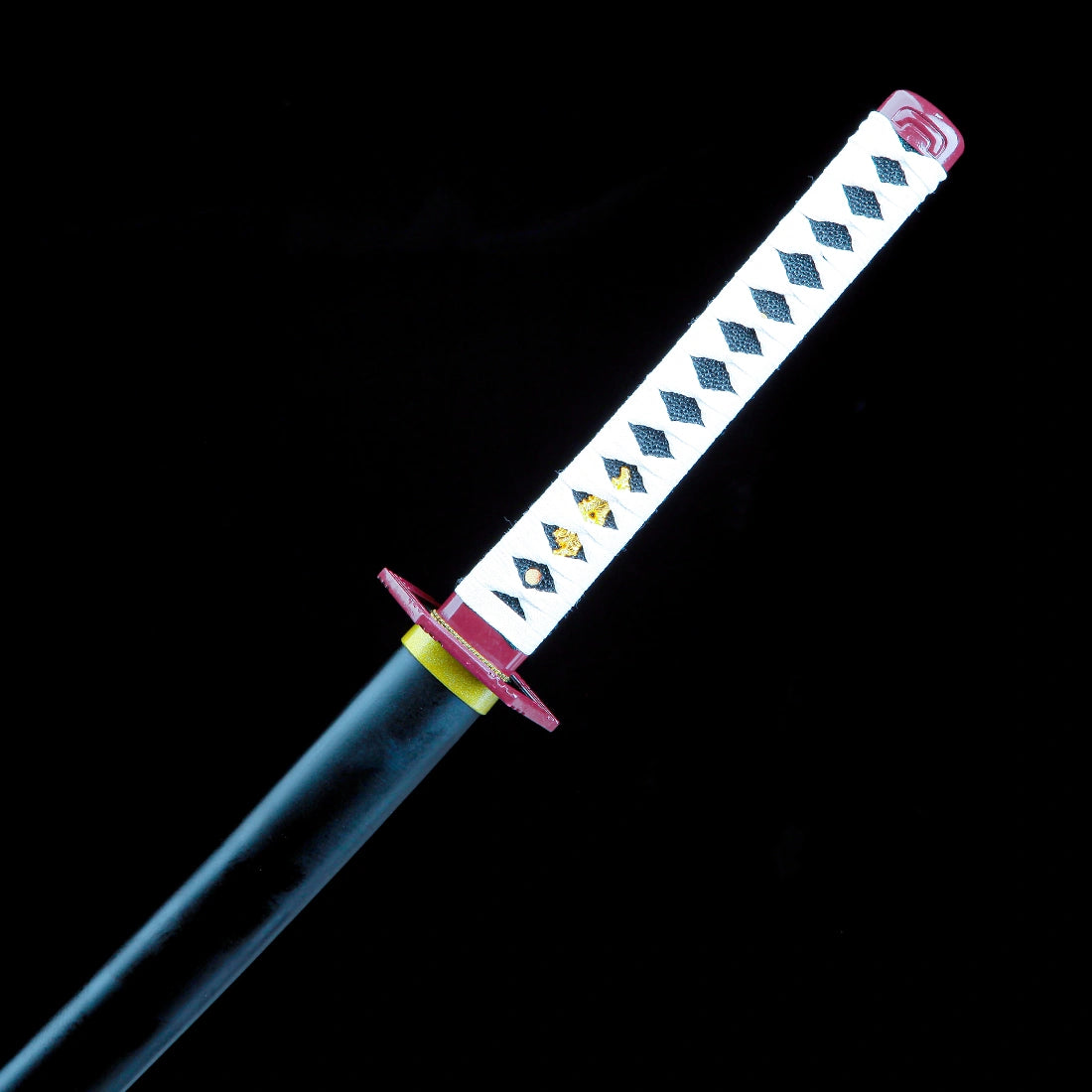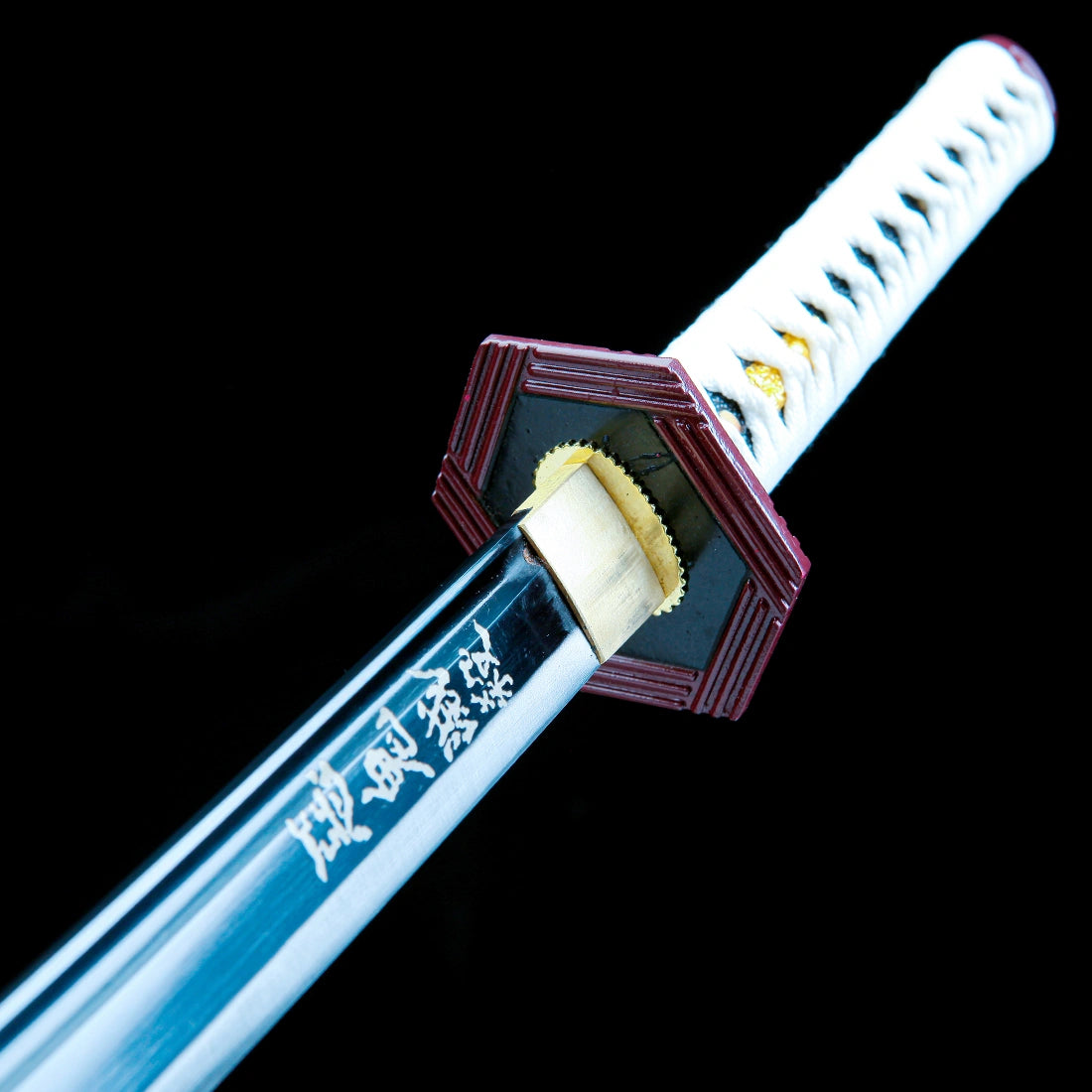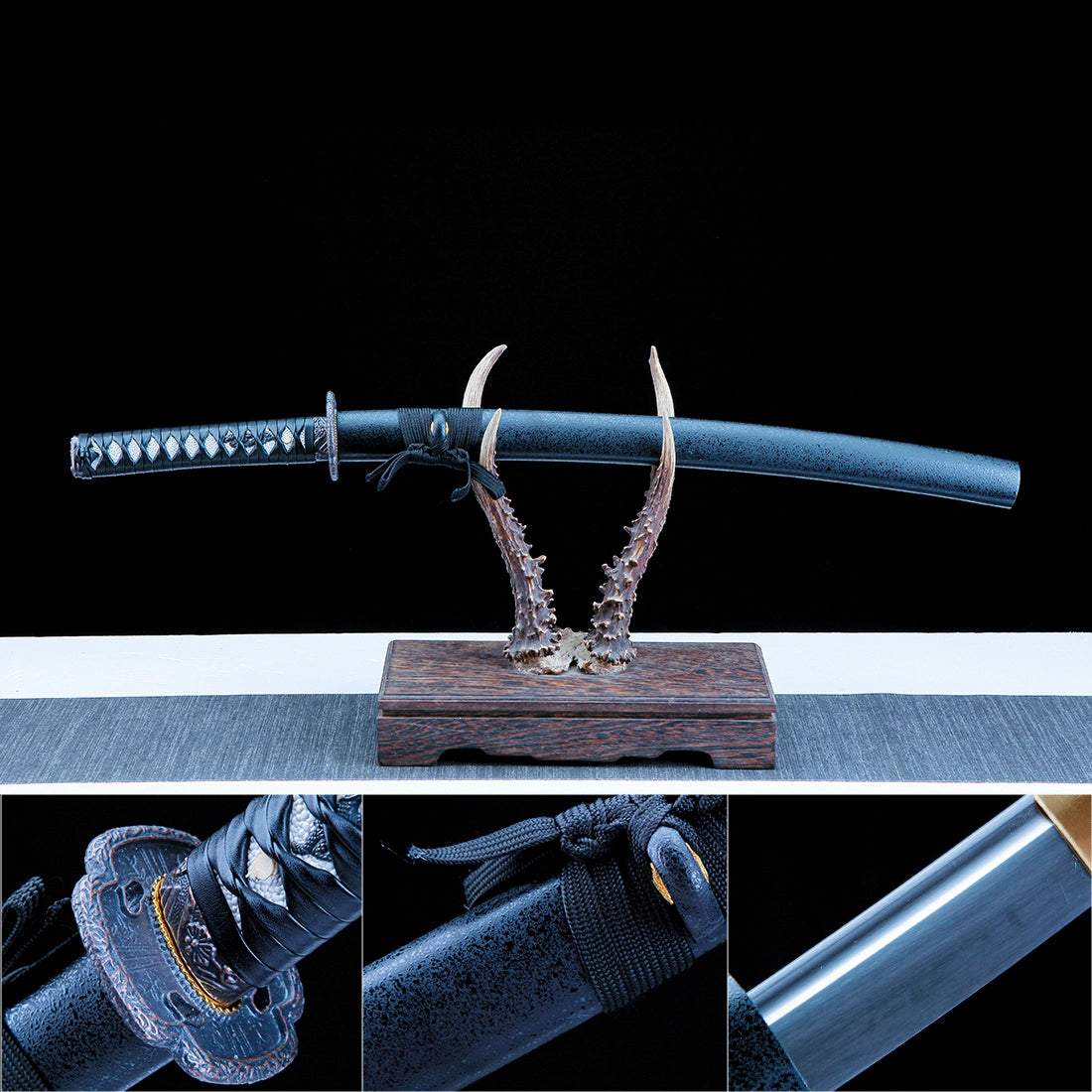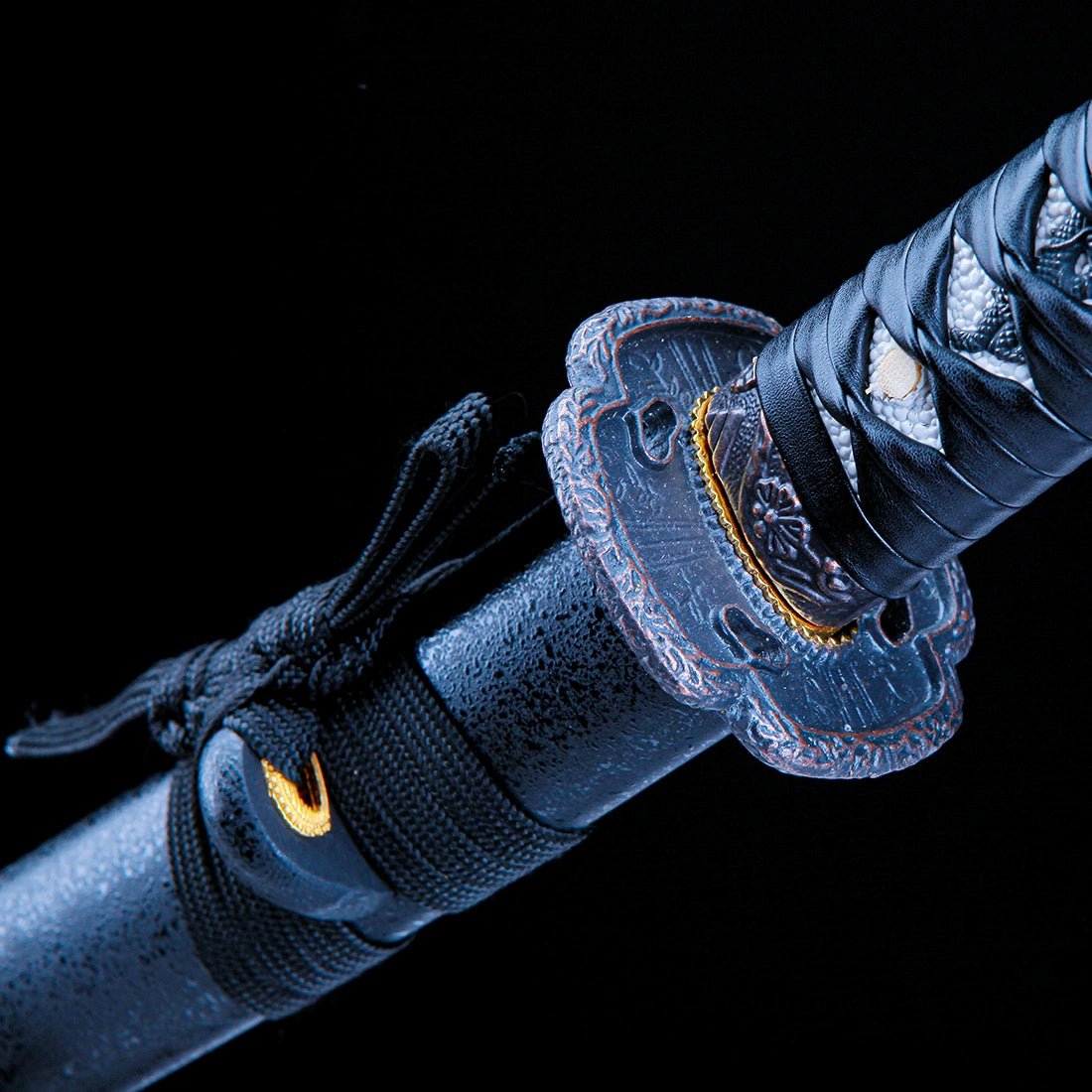Types of japanese swords
Types of Japanese Swords: Exploring Katana, Wakizashi, Tanto & More
Japanese swords (nihontō) are not just weapons but iconic symbols of Japanese culture and the spirit of the Samurai. Renowned for their exceptional craftsmanship and unique aesthetics, each sword is carefully forged and polished by skilled artisans, showcasing unmatched sharpness and durability. In this article, we explore the different types of Japanese swords, from the iconic katana to the ancient tachi(Japanese long sword), and other notable sword types.
1. Katana: The Iconic Japanese Sword
The katana is the most famous and recognizable of all Japanese sword types. With its curved, single-edged blade, the katana typically measures between 60 to 80 cm in length and was primarily used by Samurai for battle. Its design allows for swift, decisive slashes, making it perfect for close combat. The katana's sharpness and cutting ability made it the weapon of choice for many Japanese samurai swords throughout history.
2. Wakizashi: The Samurai's Backup Sword
The wakizashi sword is a shorter Japanese sword, usually between 30 to 60 cm in length, and was often carried alongside the katana as part of the traditional "daisho" set. This sword served as a backup weapon, useful for close-quarters combat or as a tool for seppuku (ritual suicide). The wakizashi (japanese short sword) combines the elegance of Japanese samurai swords with practical functionality.
3. Tanto: The Compact Japanese Sword
The tanto is a small but deadly Japanese sword, typically less than 30 cm in length. This short blade was used for self-defense, close combat, and ceremonial purposes. Due to its compact size, it could be easily concealed, making it a versatile weapon for Samurai and other warriors.
4. Tachi: The Predecessor of the Katana
Older than the katana, the tachi sword was a long sword, typically worn suspended edge-down during the Heian period (794-1185). It was designed for mounted combat and features a more pronounced curve than the katana. The tachi often bears an engraved signature on its tang (mei), offering a glimpse into its maker’s history and craftsmanship.
5. Naginata: The Japanese Polearm
Although not a sword in the traditional sense, the naginata holds an important place in Japanese weaponry. This polearm features a curved blade mounted on a long shaft, used primarily by Samurai warriors and warrior monks. The naginata is versatile, capable of both cutting and thrusting, and was effective in both close and long-range combat.
6. Kodachi: The Short Japanese Sword
The kodachi is a shorter sword, typically measuring between 45 to 60 cm in length. It was used as a secondary weapon during combat, or for quick strikes. The kodachi offered Samurai greater maneuverability and was often carried alongside a longer sword like the katana.
7. Nodachi: The Great Japanese Sword
The nodachi is a massive sword, typically over 90 cm in length, used primarily on battlefields. Due to its size, it was highly effective in open-field combat, especially for cutting down enemies on horseback. However, the nodachi was less suited for close-quarter fighting.
8. Iaido Sword: The Sword of the Martial Art
The Iaido sword is a specific type of katana used in the martial art of Iaido, which emphasizes the technique of drawing and cutting in one swift motion. Iaido swords are typically lightweight, well-balanced, and razor-sharp to allow for precise and controlled movements.
9. Ninjato: The Ninja’s Blade
The ninjato sword is the traditional weapon of the ninja, known for its practicality and stealth. Unlike the curved katana, the ninja sword typically has a straight blade and a shorter length, making it ideal for quick, silent strikes. Its design emphasizes concealability and ease of use in tight spaces.
Key Takeaways on Japanese Sword Types:
- Japanese sword types vary greatly in size, shape, and function, each designed for specific purposes in Samurai culture and battle.
- The katana remains the most iconic, known for its long, curved blade and incredible cutting power.
- Wakizashi and tanto serve as companion swords, providing backup and versatility.
- Tachi and nodachi are historical swords used in earlier periods, while naginata remains a functional polearm.
By understanding these Japanese sword types, you can gain a deeper appreciation for the incredible craftsmanship and cultural significance behind each one.
How to make a japanese sword?
Step-by-Step Japanese Sword Making
Making an authentic Japanese sword is a highly specialized and intricate process that involves several stages, from forging the blade to polishing and assembling the sword. The craftsmanship required is profound, with some swords taking months or even years to complete. Here is an overview of the process involved in crafting a true Japanese sword:
1. Preparing Materials
- Steel : The finest Japanese swords are typically crafted from high-quality steels such as T10 carbon steel, Damascus pattern steel, 1065 carbon steel, and other premium materials. These steels contain both high and low carbon content, which gives the blade its sharpness and the spine its flexibility, making the sword both functional and durable.
- Other Materials: These include the handle (tsuka), guard (tsuba), and scabbard (saya), which are carefully selected based on the design and intended use of the sword in Japanese culture.
2. Forging the Blade
Japanese samurai swords are renowned for their sharpness and precision, which is why the forging process is critical. A swordsmith typically needs over 5 years of training to master the forging techniques. The sword's signature curve is achieved during the forging process, which is an essential characteristic of authentic Japanese samurai swords.
3. Differential Hardening
- Applying Clay: To achieve the characteristic hardened edge and softer spine, the swordsmith applies a layer of clay to the blade. This process, known as yaki-ire (焼入れ), ensures that the edge becomes very hard while the spine remains flexible. The clay is applied unevenly, with a thicker layer on the spine and a thinner layer on the edge.
- Heating and Quenching: After the clay is applied, the blade is heated to a red-hot temperature and then quickly cooled (quenched). The thicker clay on the spine cools slower, making it softer, while the thinner layer on the edge cools rapidly, hardening the blade. This differential hardening process creates the distinctive hamon (刃文) that marks the transition between the hard edge and the softer spine.
4. Polishing the Blade
- Shaping the Edge: The blade is carefully polished using several grades of whetstone, each finer than the last, to reveal the hamon and sharpen the edge. The polishing process is delicate and may take weeks, with each step requiring meticulous attention to detail.
- Final Touches: After polishing, the blade is checked for imperfections and refined. The final sharpening ensures that the sword is razor-sharp and ready for use.
5. Making the Handle (Tsuka)
- Crafting the Tsuka: The handle of the sword is made from wood, often wrapped with same (rayskin). The handle is then tightly wrapped with ito (cord), providing a secure and comfortable grip.
- Attaching the Tang (Nakago): The tang, or nakago, of the sword is inserted into the handle and secured with mekugi (bamboo pegs), ensuring that the blade and handle are firmly connected.
6. Making the Guard (Tsuba)
- Crafting the Tsuba: The guard, or tsuba, is typically made from iron, steel, or brass. It serves both as a protective feature and a decorative element, with intricate designs often inspired by nature, mythology, or historical themes.
- Attaching the Tsuba: The tsuba is placed between the blade and handle and is securely fixed to ensure it doesn’t loosen during use.
7. Making the Scabbard (Saya)
- Crafting the Saya: The scabbard, or saya, is made from wood and carved to fit the blade perfectly. This allows for smooth insertion and removal of the blade without causing damage.
- Lacquering and Decoration: Once carved, the saya is lacquered to protect it and give it a polished finish. The exterior may also be decorated, depending on the sword's intended purpose and the owner's preference.
8. Final Assembly and Polishing
- Once all parts are completed, the sword is assembled, including fitting the blade into the handle, attaching the tsuba, and placing the sword into the saya.
- The sword is then fine-tuned to ensure all parts fit together perfectly and function as intended. A final round of polishing and sharpening ensures the blade remains in optimal condition.
Making an authentic Japanese samurai sword is a form of art that requires years of training and expertise. Each sword is a unique masterpiece crafted with great attention to detail at every stage. From the forging process and differential hardening to the polishing and assembly, each step contributes to the sword’s beauty, sharpness, and durability. Whether used in battle or displayed as a work of art, crafting a Japanese samurai sword is a true testament to the skill and dedication of the swordsmith.
Why did japanese samurai carry two japanese swords?
Why Samurai Carried Two Japanese Swords: Tradition, Honor, and Practicality
Japanese samurai carried two swords, a practice rooted in both tradition and practicality, and it was a key feature of their identity. The two swords typically consisted of a katana (Japanese long sword) and a wakizashi (Japanese short sword), both of which are examples of Japanese swords crafted with unparalleled skill. This dual sword tradition became widespread during the Heian period and remained a hallmark of samurai culture throughout the Edo period. Here are the key reasons for carrying Japanese swords:
Symbol of Samurai Status:
Carrying two Japanese swords was a symbol of the samurai's elevated social position. The katana represented their authority, while the wakizashi signified their personal honor and responsibility. This dual sword arrangement set them apart from commoners and was a vital part of their identity in Japanese society.
Practical Use:
- Katana: The long sword, or samurai sword, was primarily used for combat, prized for its ability to deliver powerful strikes at a distance. It exemplified the craftsmanship of Japanese samurai swords with its curved blade and exceptional sharpness.
- Wakizashi: The shorter sword, or wakizashi, was used in close-quarter combat and was more manageable in tight spaces. It was also an everyday tool, serving practical purposes and functioning as a backup weapon.
Seppuku (Ritual Suicide):
A wakizashi was often used in the practice of seppuku, a ritual suicide meant to preserve honor. The Japanese sword's design made it suitable for such a delicate and critical task, underscoring the profound cultural importance of these blades.
Cultural and Ceremonial Importance:
The tradition of carrying two Japanese swords became a deeply ingrained part of samurai culture. It represented not only their martial skills but also their loyalty, honor, and readiness to face any challenge, whether in battle or in maintaining their dignity.
In essence, the two-sword tradition of carrying a katana and a wakizashi is a key aspect of what defines authentic Japanese swords—they are symbols of the samurai's code of honor, mastery in combat, and cultural significance, with each blade playing an essential role in their daily life and ceremonial practices.
How to identify japanese swords?
How to Identify a Japanese Sword: Key Features and Authentication Methods
Japanese swords, renowned for their craftsmanship and historical significance, are among the most revered weapons in the world. However, with the proliferation of replicas and forgeries, it’s essential to know how to identify an authentic Japanese sword. This article will guide you through the key features that can help you recognize a genuine Japanese sword.
1. Blade Shape (Nagasa)
Japanese swords come in various shapes, with the most common being the Katana, Wakizashi, and Tanto. Each type has distinct length and curvature characteristics.
- Katana: Typically between 60-80 cm in length, with a pronounced curve and a single edge.
- Wakizashi: Shorter than the katana, usually 30-60 cm in length, also with a curved, single edge, often paired with a katana.
- Tanto: A smaller blade, under 30 cm, typically used for close combat or self-defense.
2. Signature (Mei)
Many authentic Japanese swords feature a mei, which is the signature of the swordsmith or the place of manufacture, carved into the tang (nakago) of the blade. The mei is usually written in kanji characters and can be a valuable indicator of authenticity. However, be cautious, as forged signatures do exist. A genuine mei is often intricately detailed, so it’s important to have it examined by an expert.
3. Blade Surface (Hamon)
The blade of a traditional Japanese sword often displays a distinctive temper line called the hamon, which is a result of the heat treatment process. The hamon creates unique patterns along the edge of the blade, visible as a wavy or straight line, which varies depending on the swordsmith and blade type. This is a key feature to look for when identifying an authentic Japanese sword.
4. Blade Polish (Togi)
A true Japanese sword will have a smooth, reflective surface, often the result of the traditional Japanese polishing method known as togi. The polished surface of the blade will often display a mirror-like finish and reveal the distinct layers of steel, which is a sign of high-quality craftsmanship. The polish helps highlight the hamon and other subtle features of the blade.
5. Handle (Tsuka) and Scabbard (Saya)
The handle (tsuka) of an authentic Japanese sword is typically wrapped with rayskin (samegawa) and covered with tightly wound cord (tsuka-ito), often made from silk or leather. The scabbard (saya) is usually made of wood, lacquered for a smooth, shiny finish. Authentic swords may also have intricate carvings or patterns on the scabbard.
- Handle: The fittings and wrapping of the handle are often intricate and serve as both a functional and decorative part of the sword.
- Scabbard: A genuine Japanese sword will often have a lacquered finish and may feature artistic details, making it visually distinctive.
6. Curvature (Sori)
The curvature of the blade, known as sori, is a distinctive feature of Japanese swords. This curve is essential for the sword’s cutting efficiency and is often quite noticeable. A typical katana, for example, will have a sori ranging from 1.5 to 2.5 cm. The curvature helps the sword perform better during cutting, making it one of the defining characteristics of Japanese swords.
7. Sword Fittings (Koshirae)
Each authentic Japanese sword comes with a unique set of koshirae, or fittings, including the tsuba (guard), fuchi (collar), and kashira (pommel). These parts often feature intricate designs that reflect the artistry of the swordsmith. The tsuba is typically made from metal, such as iron or brass, and can feature detailed artwork.
- Tsuba: The guard or handguard is often a decorative piece, featuring intricate patterns or symbols.
- Koshirae: The entire set of fittings, including the guard, collar, and pommel, should exhibit a high level of craftsmanship.
8. Material and Forging Process
Authentic Japanese swords are made from high-carbon steel, traditionally forged from tamahagane, a type of steel made from iron sand. The forging process of these swords involves folding the steel multiple times to remove impurities, making the blade stronger and more resilient. This folding process also creates distinct patterns in the steel, which are visible on the blade.
- Tamahagane Steel: Historically, this type of steel is used in the crafting of Japanese swords. The folding process gives the sword added strength and flexibility.
- Full Tang: Traditional Japanese swords are forged with a full tang, meaning the blade extends fully into the handle, providing greater durability and balance.
9. Historical Background and Certification
Many authentic Japanese swords come with a verified historical background and cultural significance. In Japan, swords created by renowned swordsmiths are often registered as national treasures or cultural properties. These swords may also come with a certificate of authenticity, typically issued by the NBTHK (Nihon Bijutsu Token Hozon Kyokai), which is the Japan Art Sword Preservation Society.
- Cultural Property: Some older swords, particularly those from famous swordsmiths, are considered national treasures and may come with a certificate of authenticity.
- Sword Certification: Authentic swords are sometimes accompanied by certificates from reputable organizations, ensuring their provenance.
10. Aging and Patina
Over time, genuine Japanese swords may develop a natural patina or oxidation on the tang and blade, which is a sign of age. However, this should not be confused with damage or rust. A well-maintained sword will show signs of aging, but excessive rust or corrosion may indicate that the sword is either fake or poorly maintained.
Conclusion:
Identifying a Japanese sword involves careful examination of its blade shape, material, craftsmanship, and other distinctive features. The signature, blade polish, hamon, and handle fittings all play an important role in determining authenticity. While it's possible to spot some of these characteristics on your own, it is always recommended to have the sword evaluated by an expert or a reputable dealer who specializes in Japanese swords.
If you're considering purchasing or collecting Japanese swords, understanding these key features will help you ensure that you're acquiring a genuine and historically significant piece.
Japanese sword fighting
Mastering the Basics of Japanese Sword Fighting
Japanese sword fighting, or Kenjutsu (剣術), is a traditional martial art that involves the use of the katana (Japanese sword). It has a rich history and is deeply rooted in Japanese culture, with various schools and techniques developed over centuries. Below are some key aspects of Japanese sword fighting:
1. Kenjutsu (剣術)
Kenjutsu is the classical swordsmanship practiced by samurai. It involves using the katana in combat and focuses on techniques for striking, blocking, and counterattacking. Kenjutsu was developed primarily for battlefield combat but has evolved into a form of self-defense and spiritual training.
2. Kendo (剣道)
Kendo is the modern, sport-oriented offshoot of Kenjutsu. It is a way to practice Japanese swordsmanship using bamboo swords (shinai) and protective gear (bogu). Kendo emphasizes discipline, respect, and mental clarity as much as physical skill. It is practiced worldwide and remains one of the most popular martial arts in Japan.
3. Iaido (居合道)
While Kenjutsu and Kendo are focused on combat and competition, Iaido emphasizes the art of drawing and cutting with a katana. Practitioners of Iaido train to draw their sword (iaigoshi) and strike in a single motion, focusing on speed, precision, and fluidity. Iaido is often seen as a form of moving meditation and a way to develop focus and control.
4. Techniques and Stances
Japanese sword fighting includes a variety of techniques, including:
- Zanshin (remaining mind): The awareness of one's surroundings.
- Kiri-gamae (cutting posture): A stance used to defend or launch attacks.
- Kiri (cut): Strikes made with the edge of the katana, typically aimed at vital areas.
- Kiri-otoshi (cut-drop): A technique where the sword is swung downward to break the opponent's guard or strike.
5. Mental and Spiritual Discipline
Sword fighting in Japan is not just about physical skill. It involves a deep mental and spiritual component, where practitioners learn about focus, respect, and the nature of combat. The kata (forms) practiced in both Kenjutsu and Iaido are designed to teach these principles while honing physical abilities.
6. Sword Techniques and Applications
Each sword style and school focuses on different aspects of sword fighting. Some schools emphasize cutting techniques, while others focus on defense or countering attacks. The application of these techniques is crucial in real combat and translates into a deep understanding of timing, distance, and control.
In sum, authentic Japanese sword fighting is not only about mastering the katana but also involves deep cultural, spiritual, and mental elements. Whether through Kenjutsu, Kendo, or Iaido, the practice of these martial arts teaches more than just combat skills; it provides a path to self-mastery and discipline.

